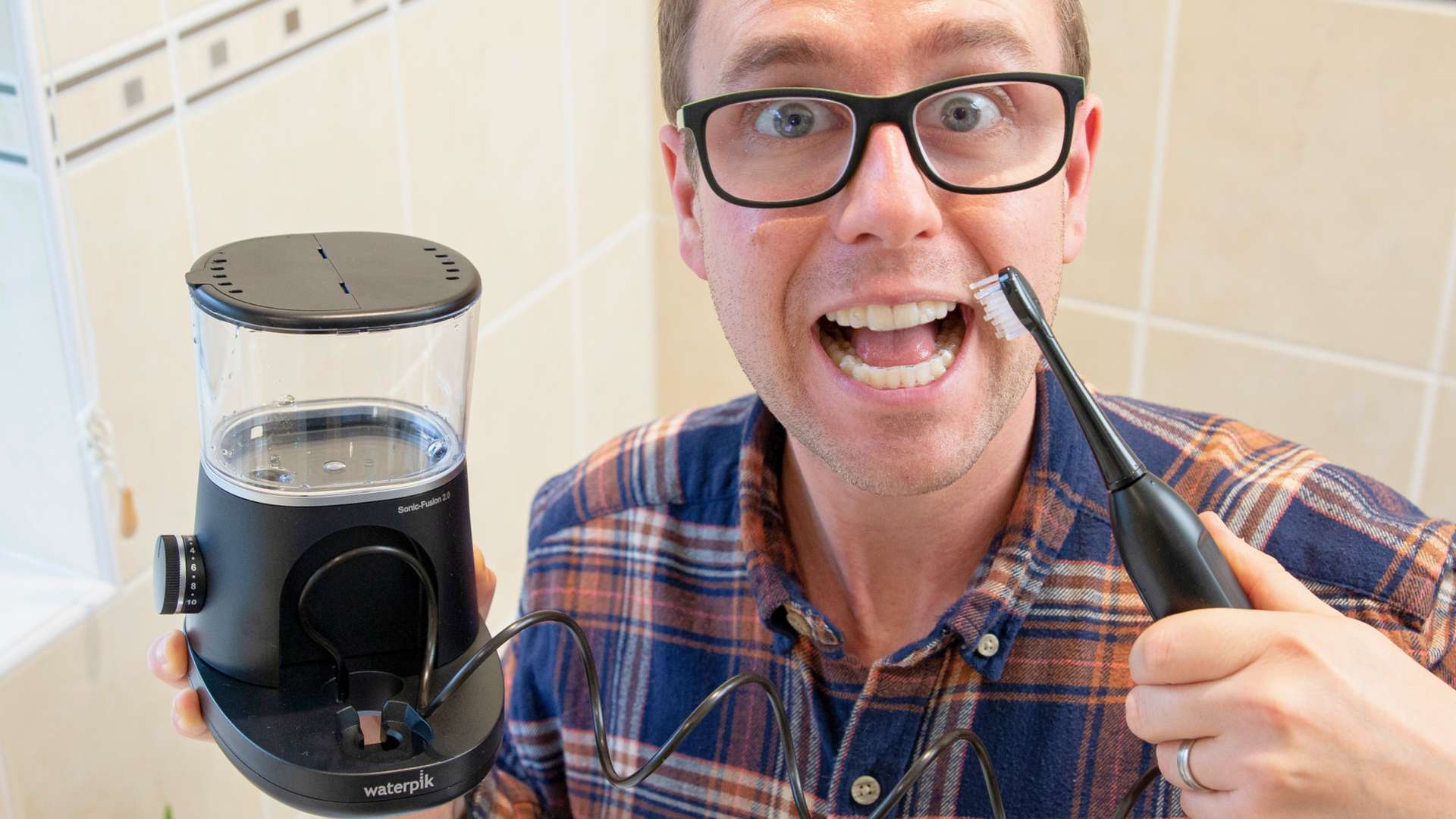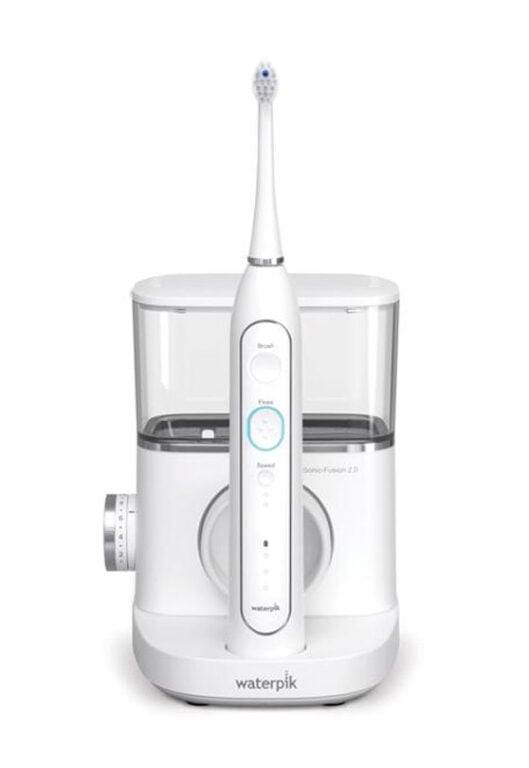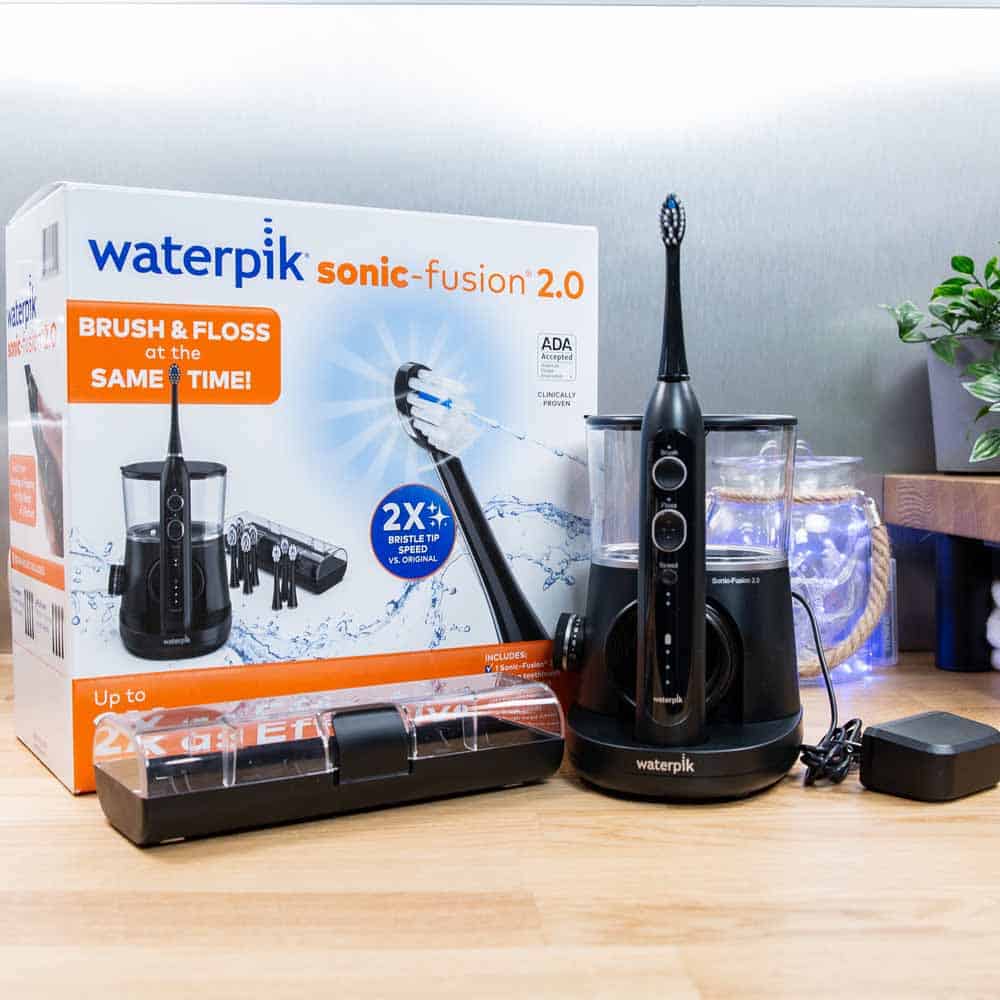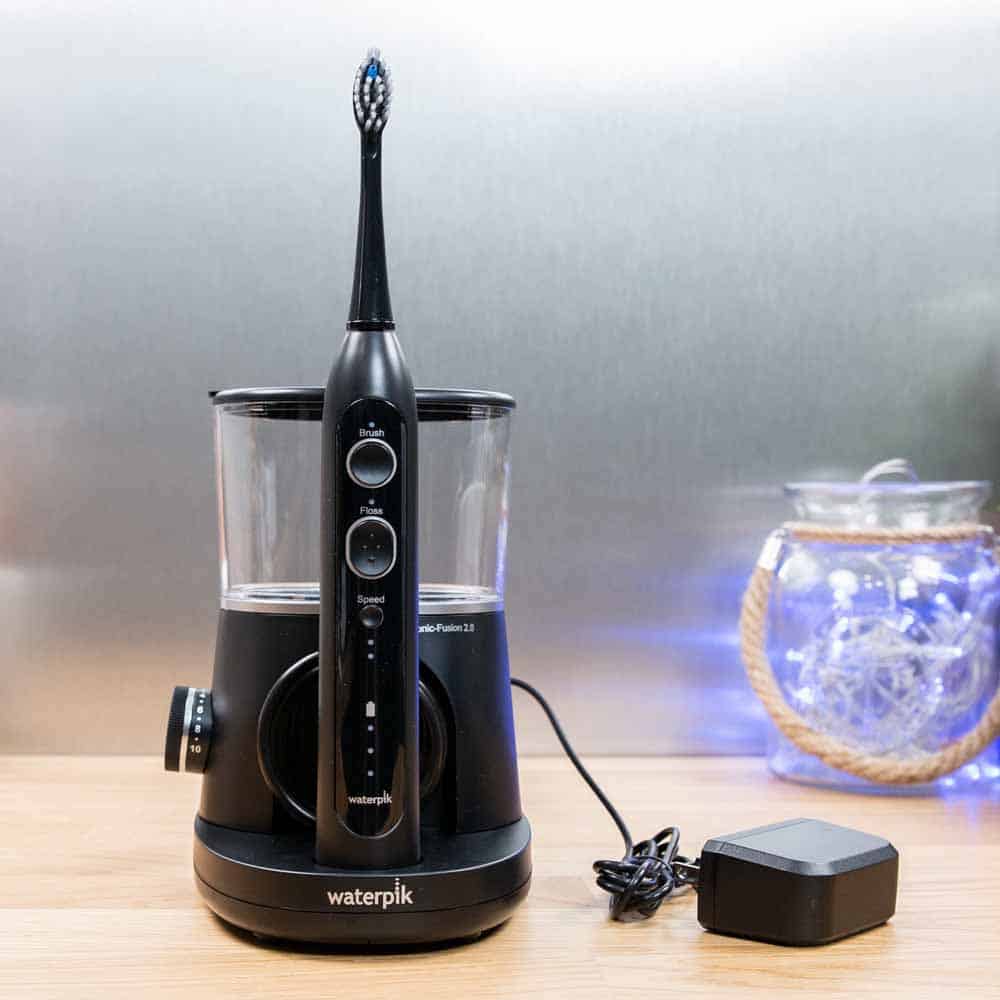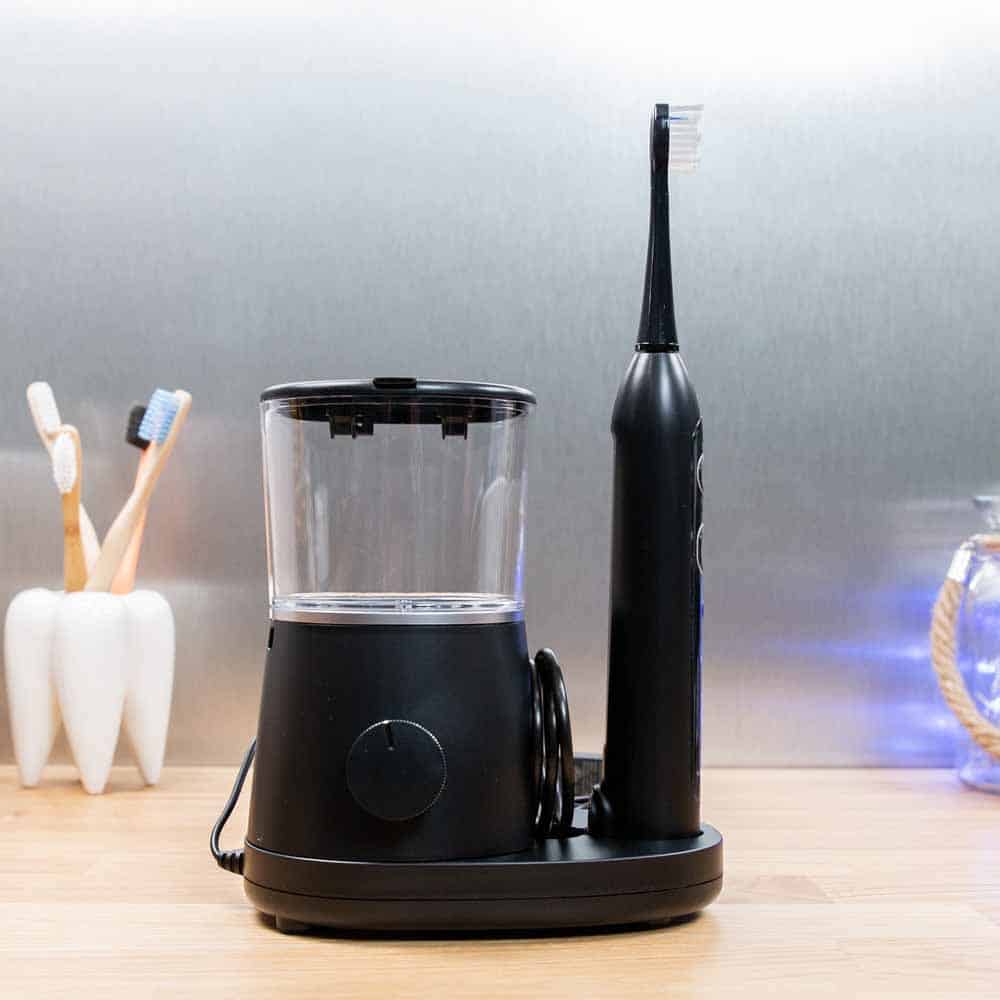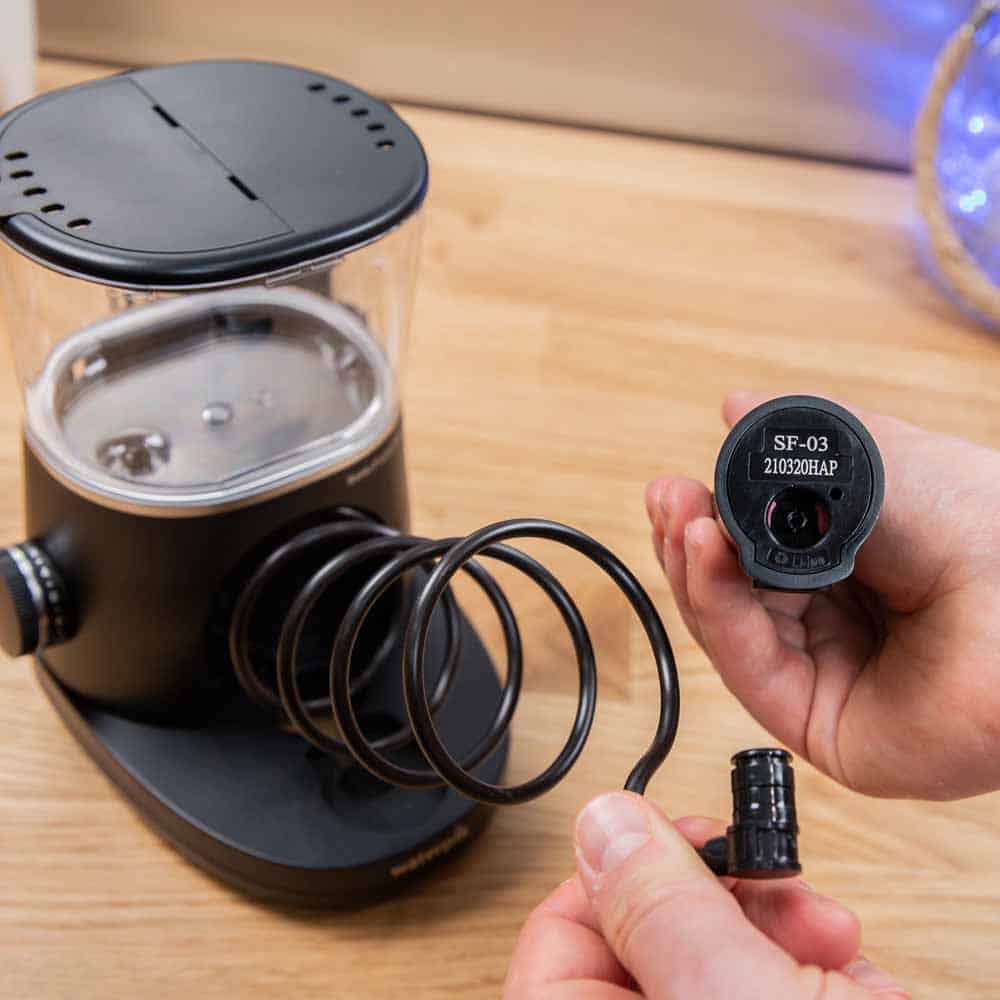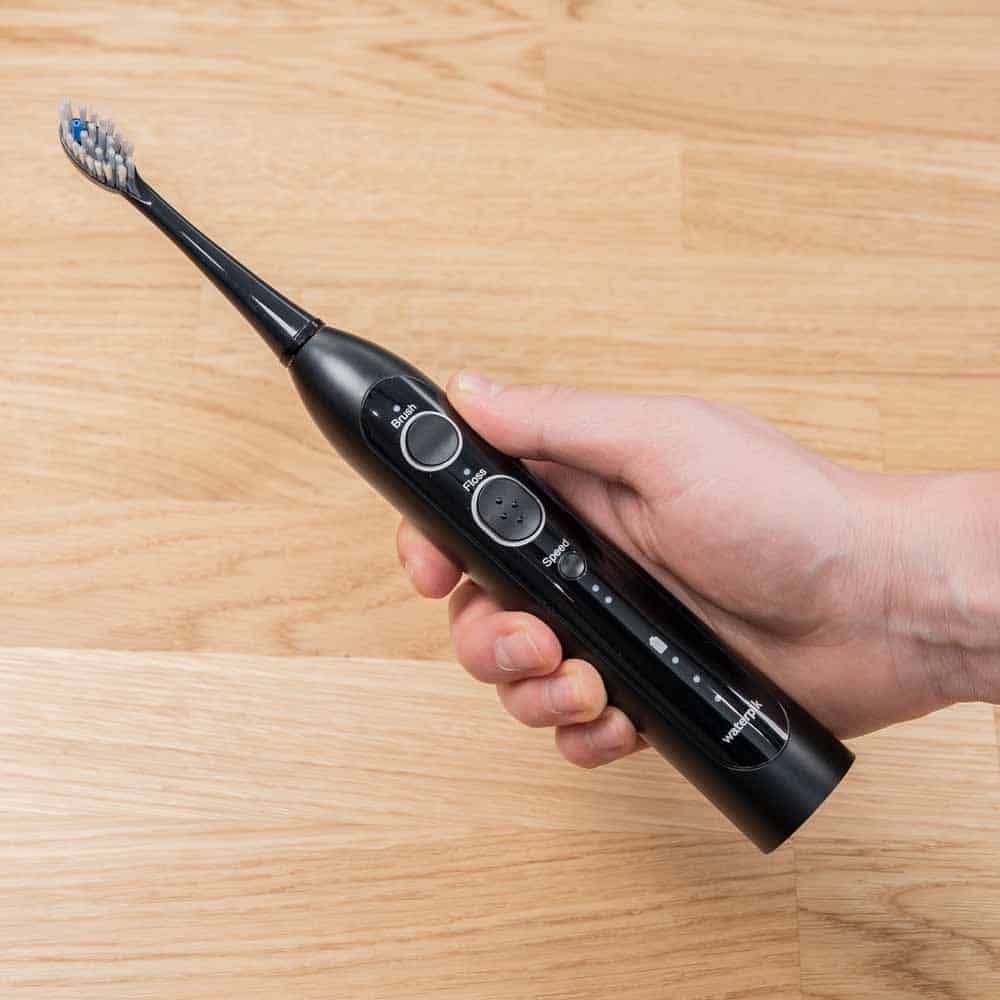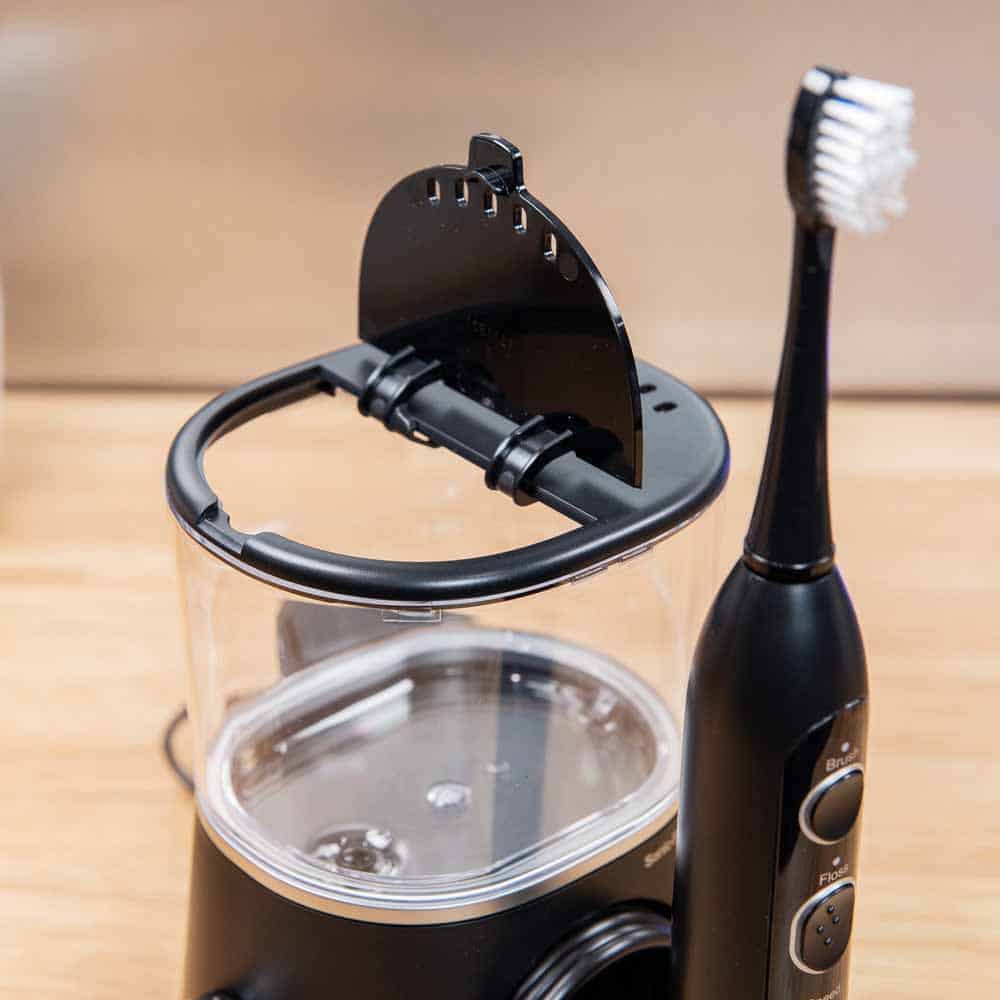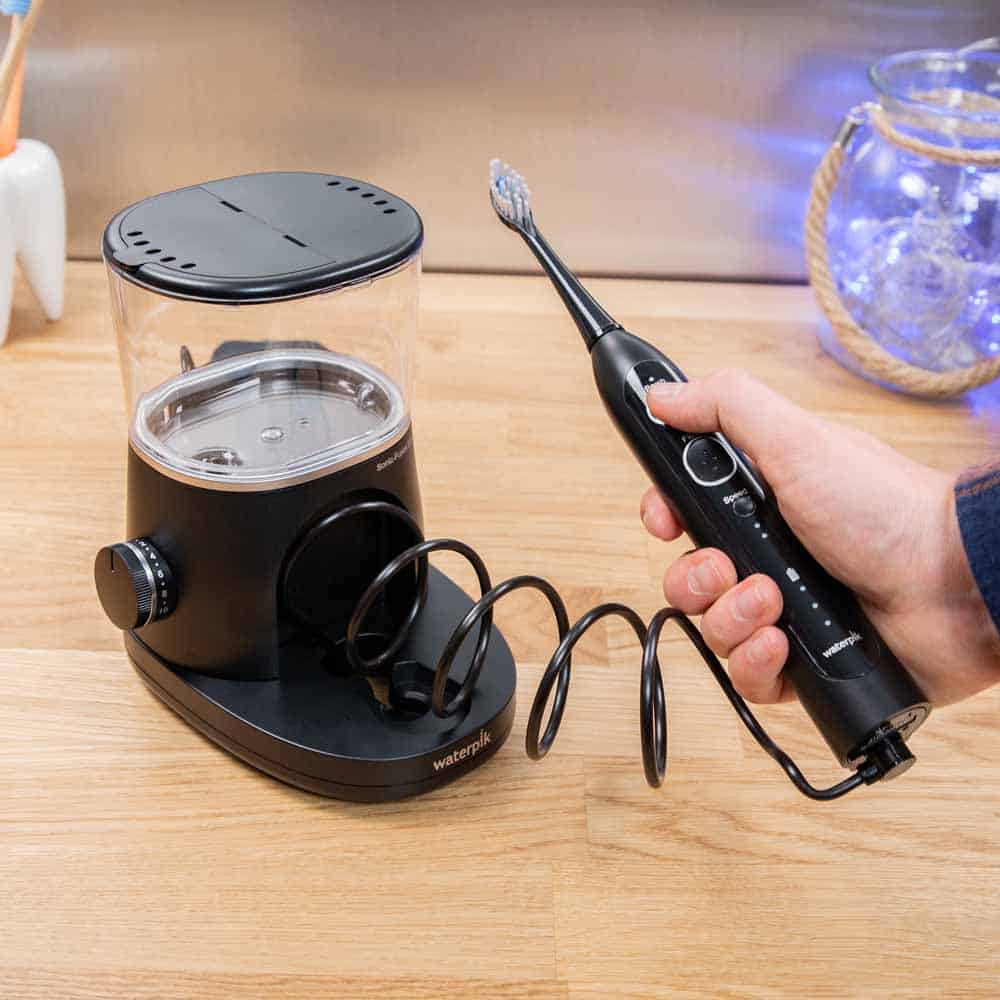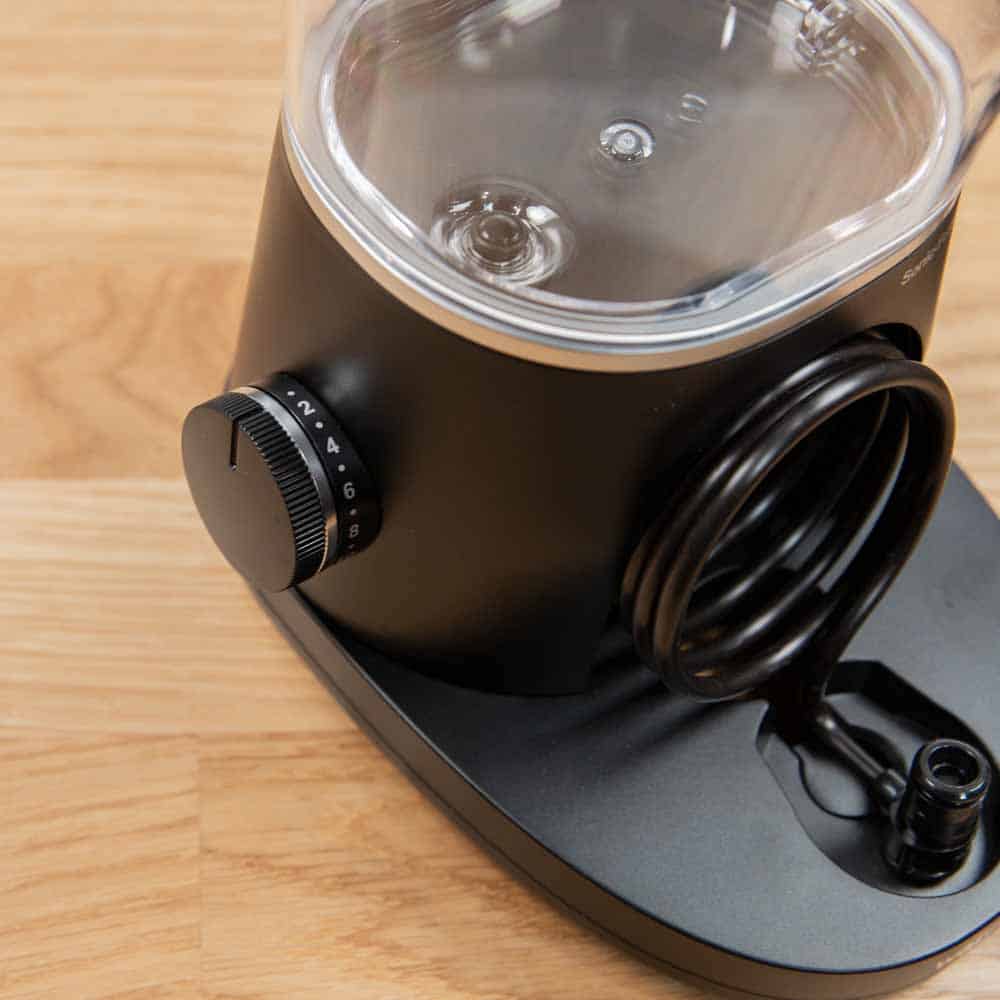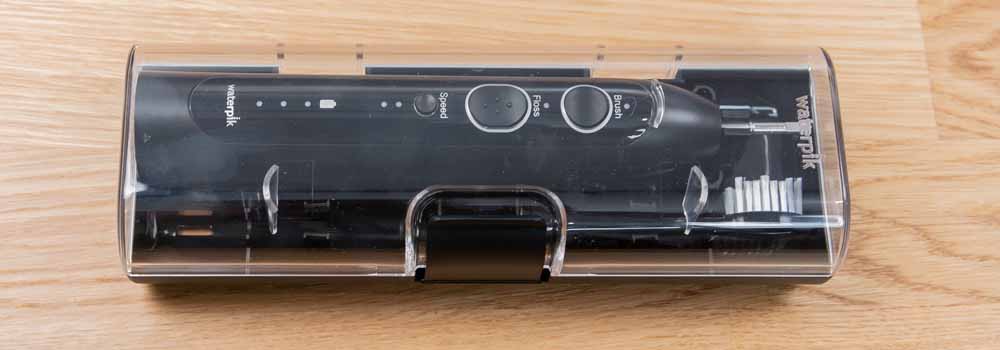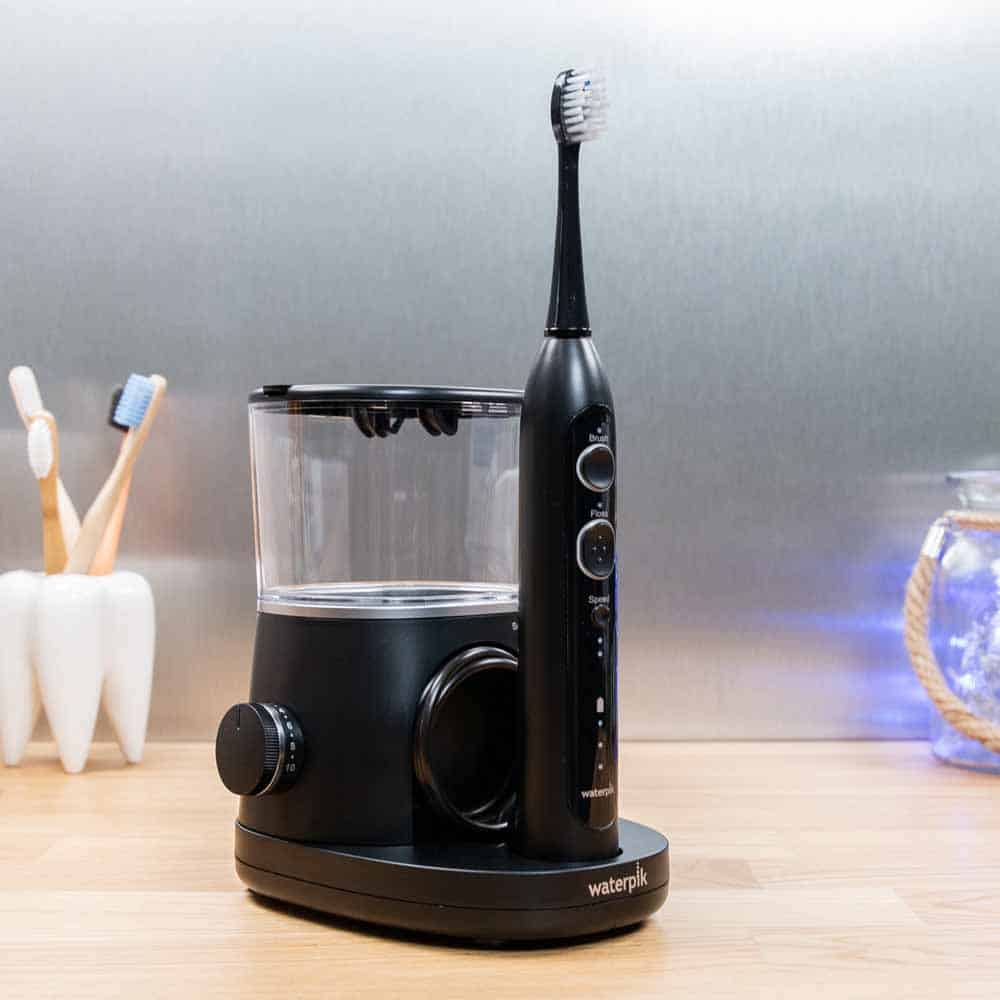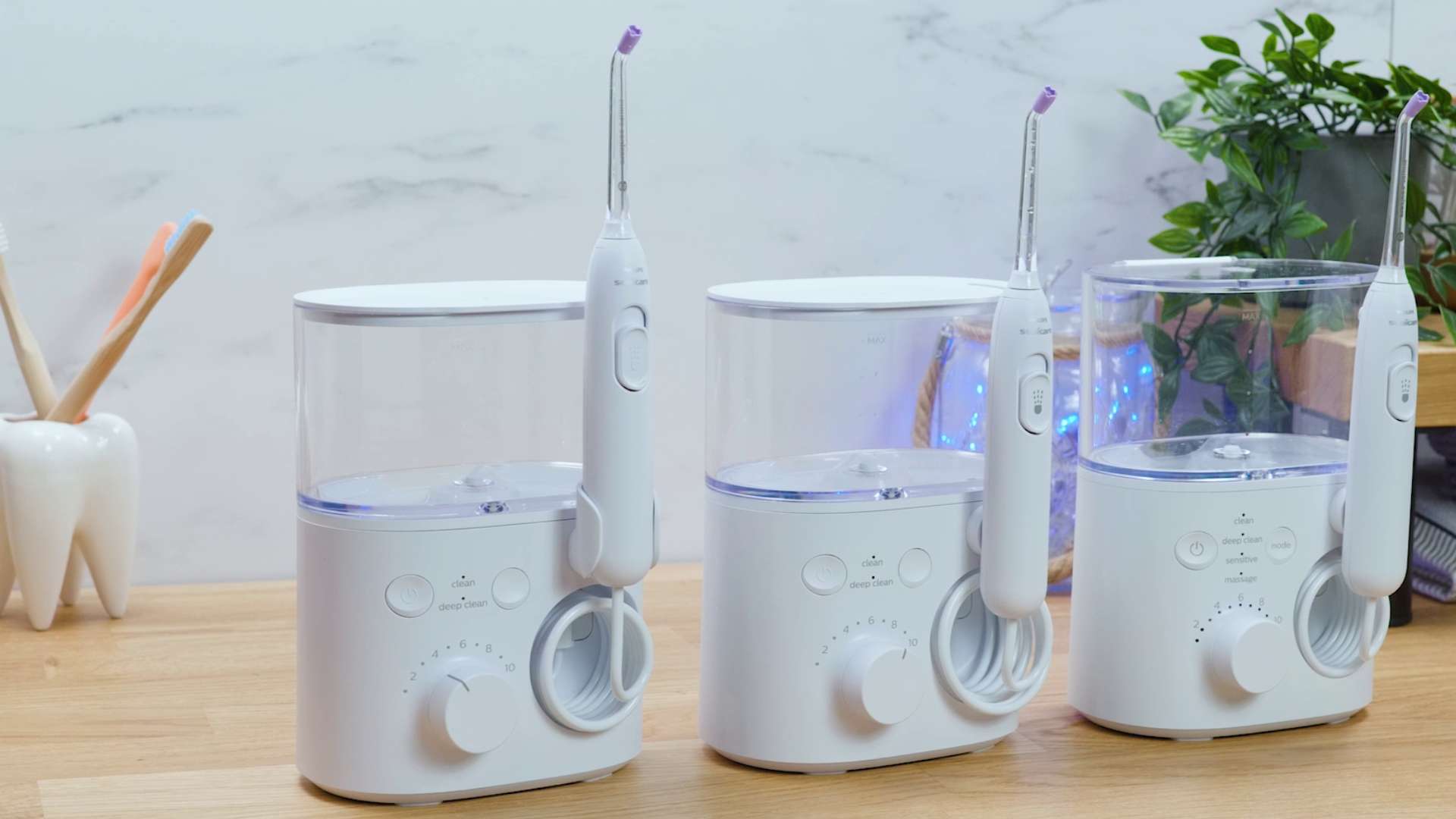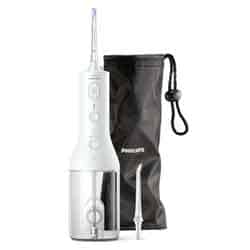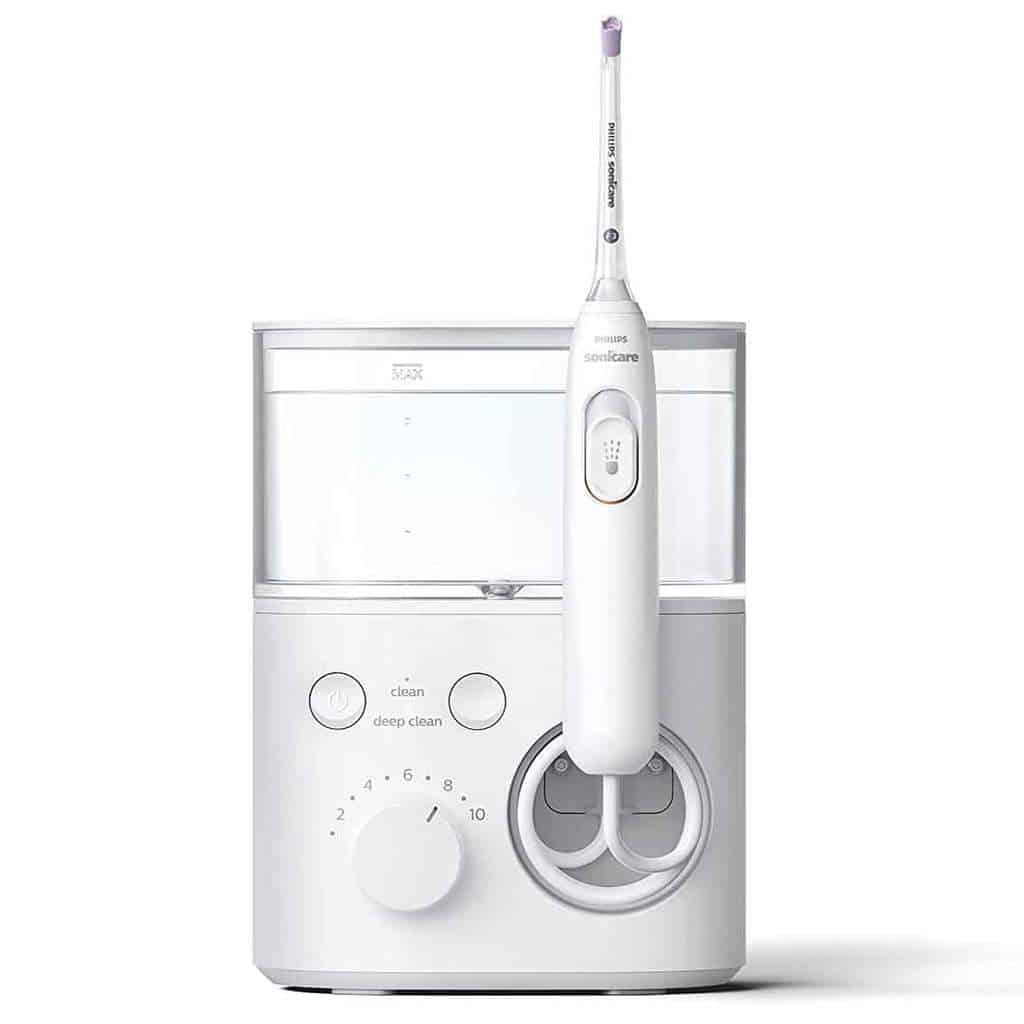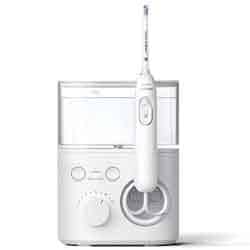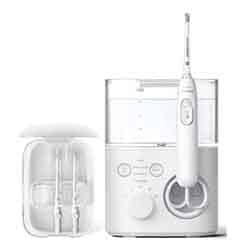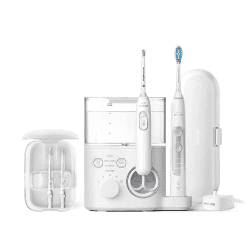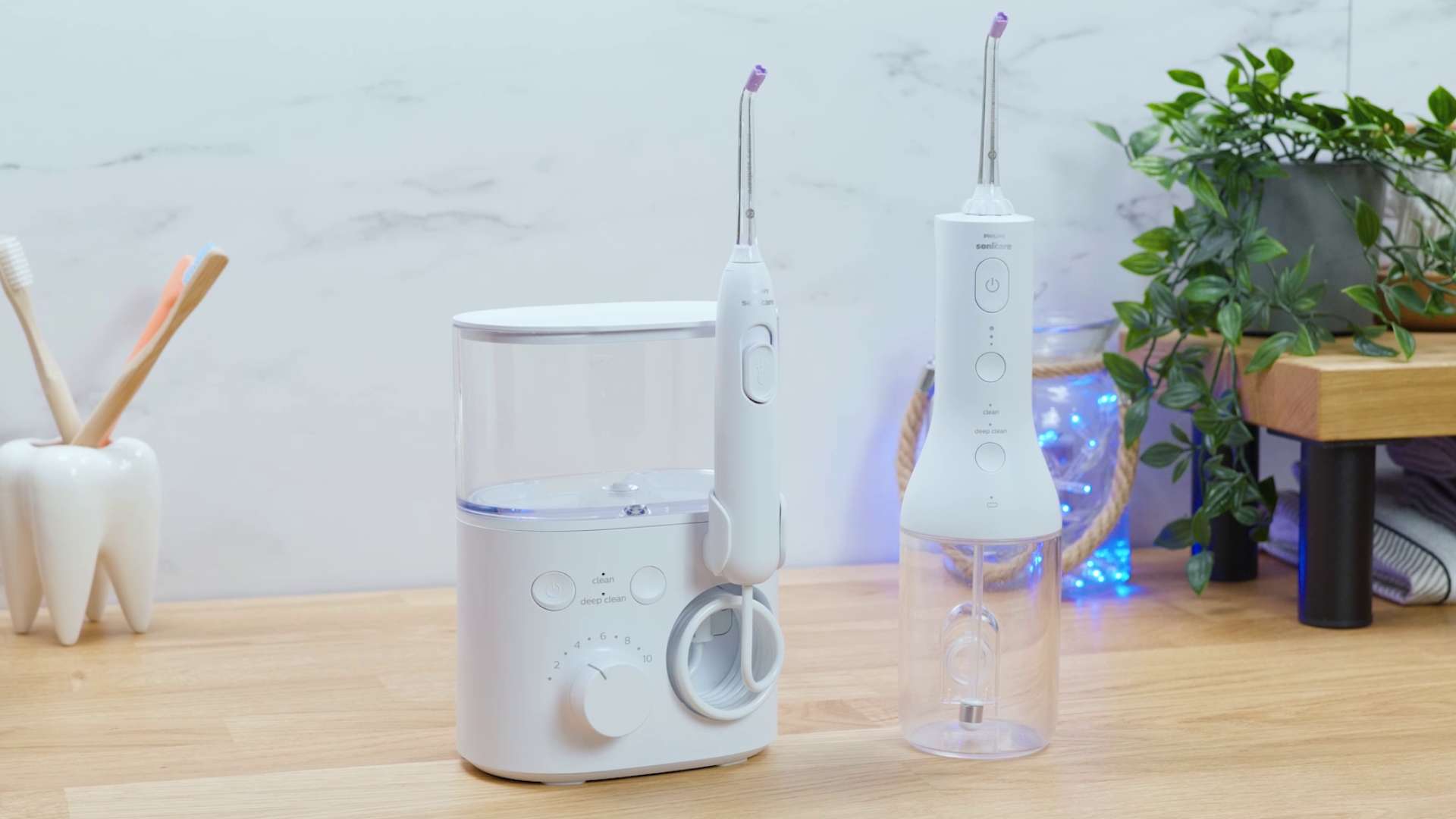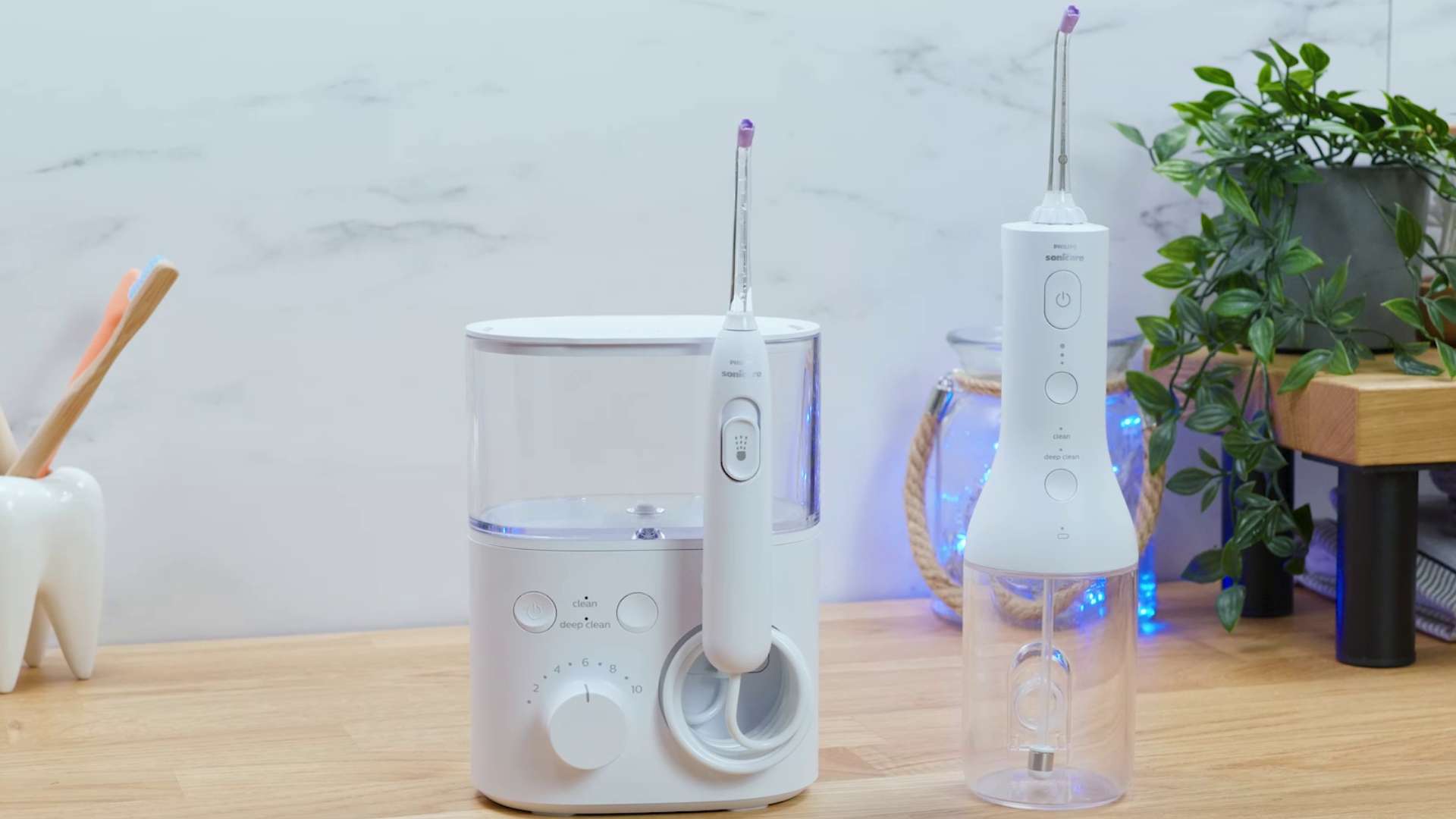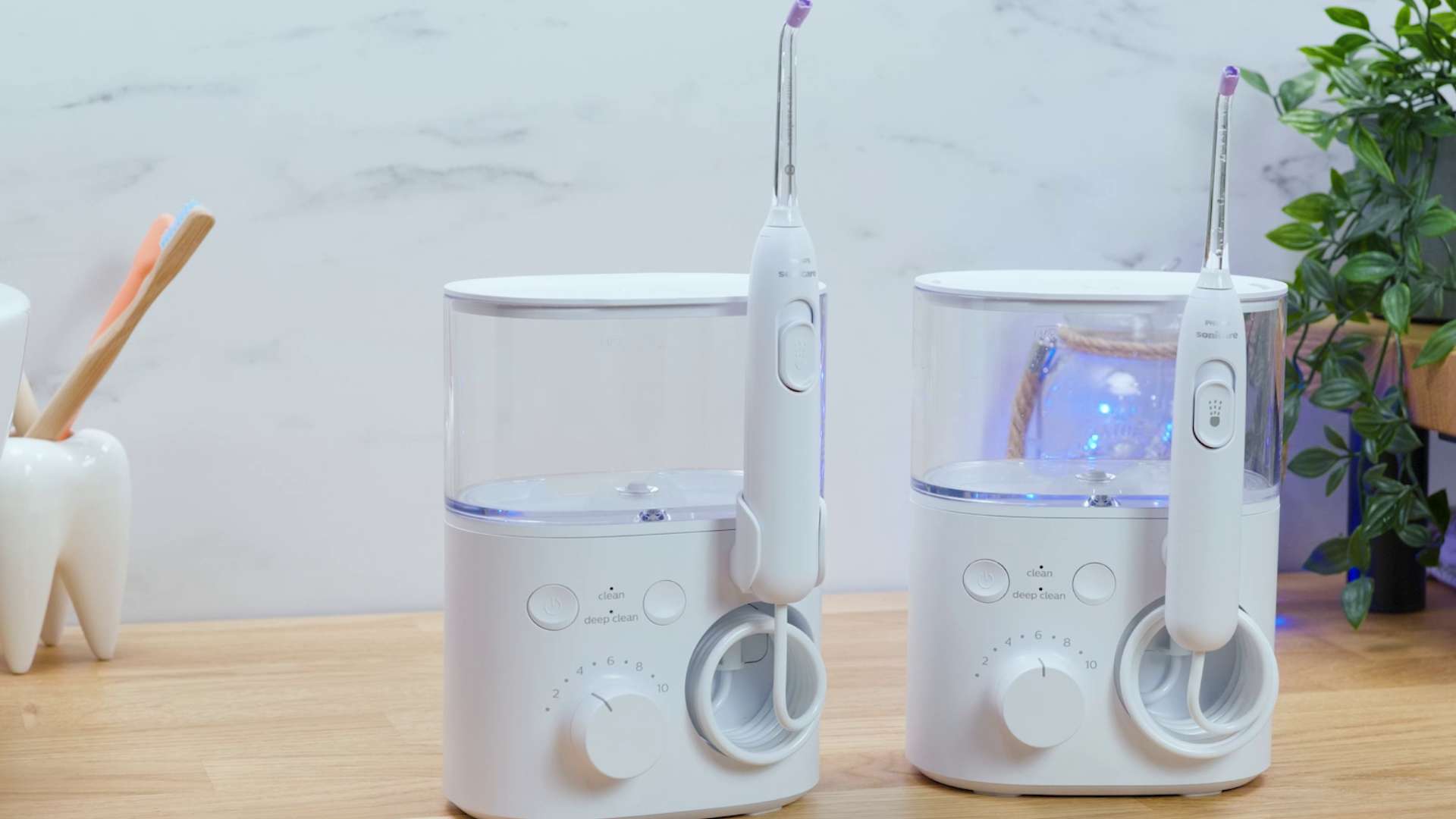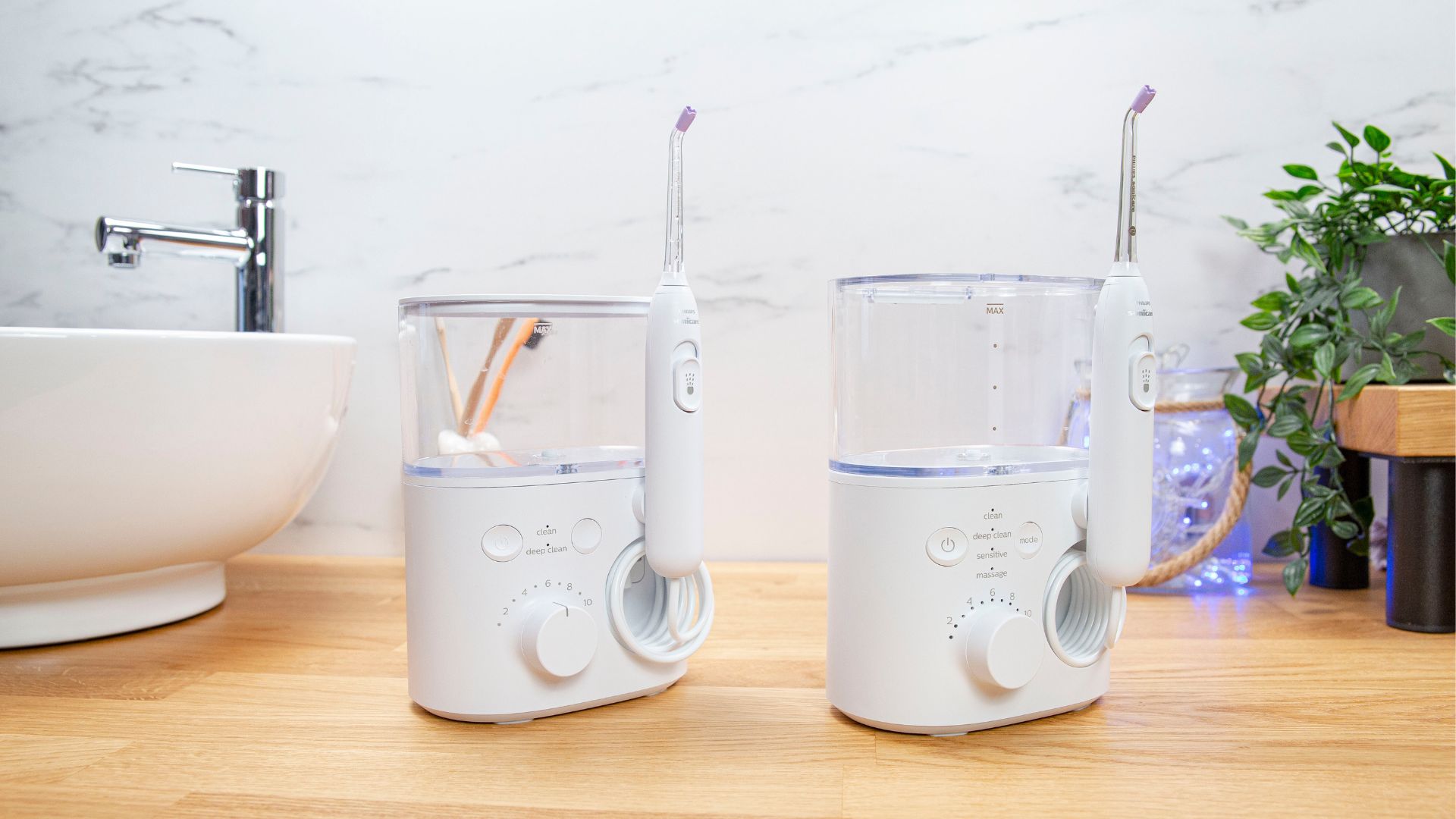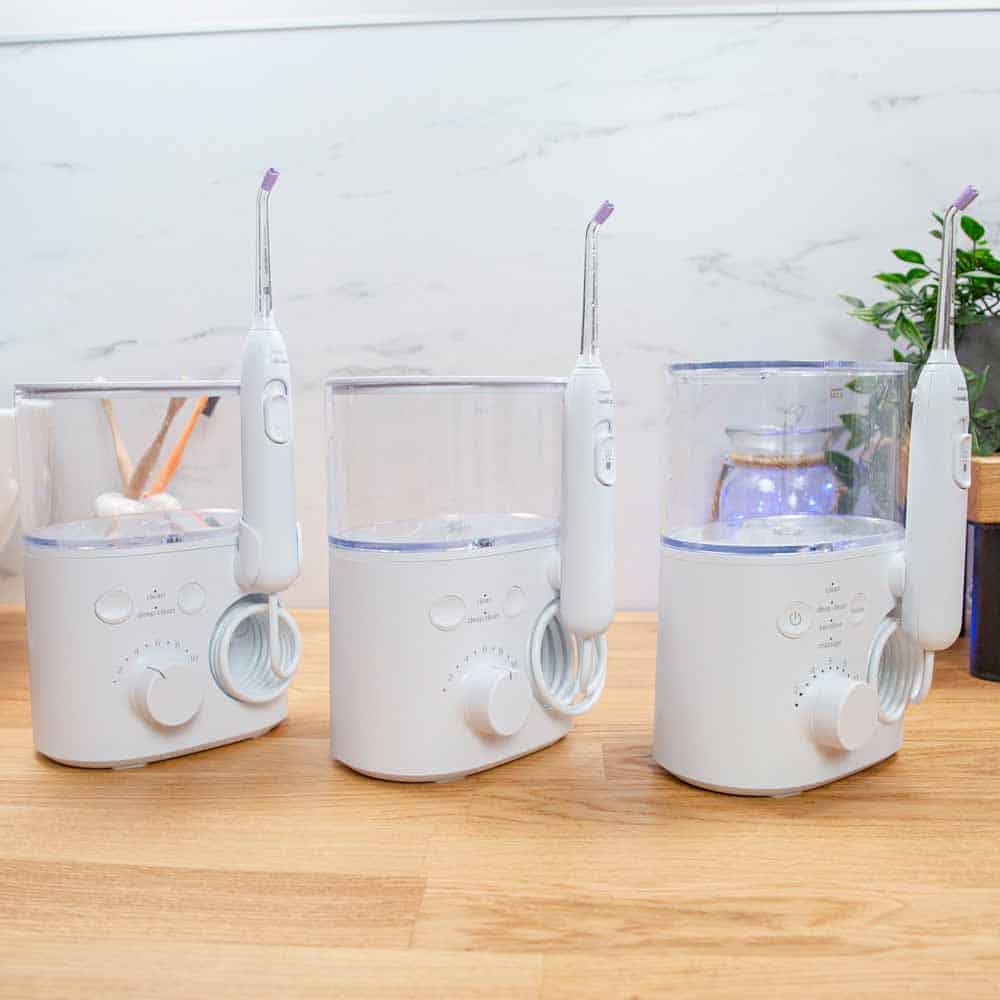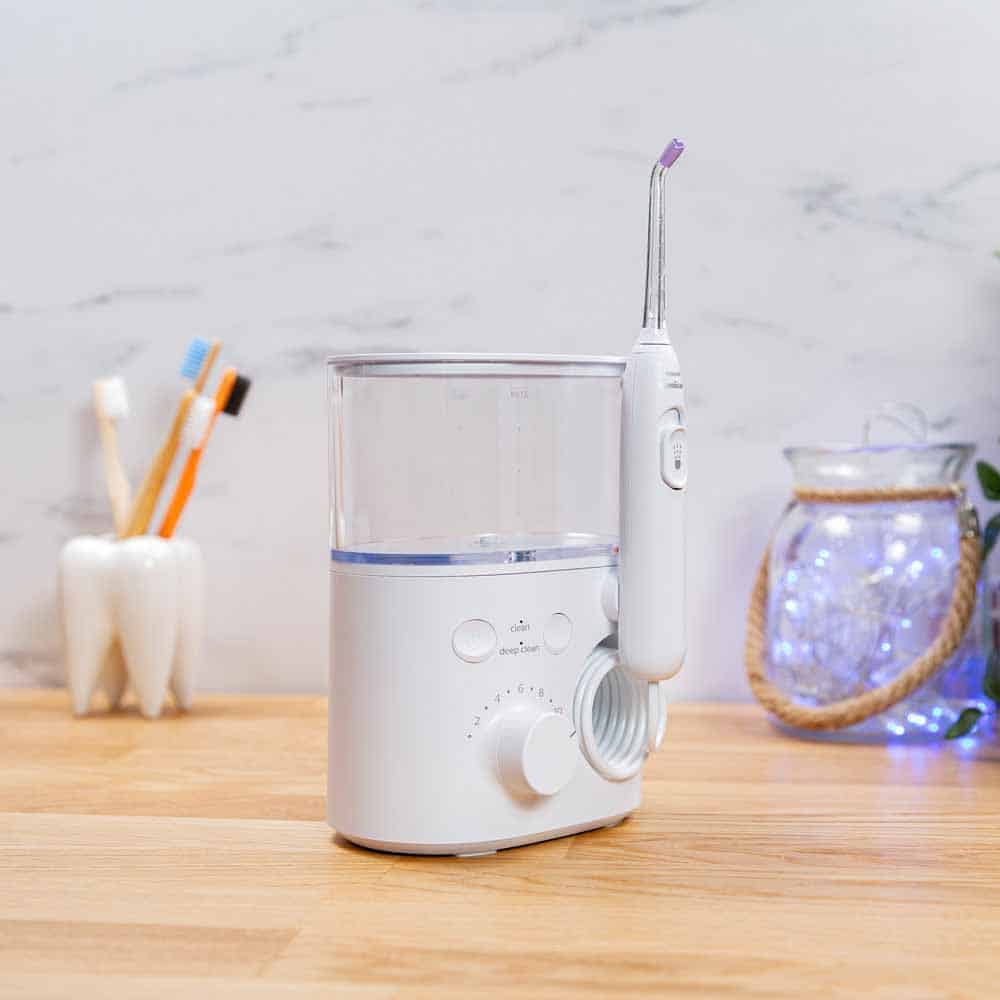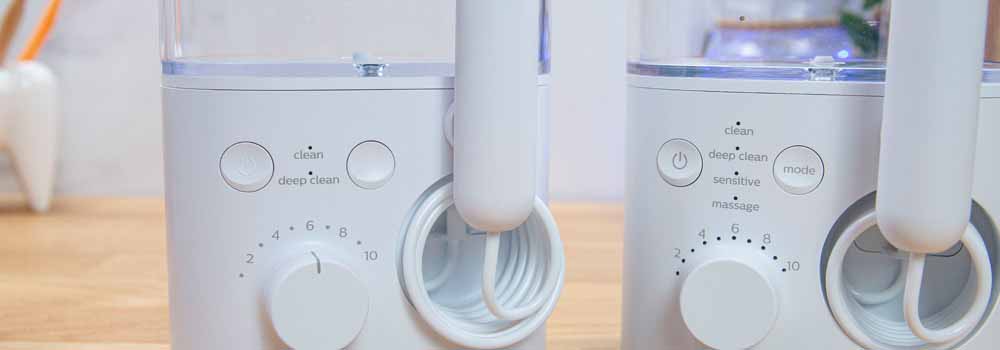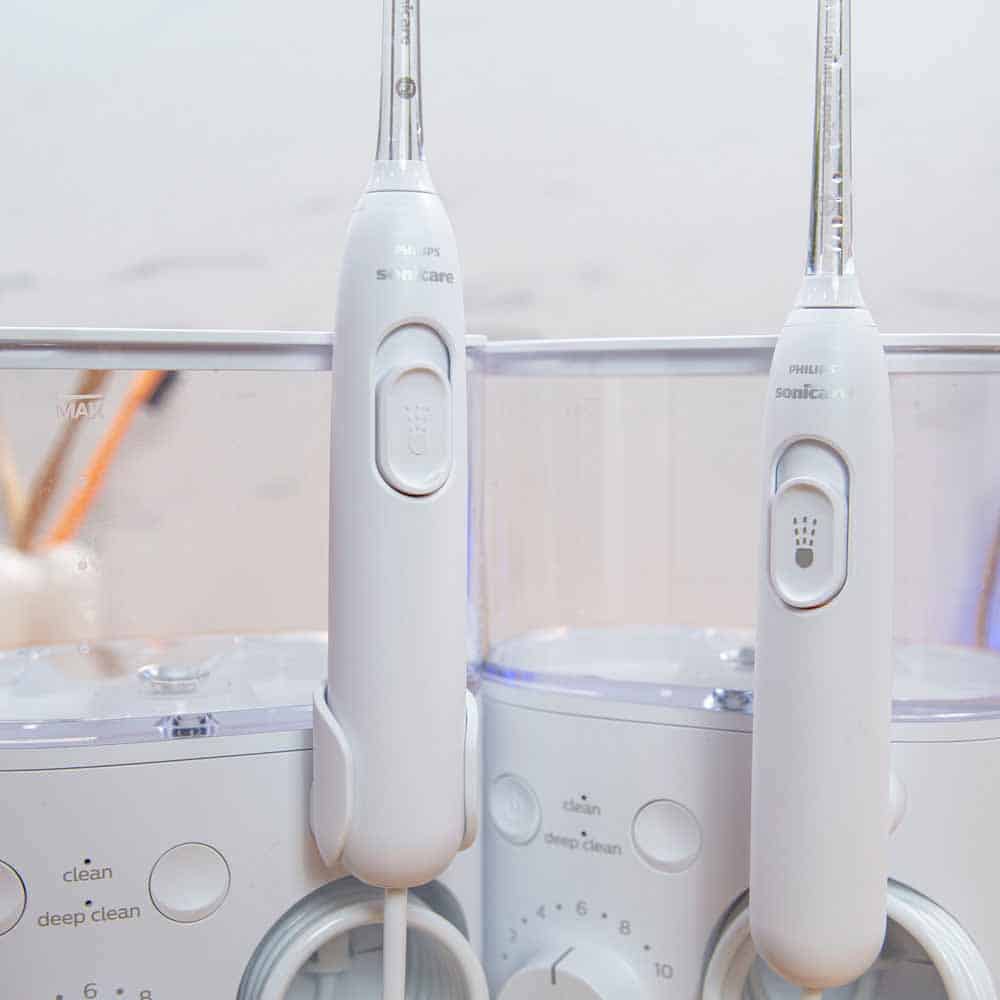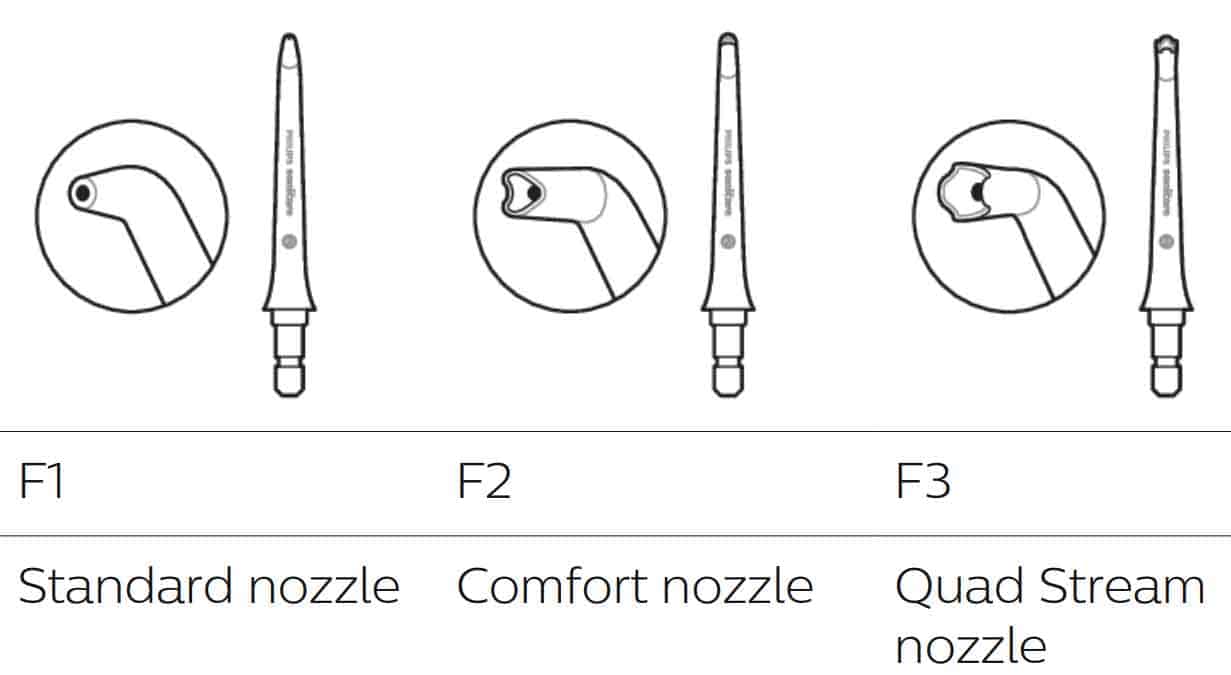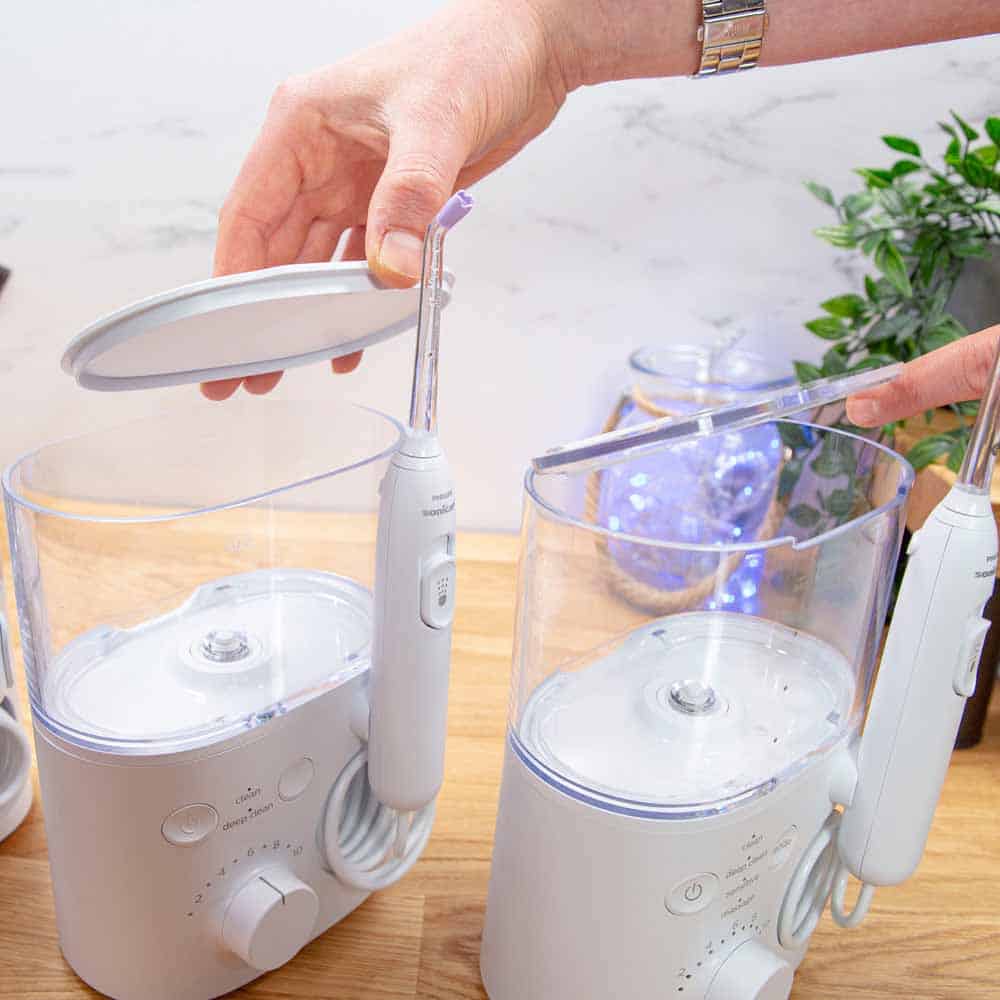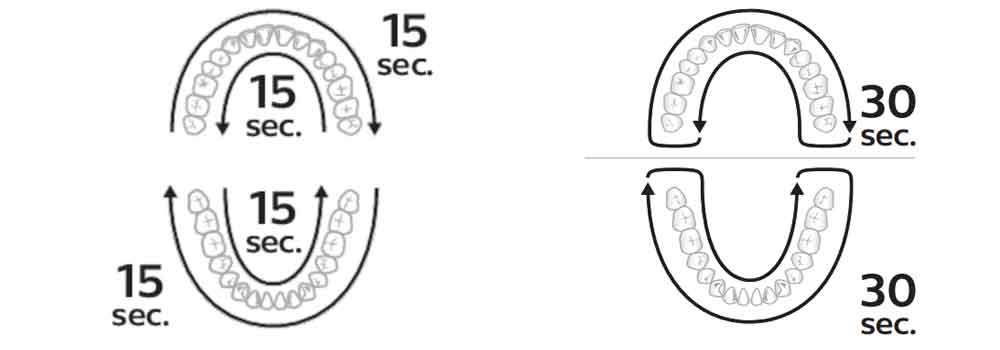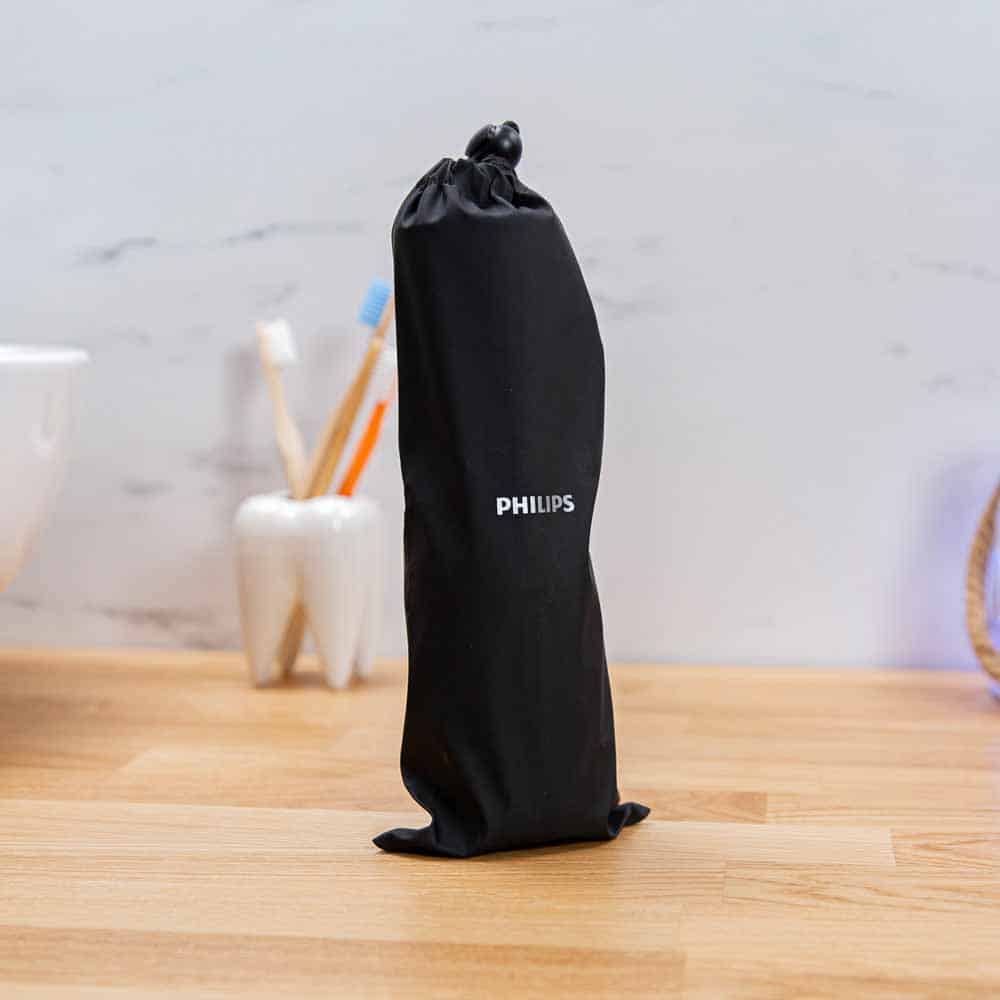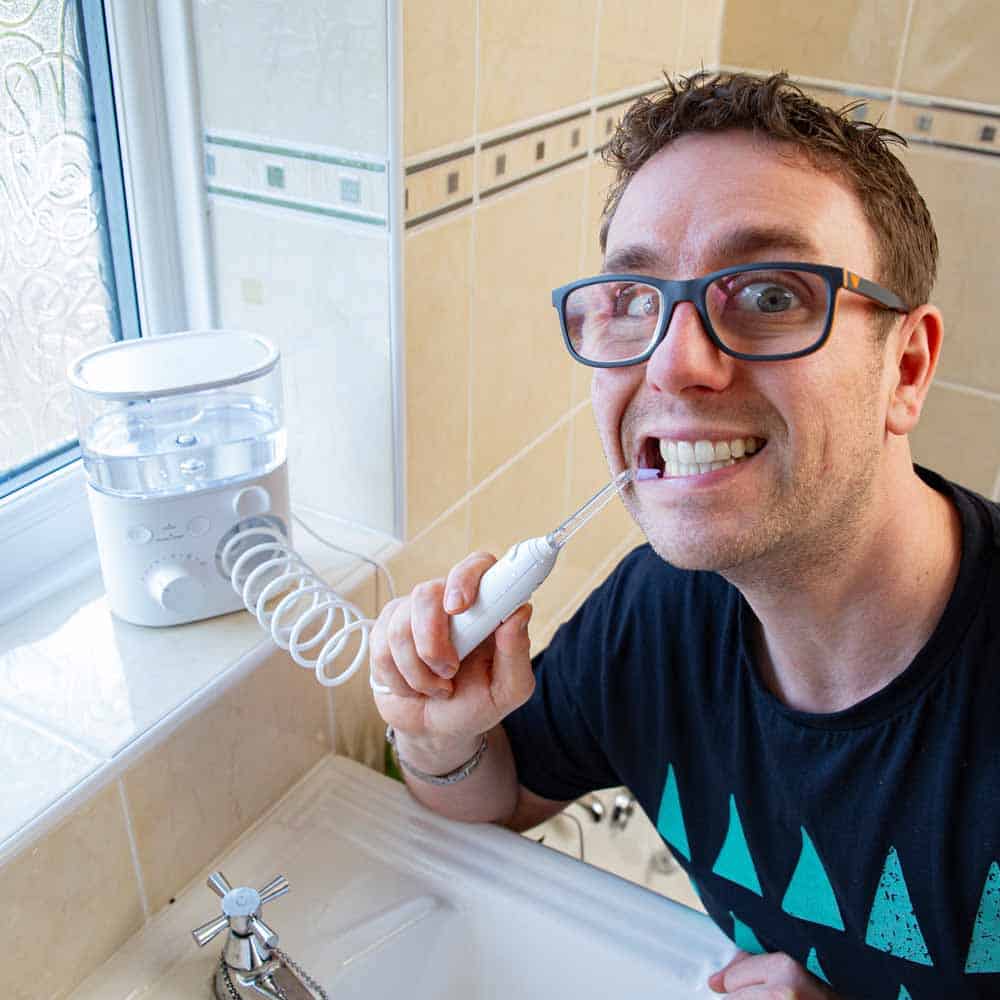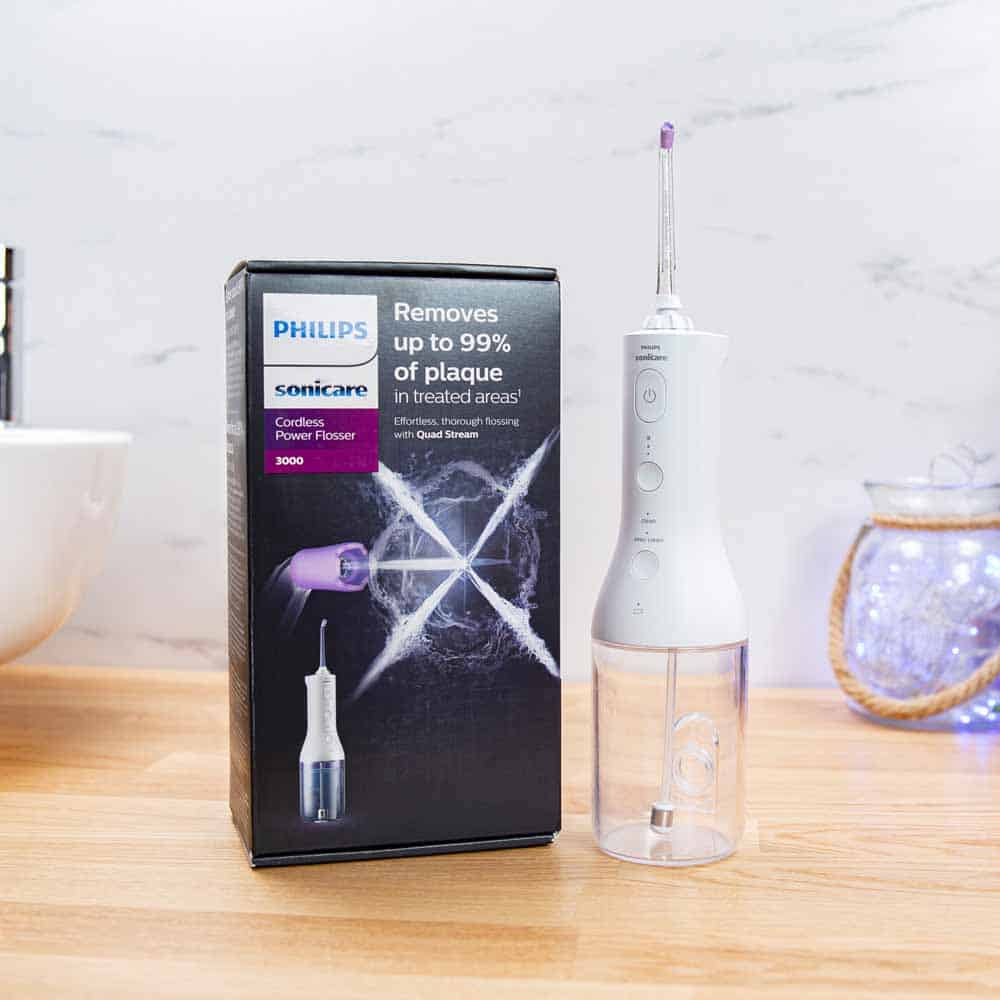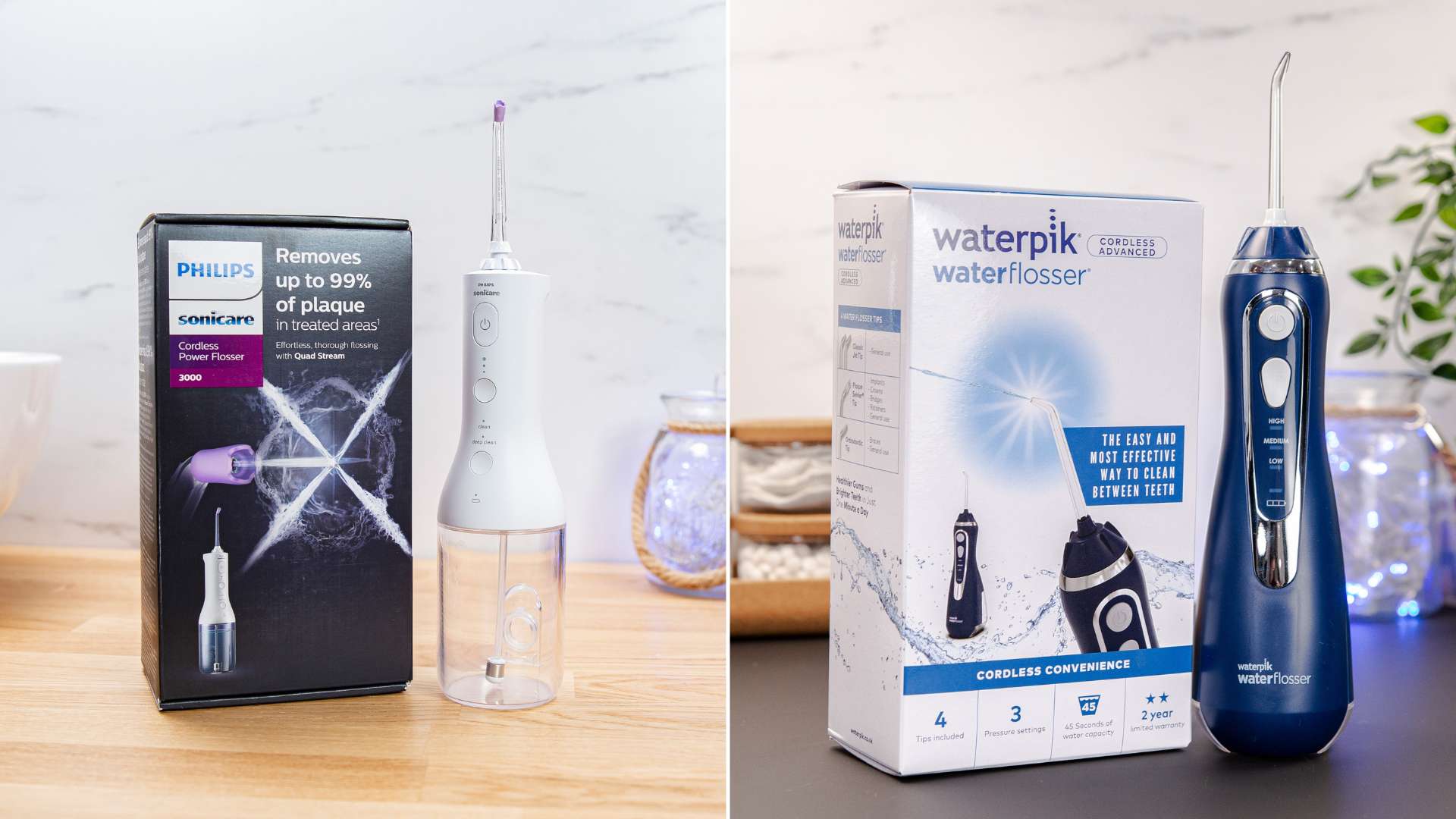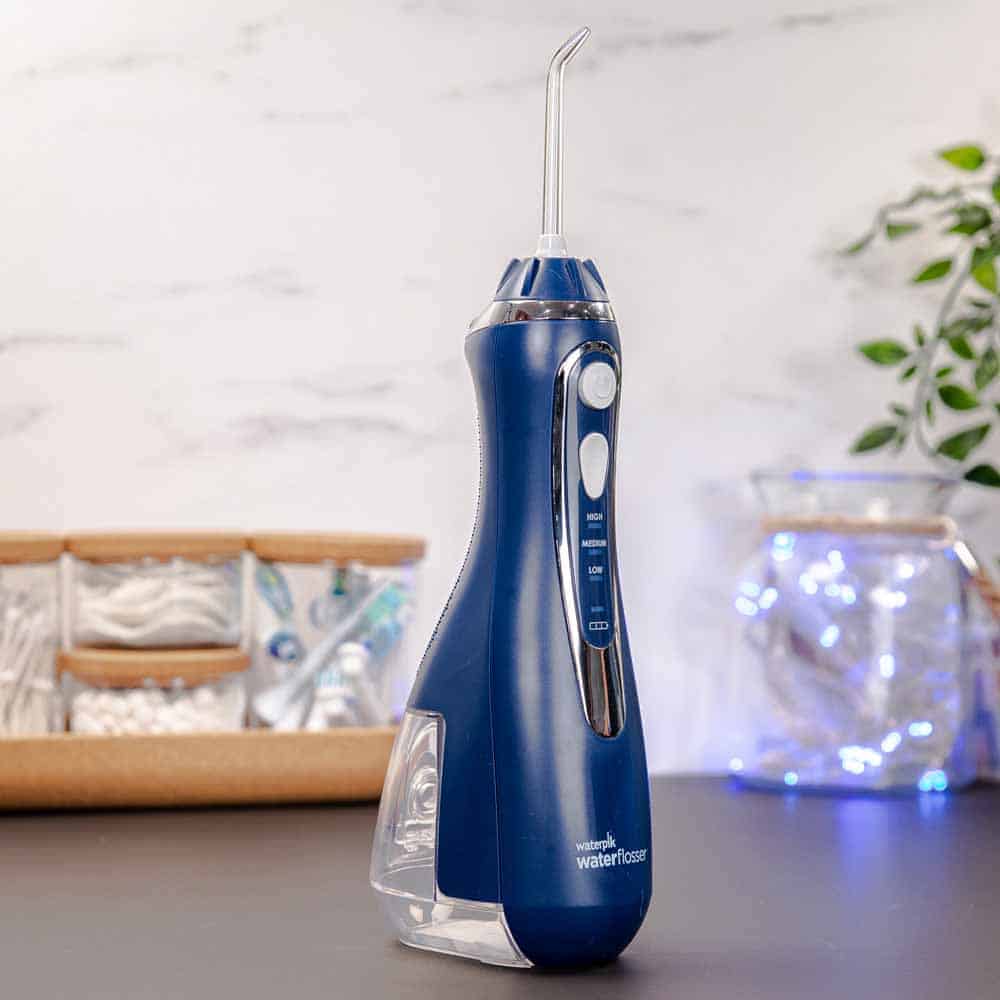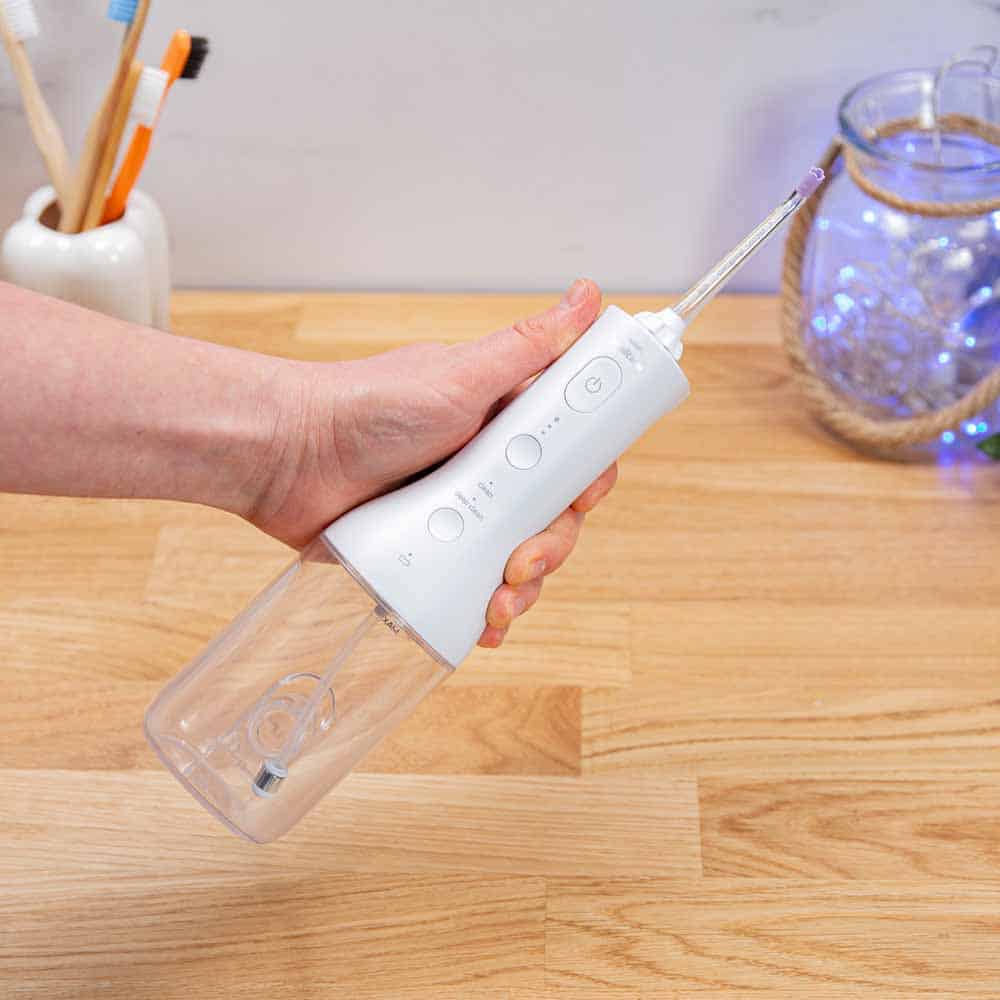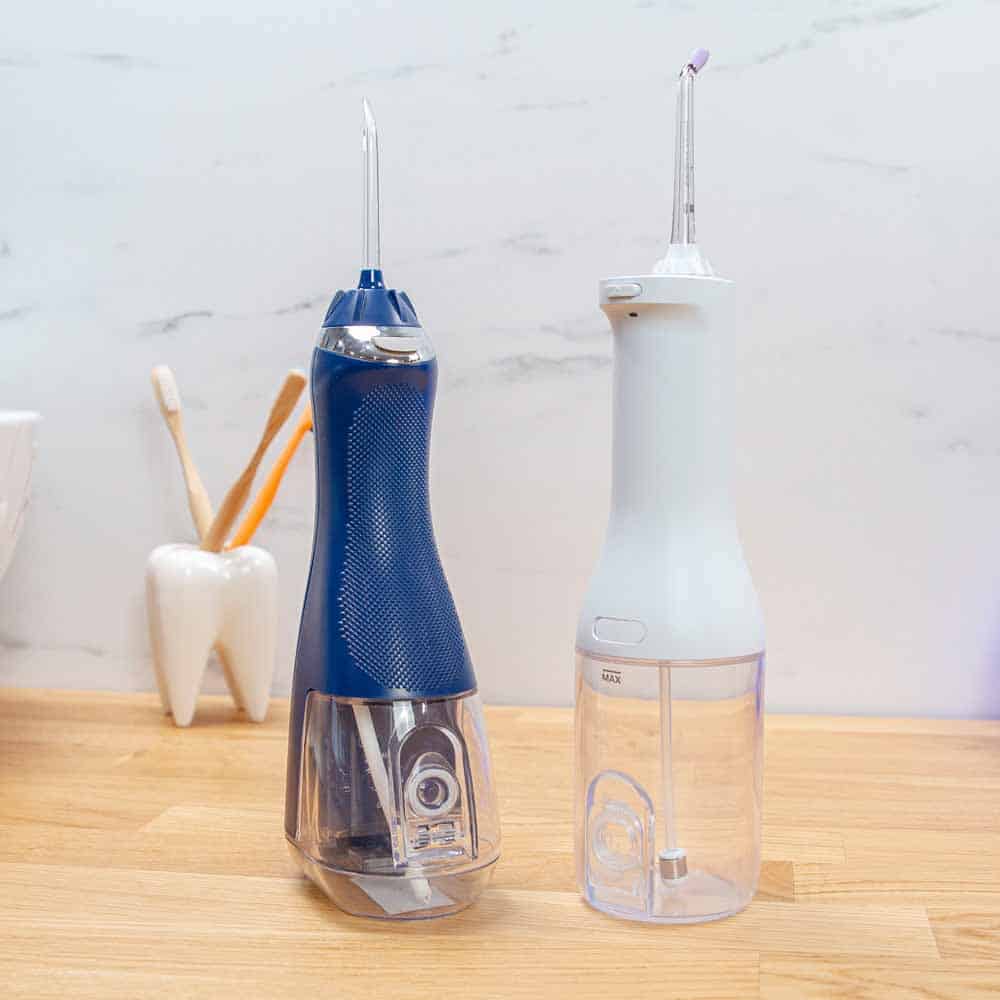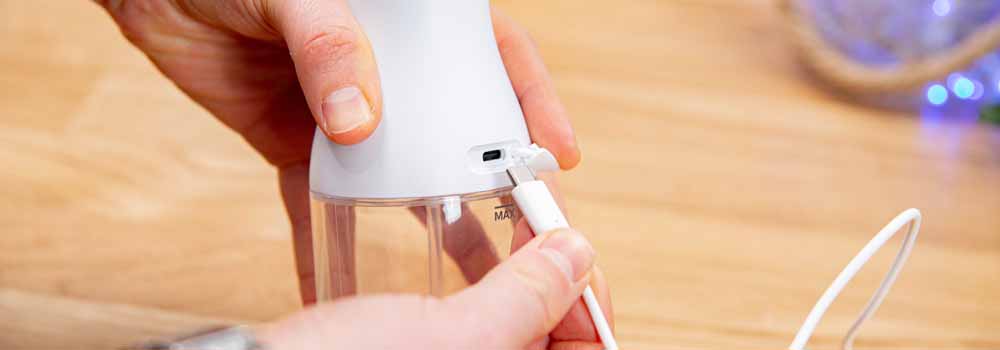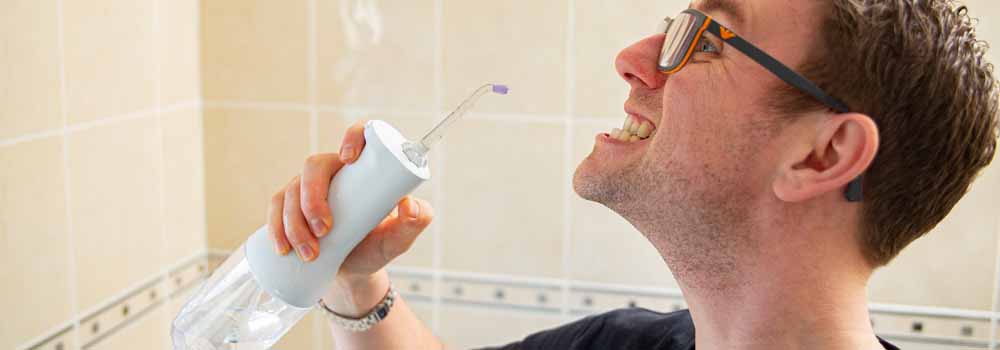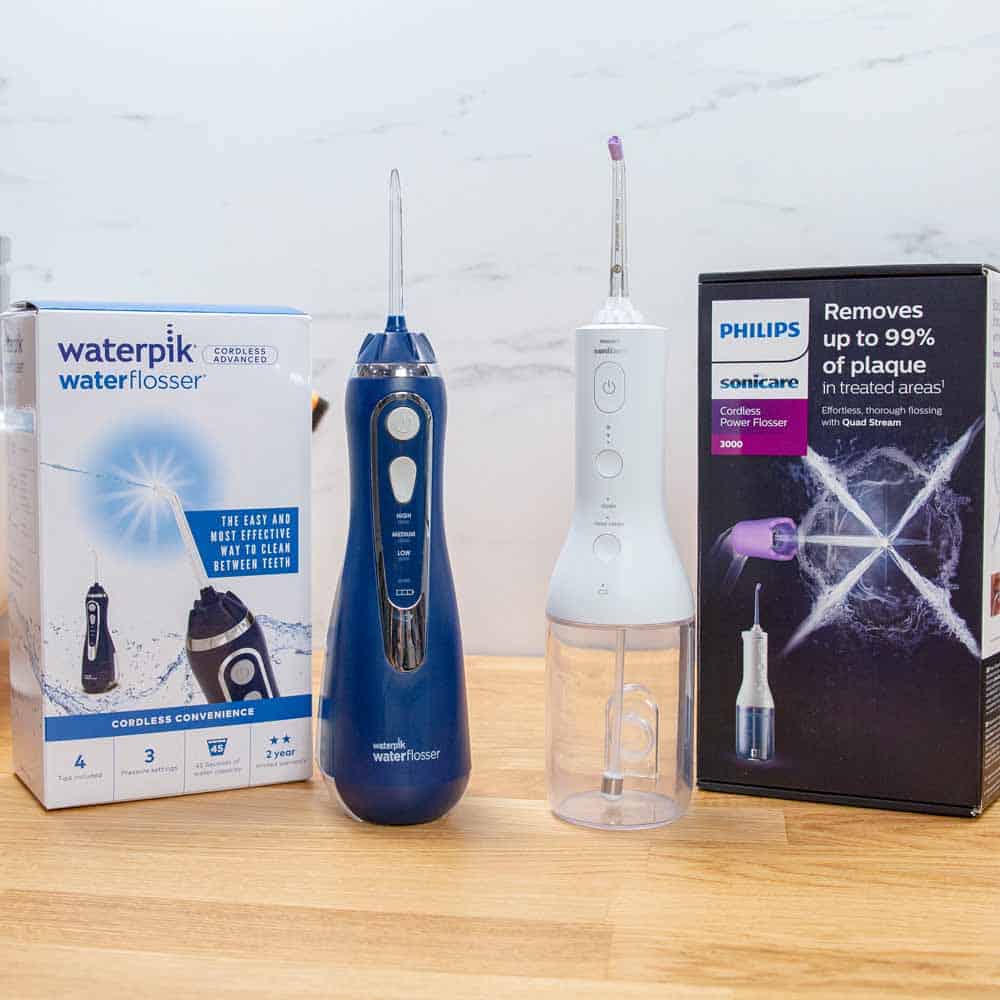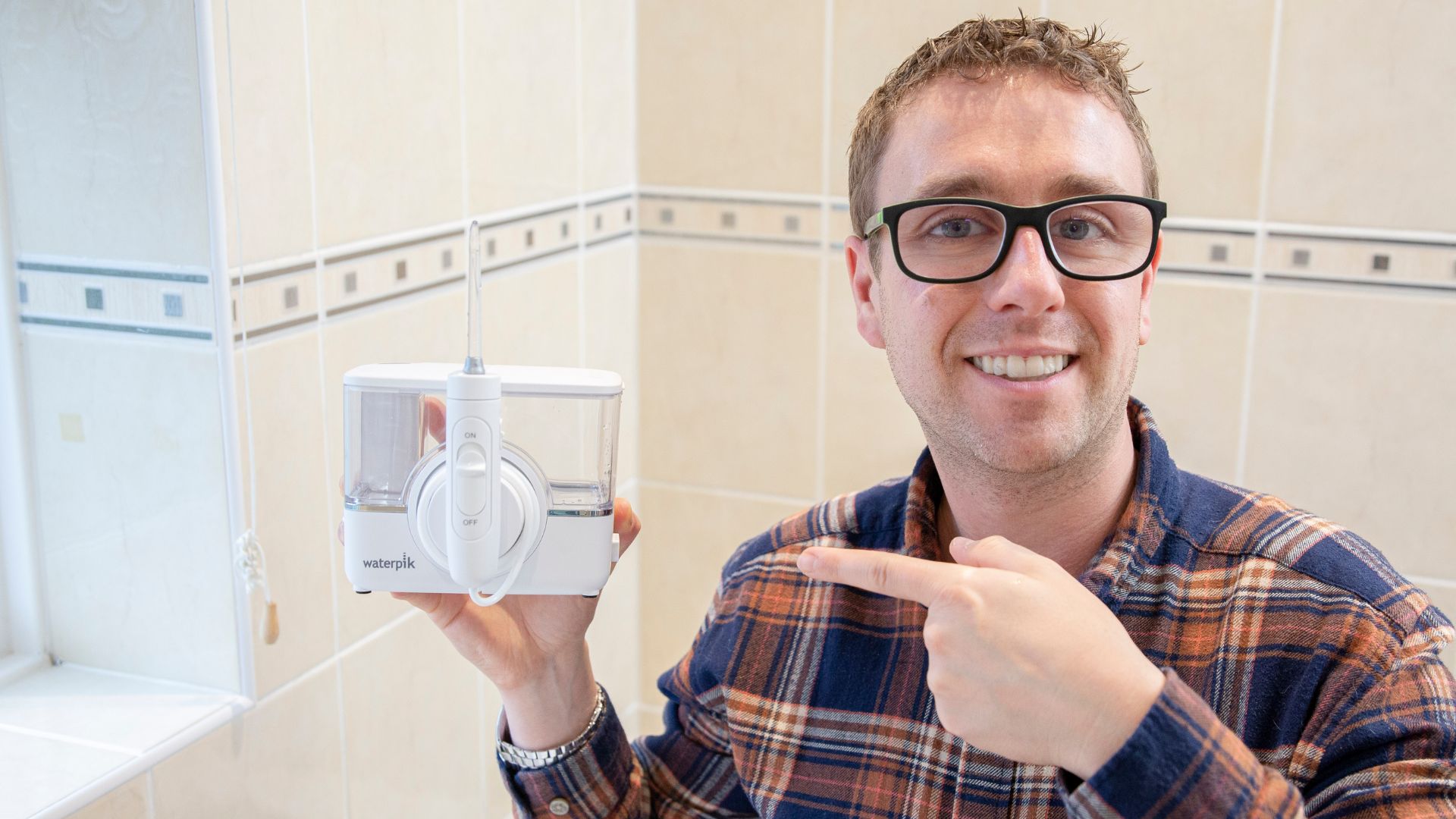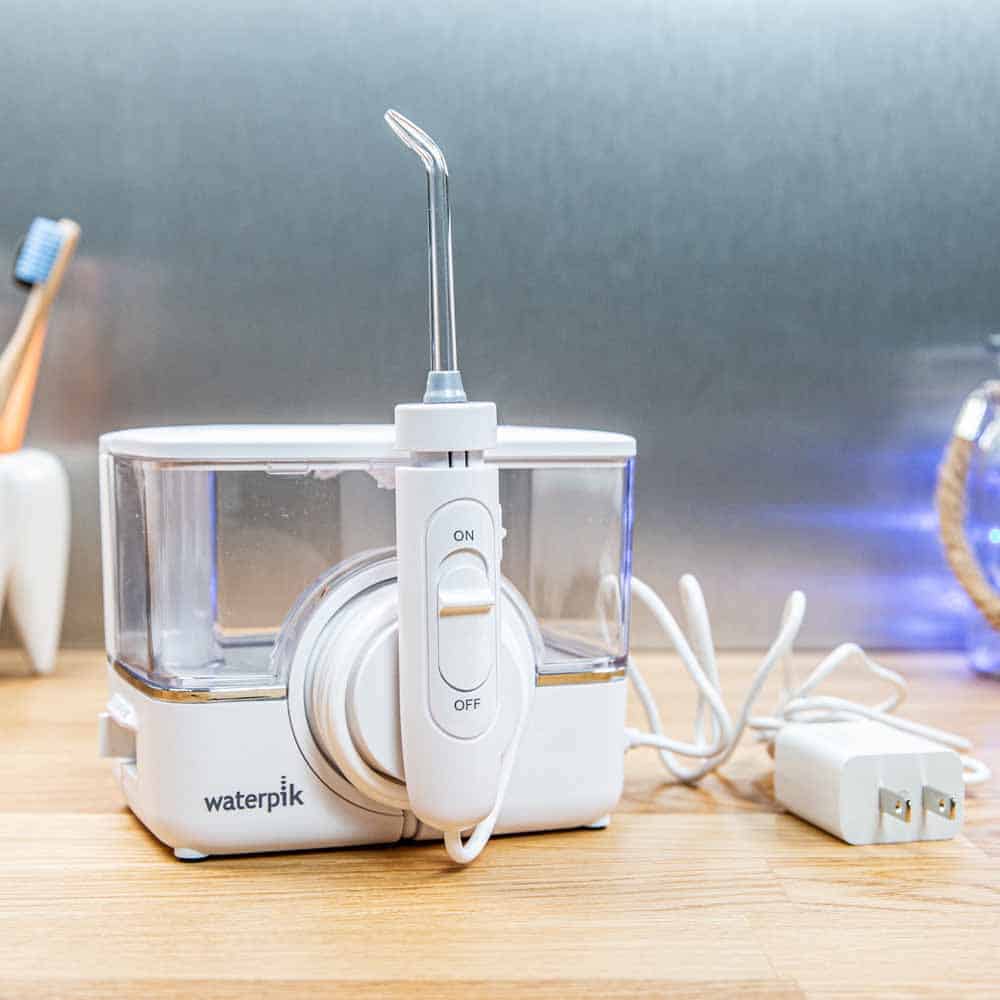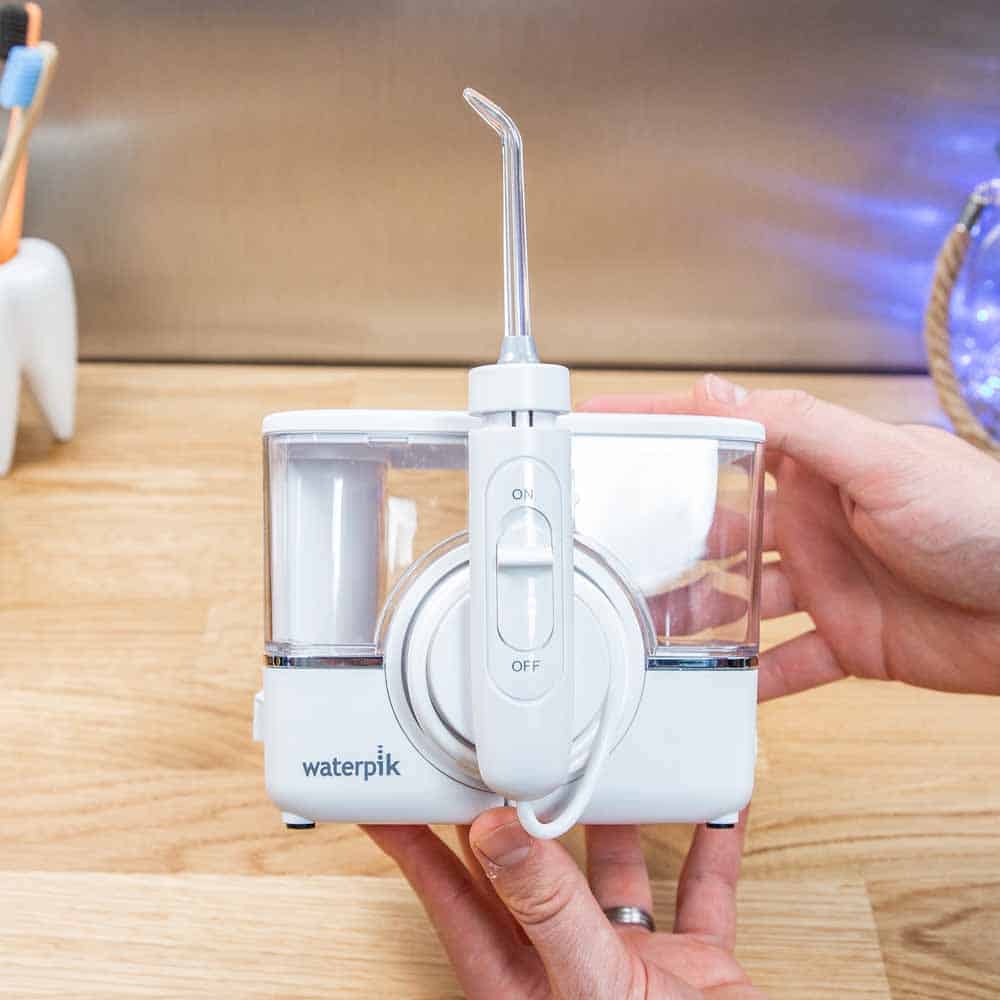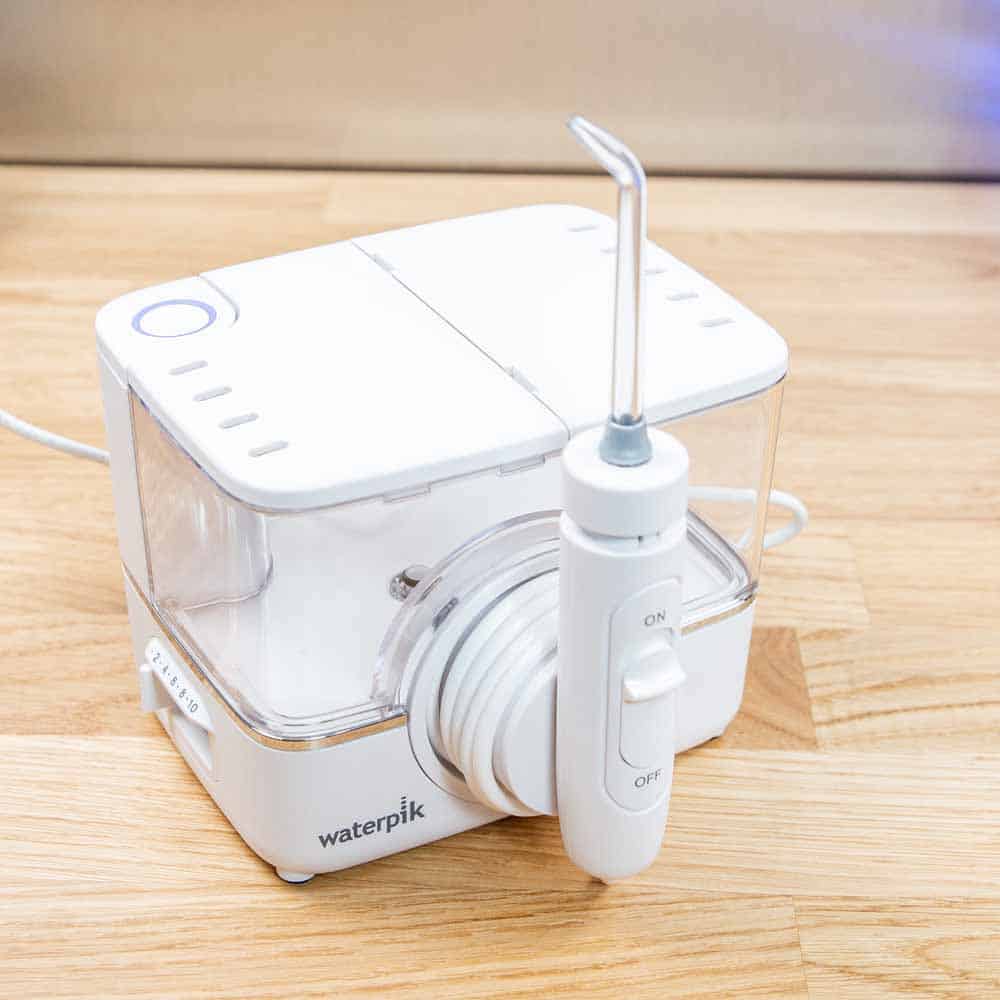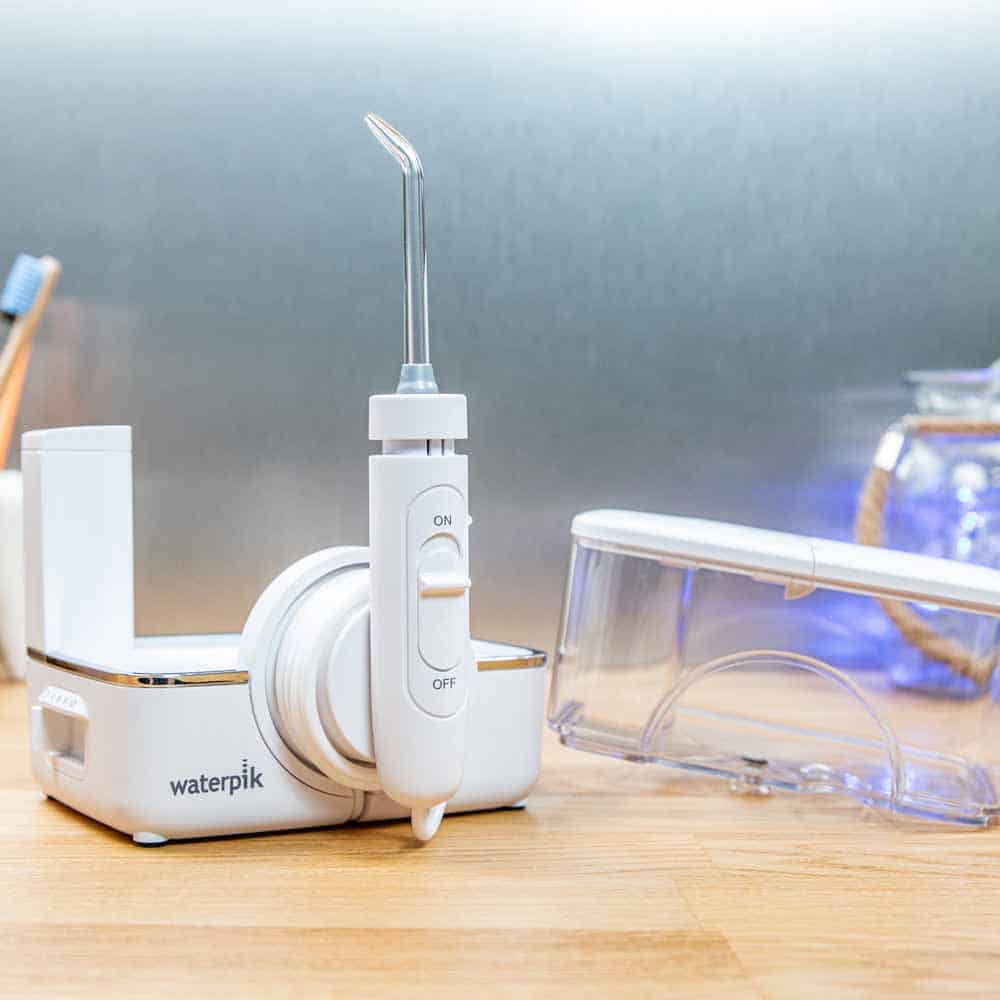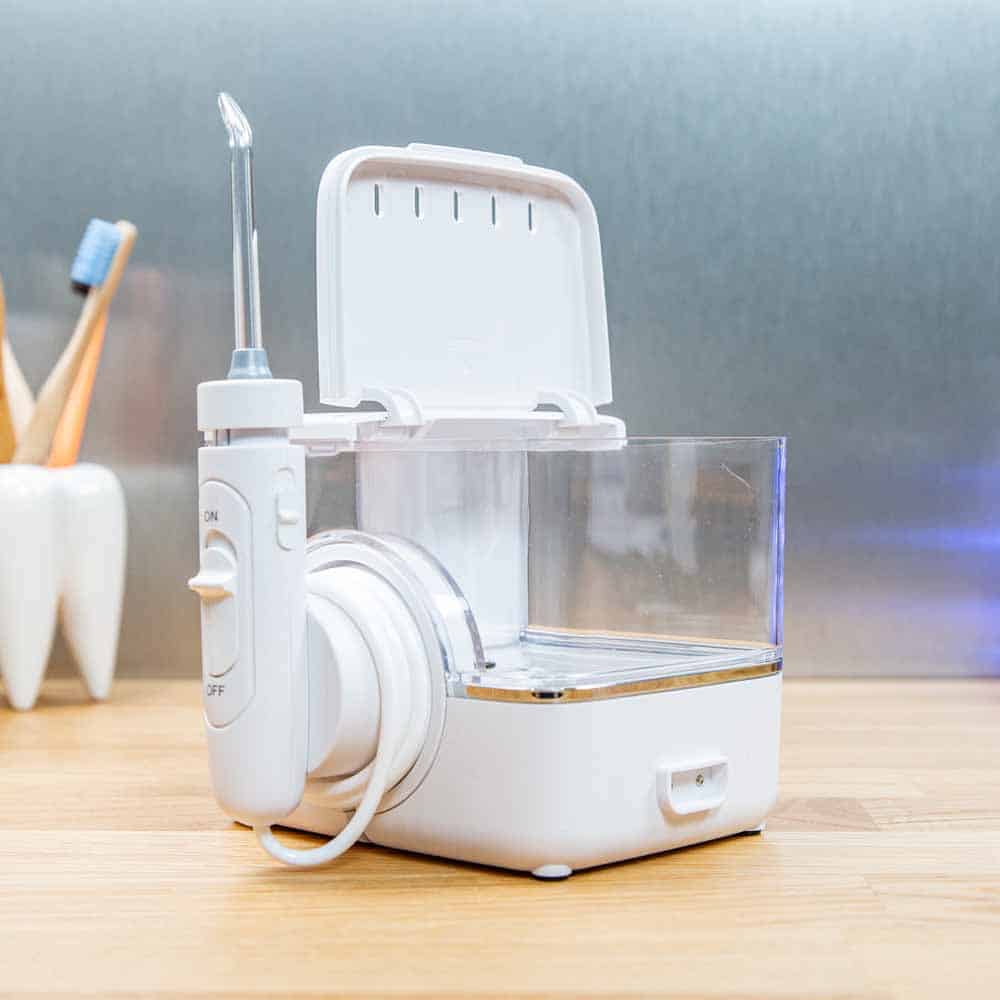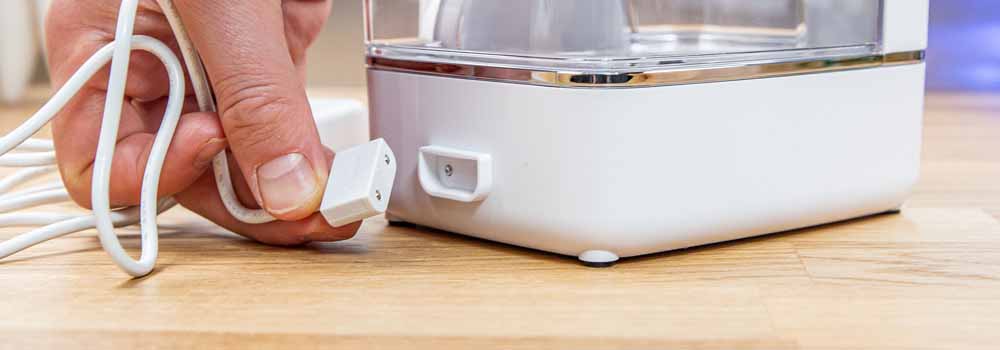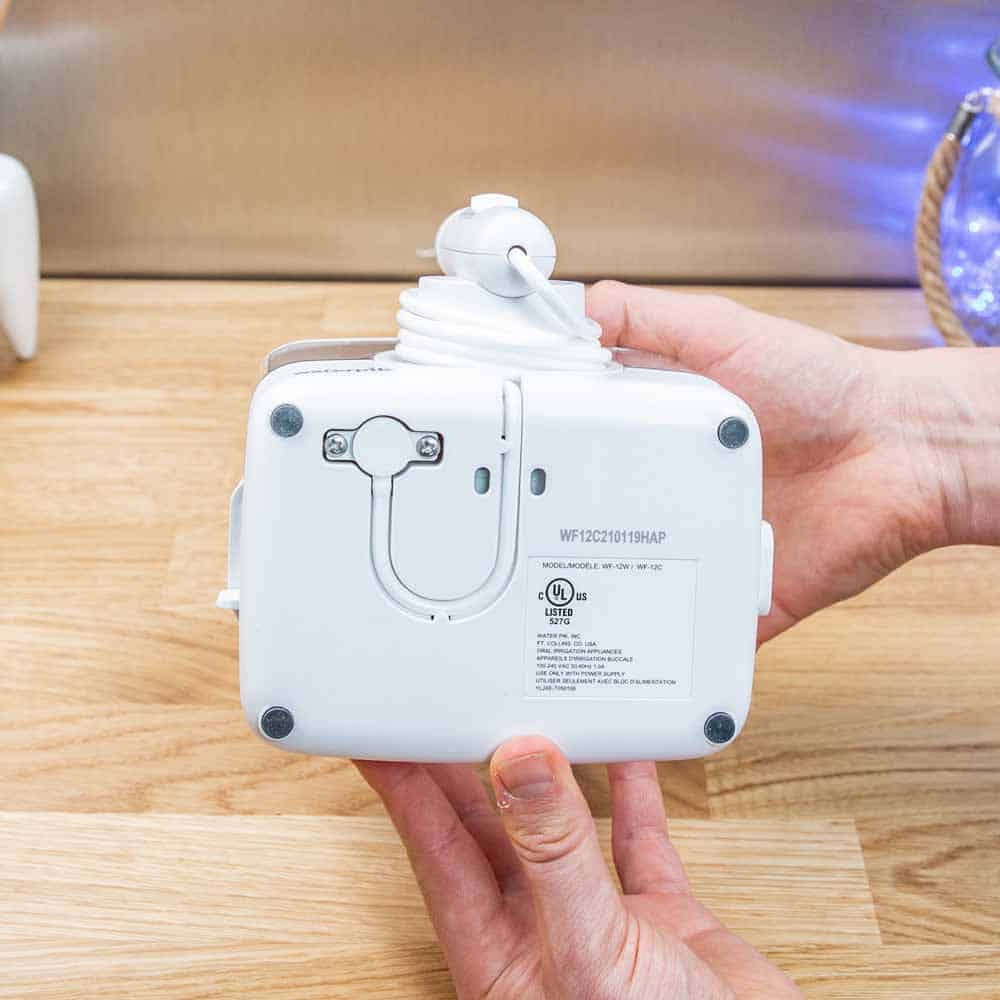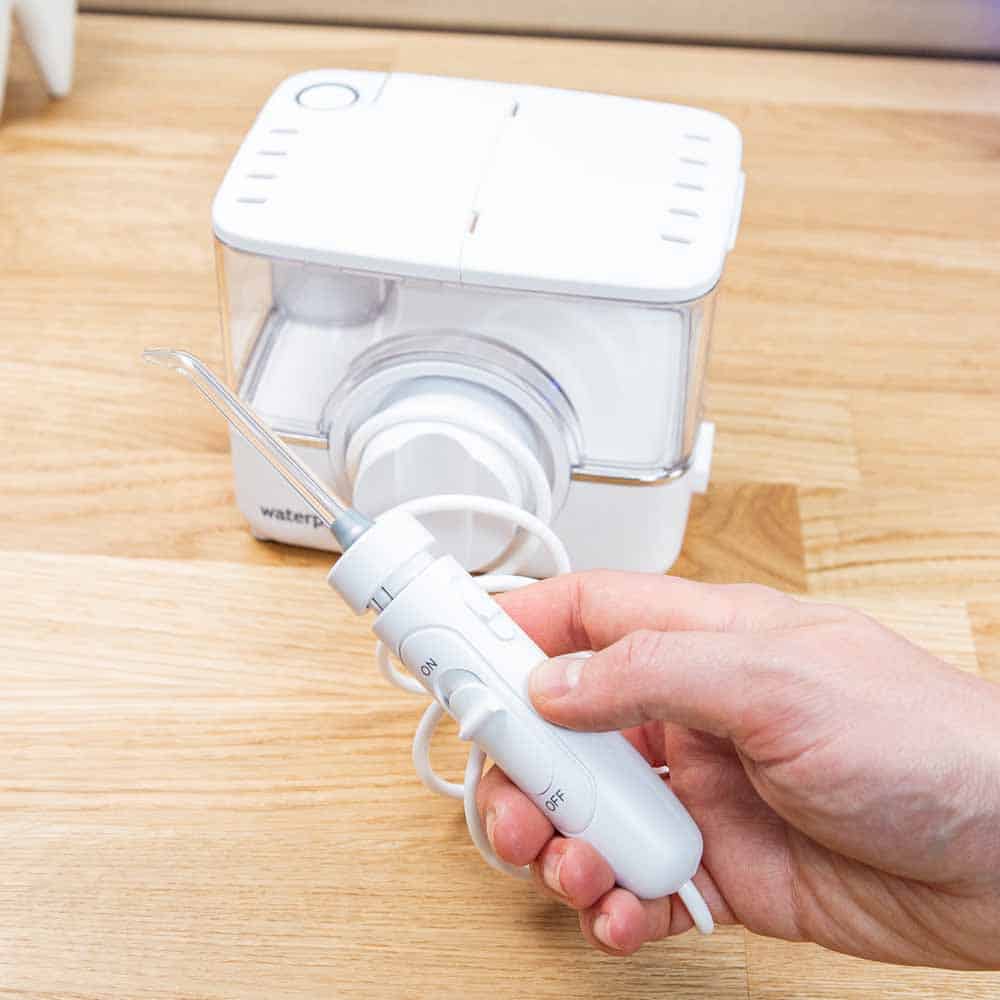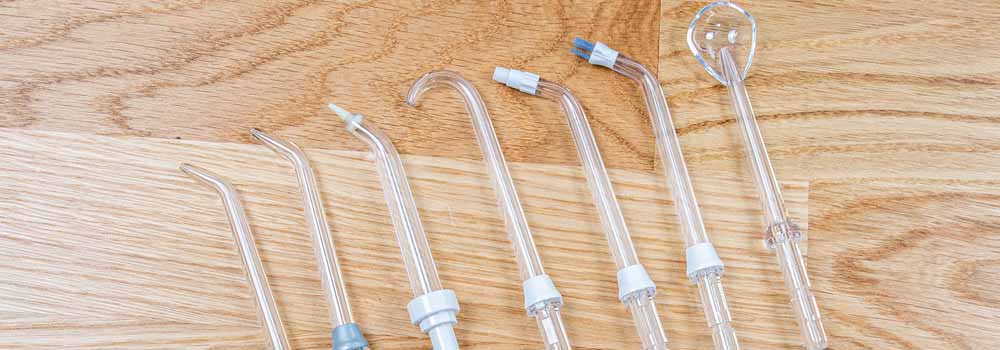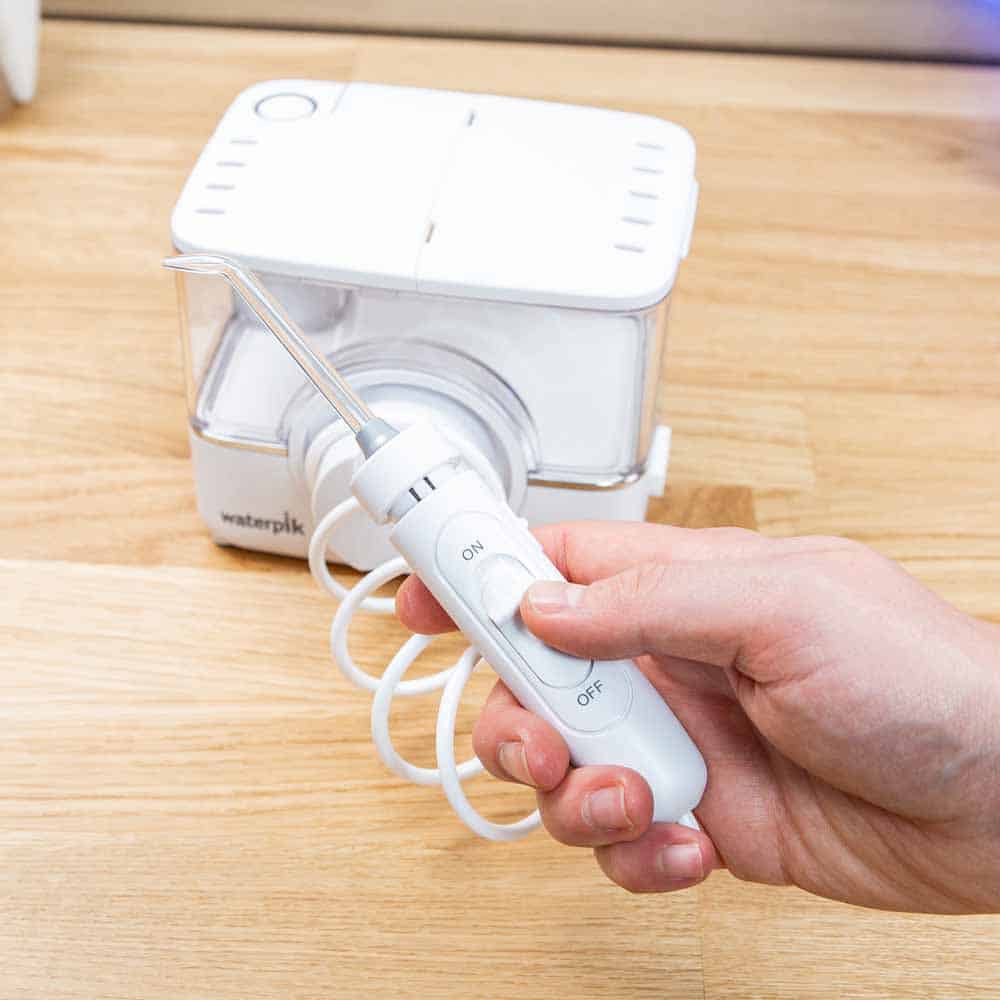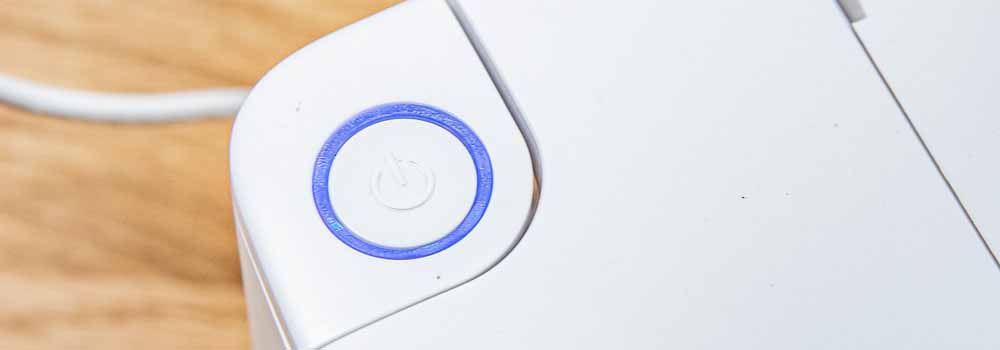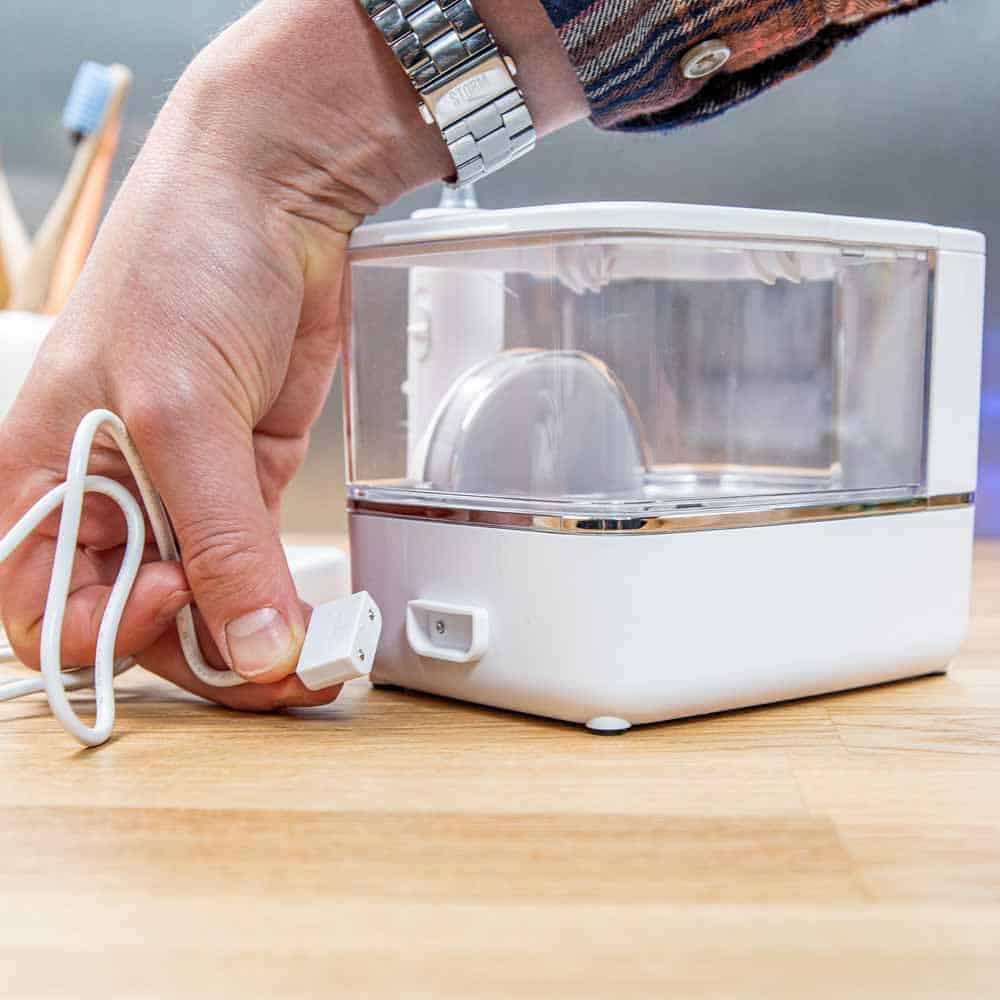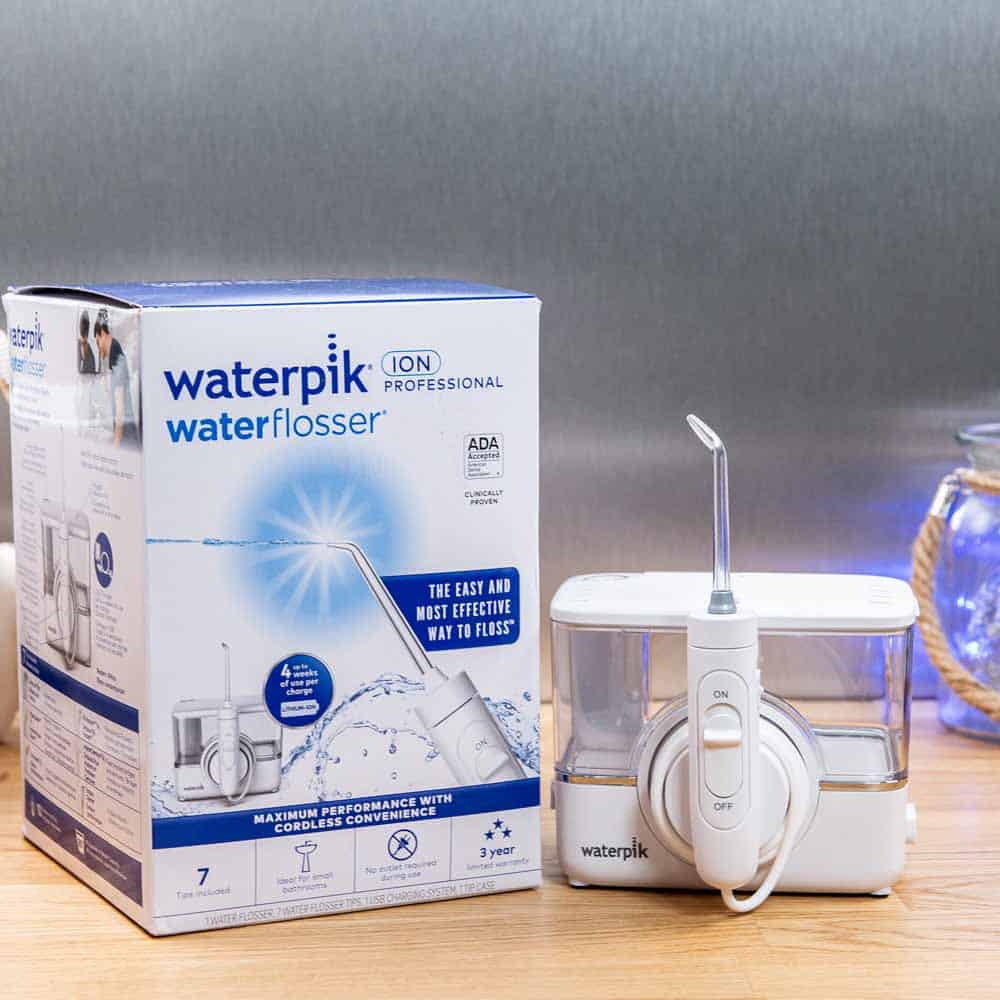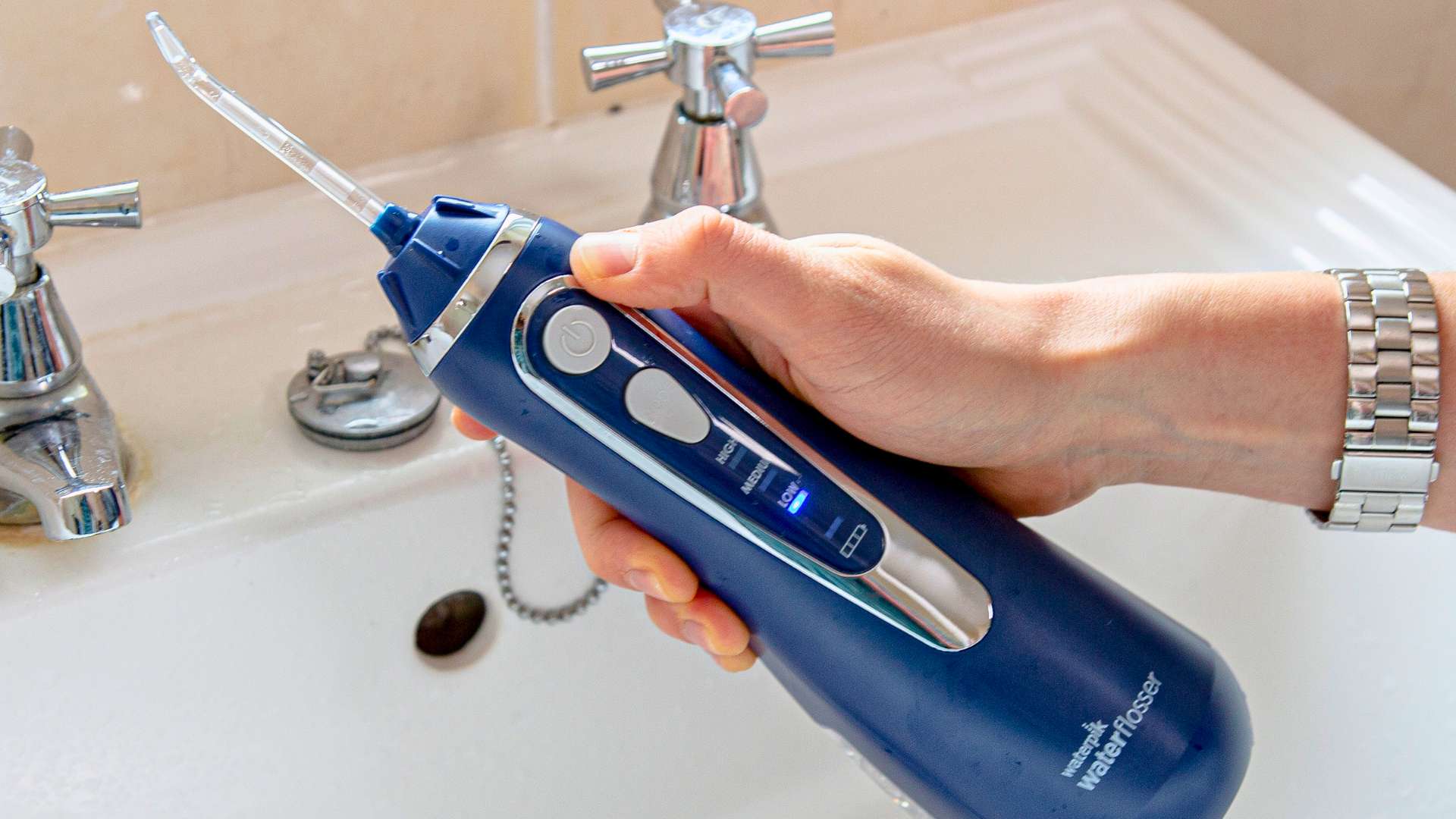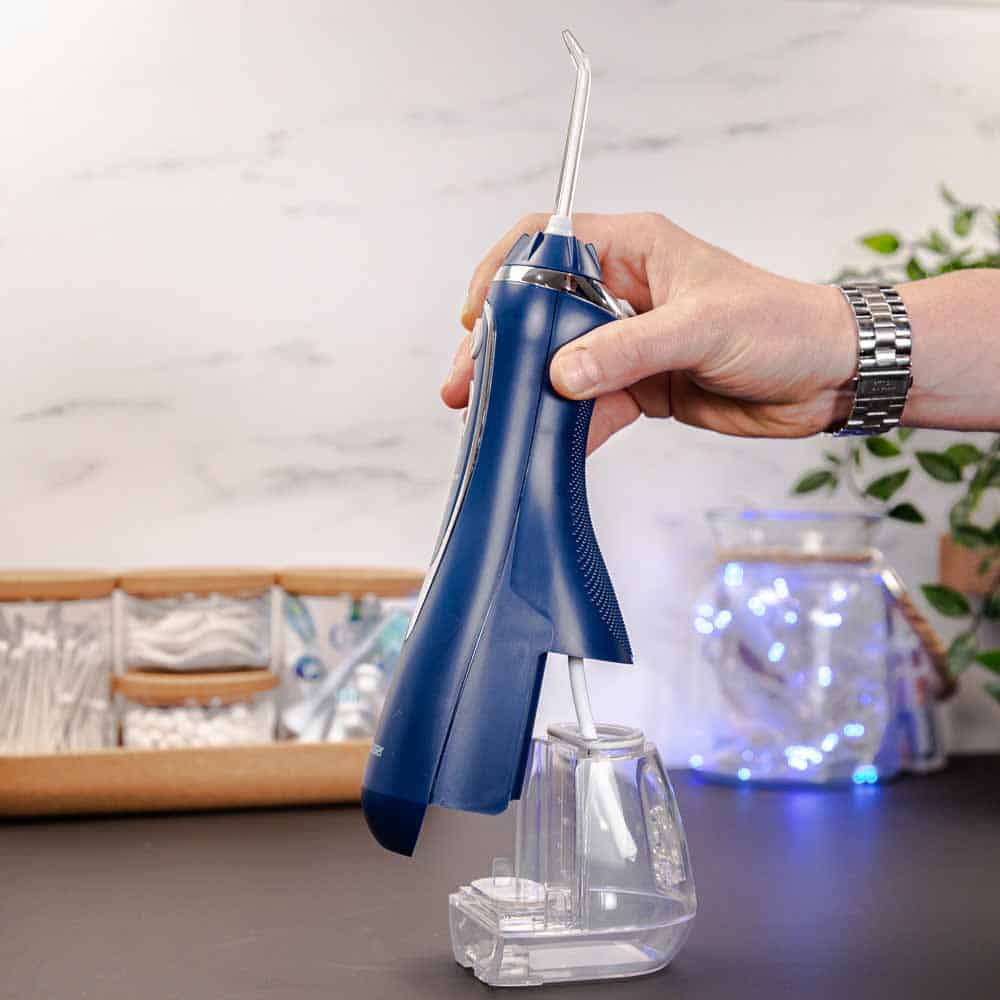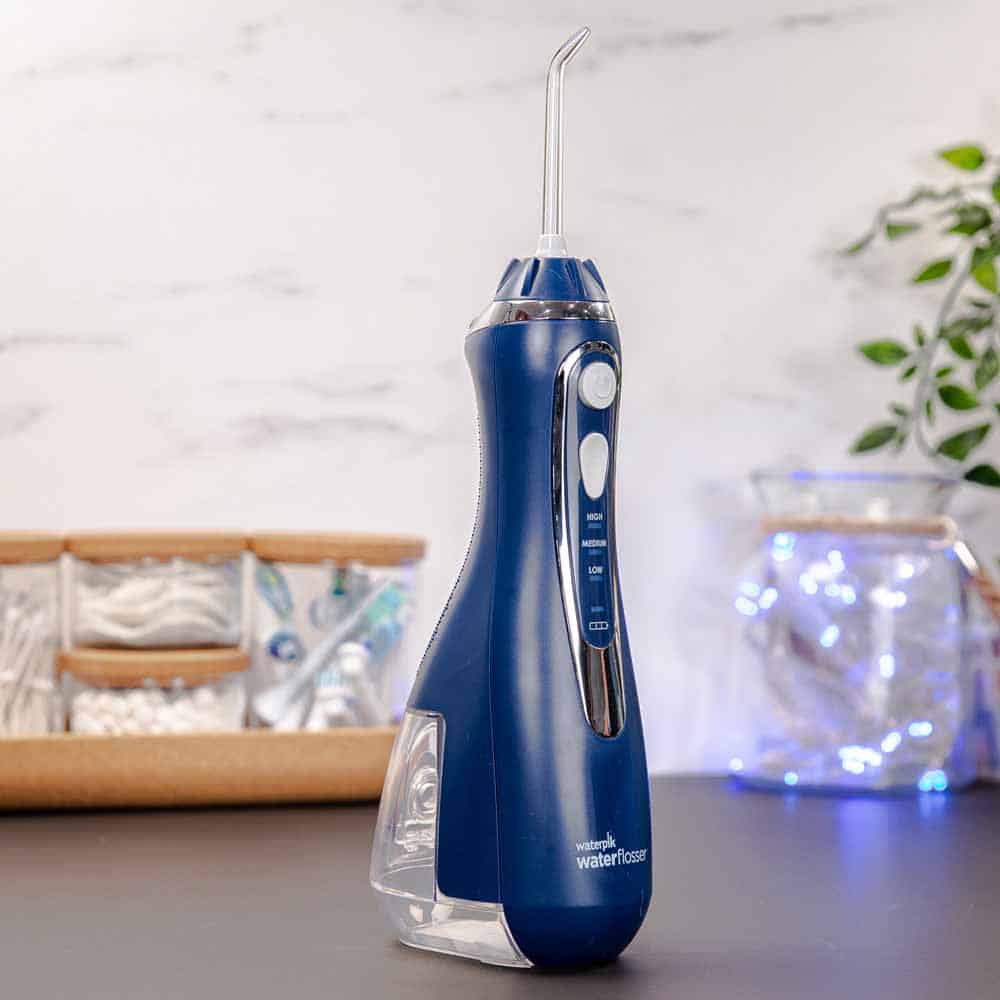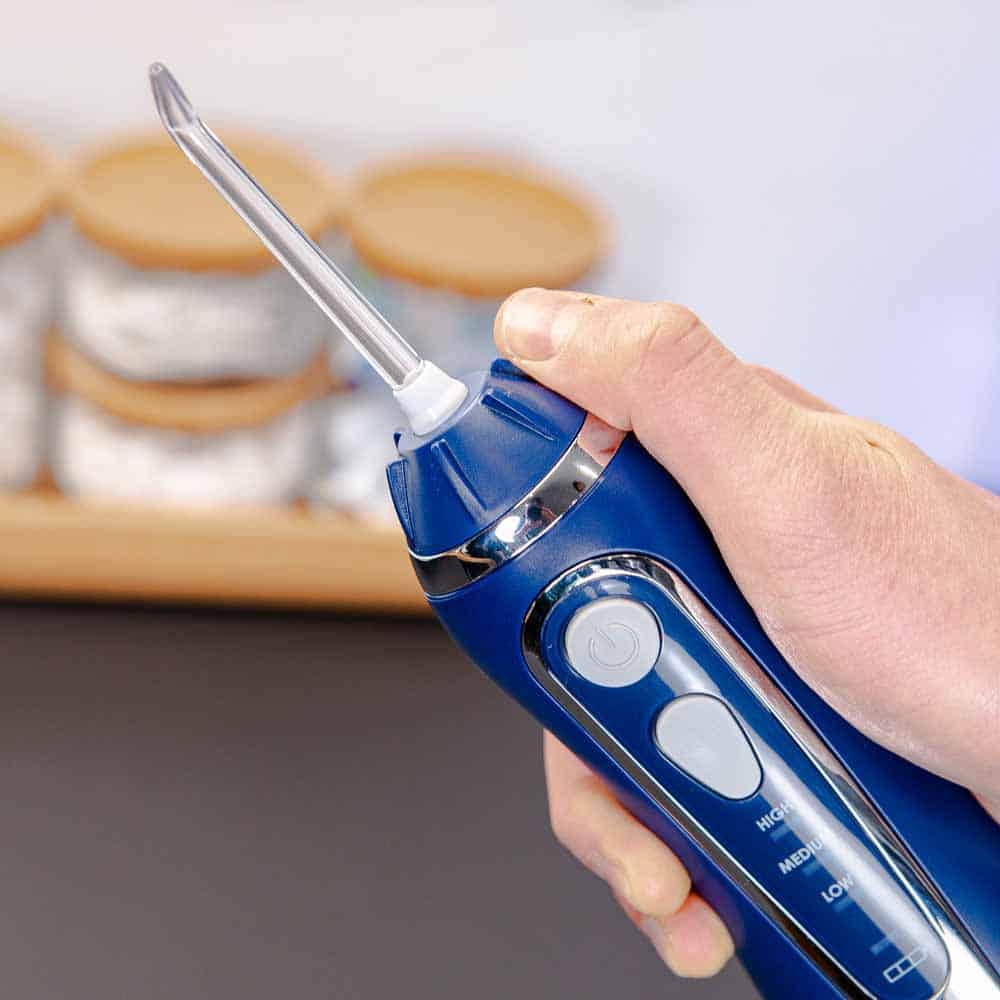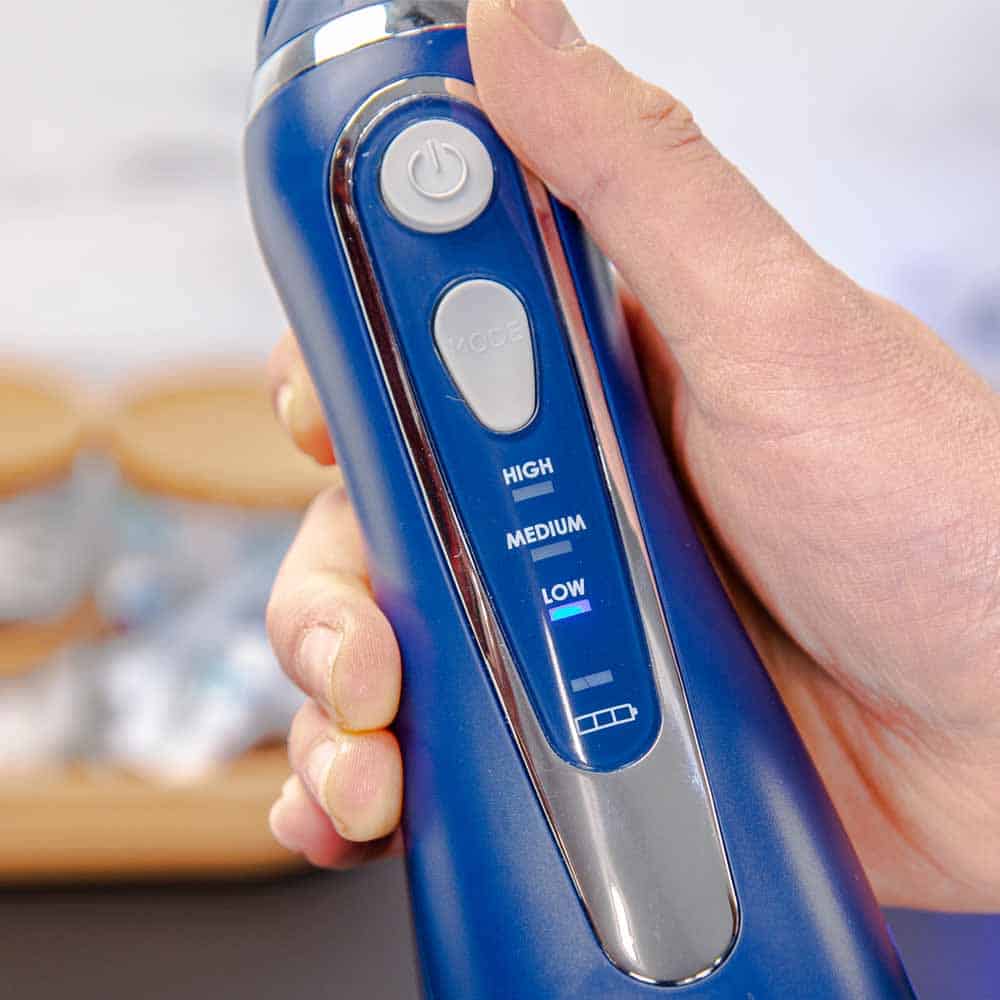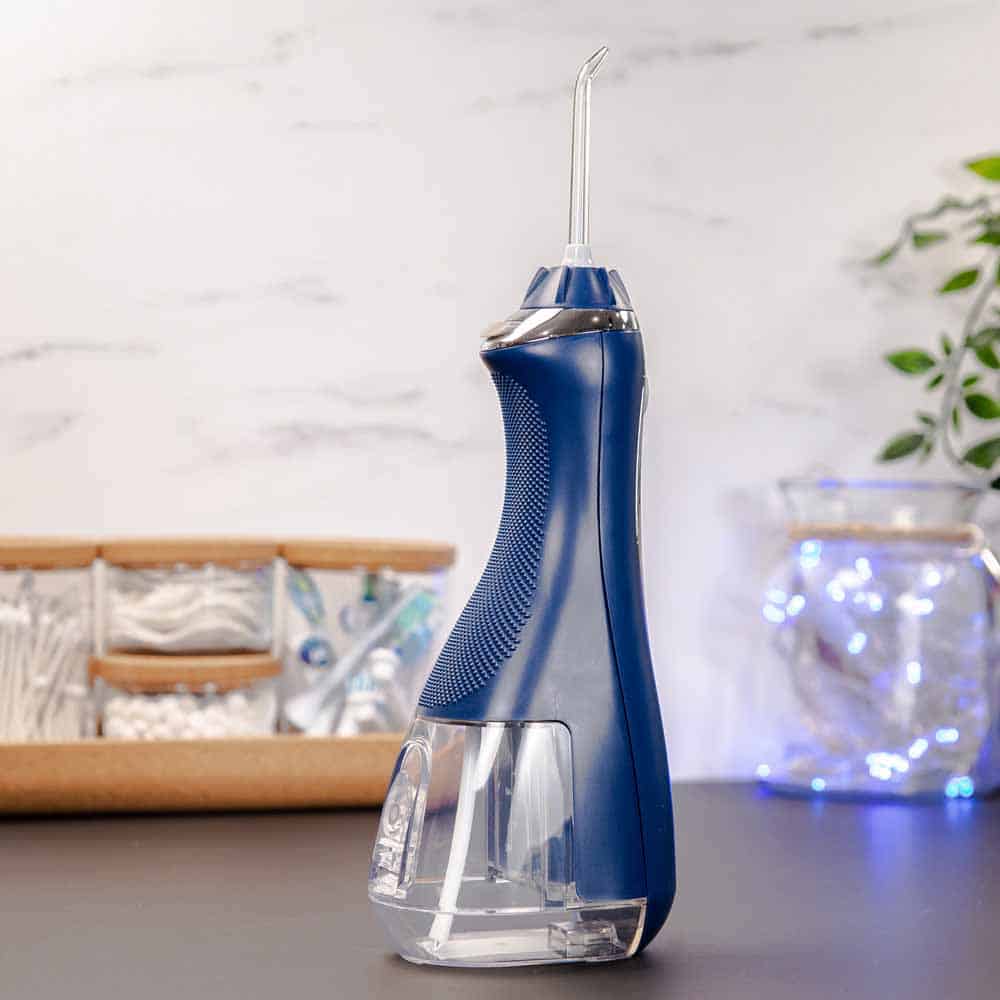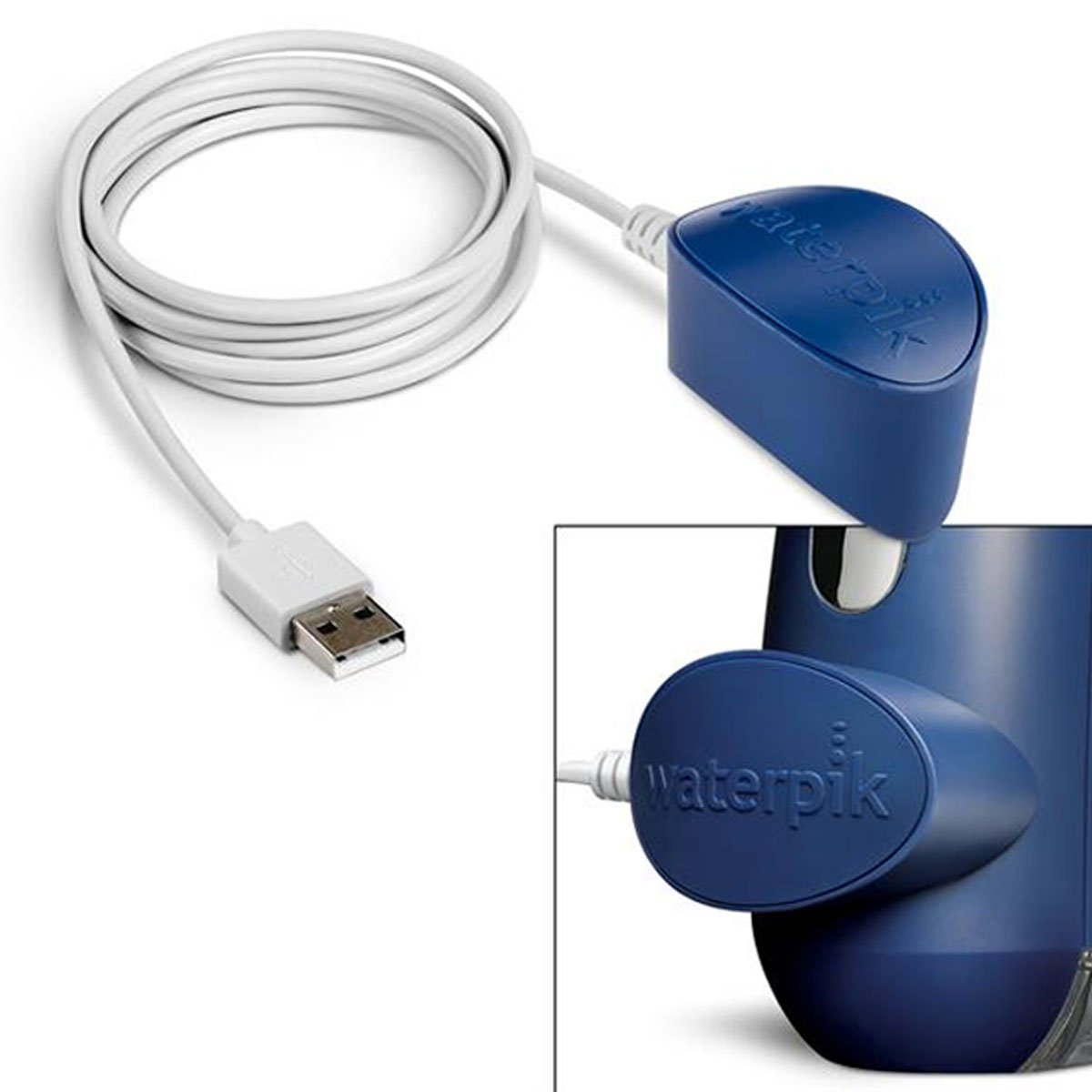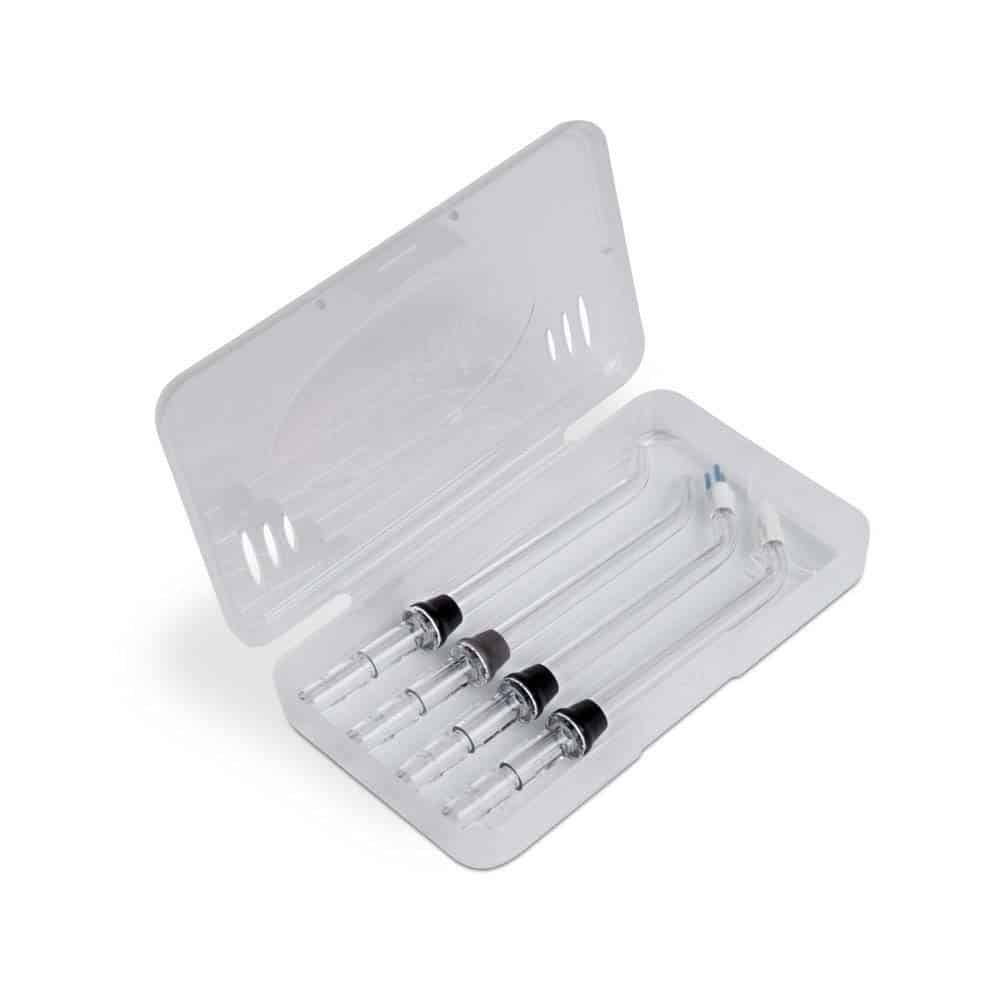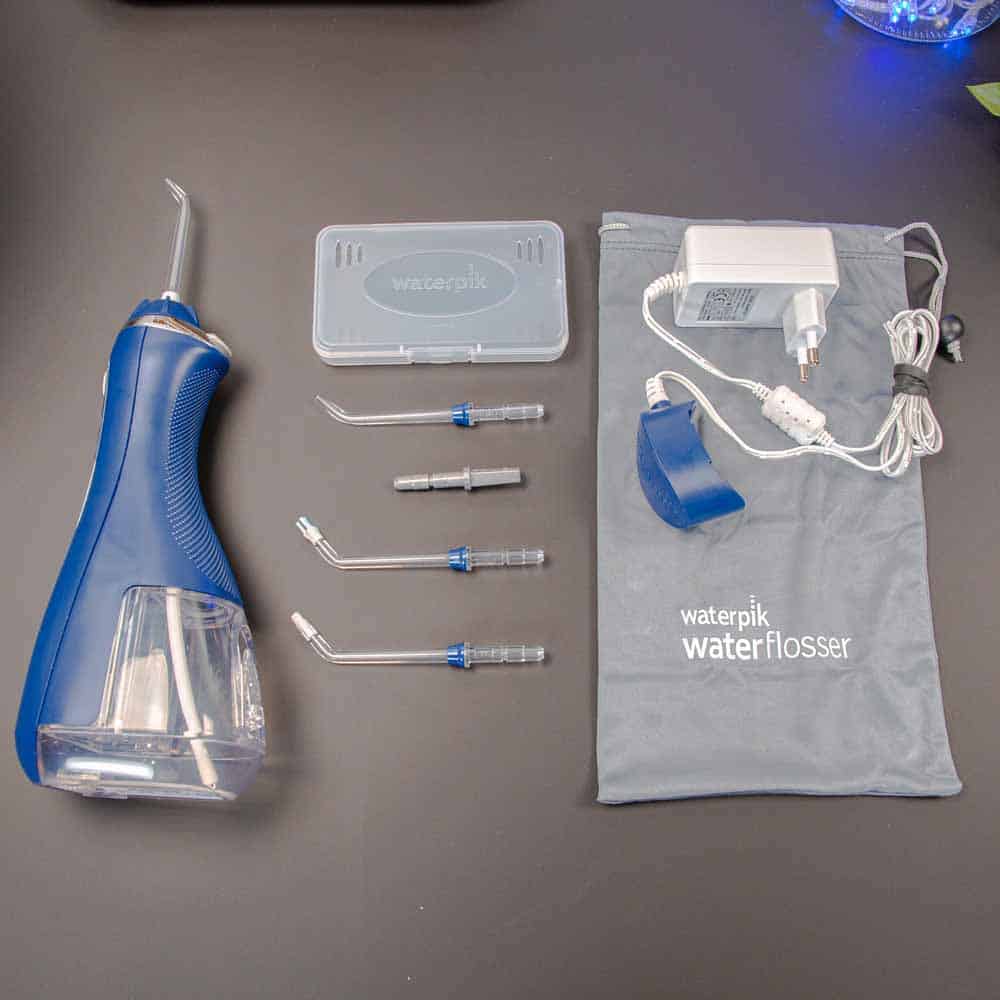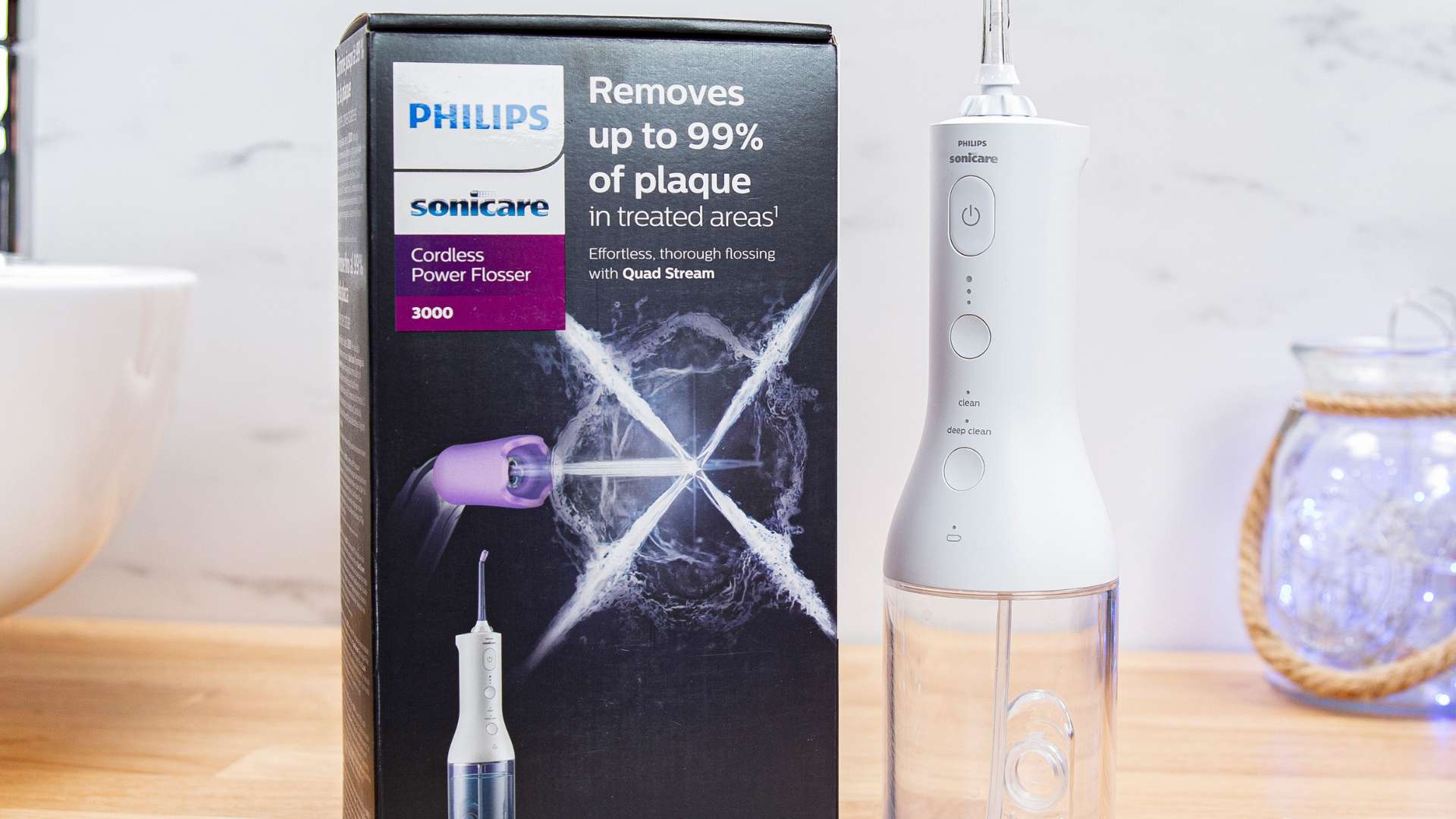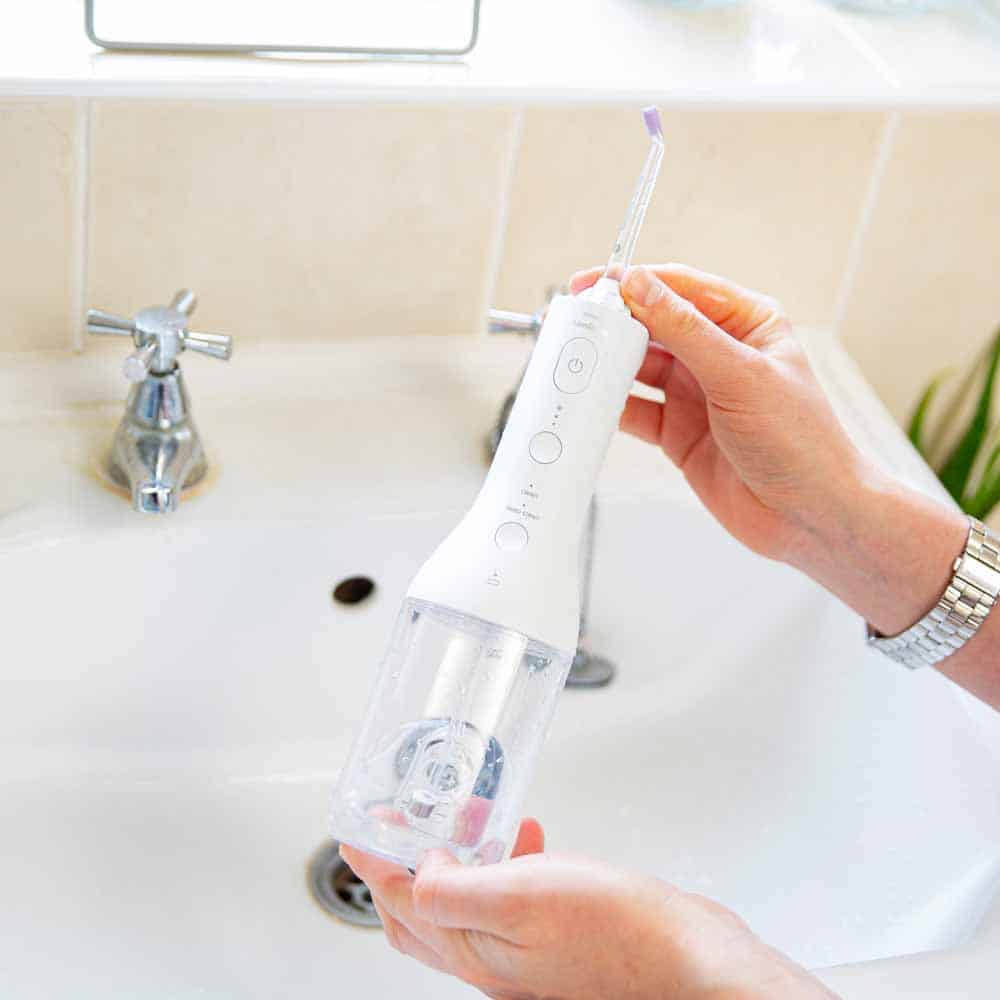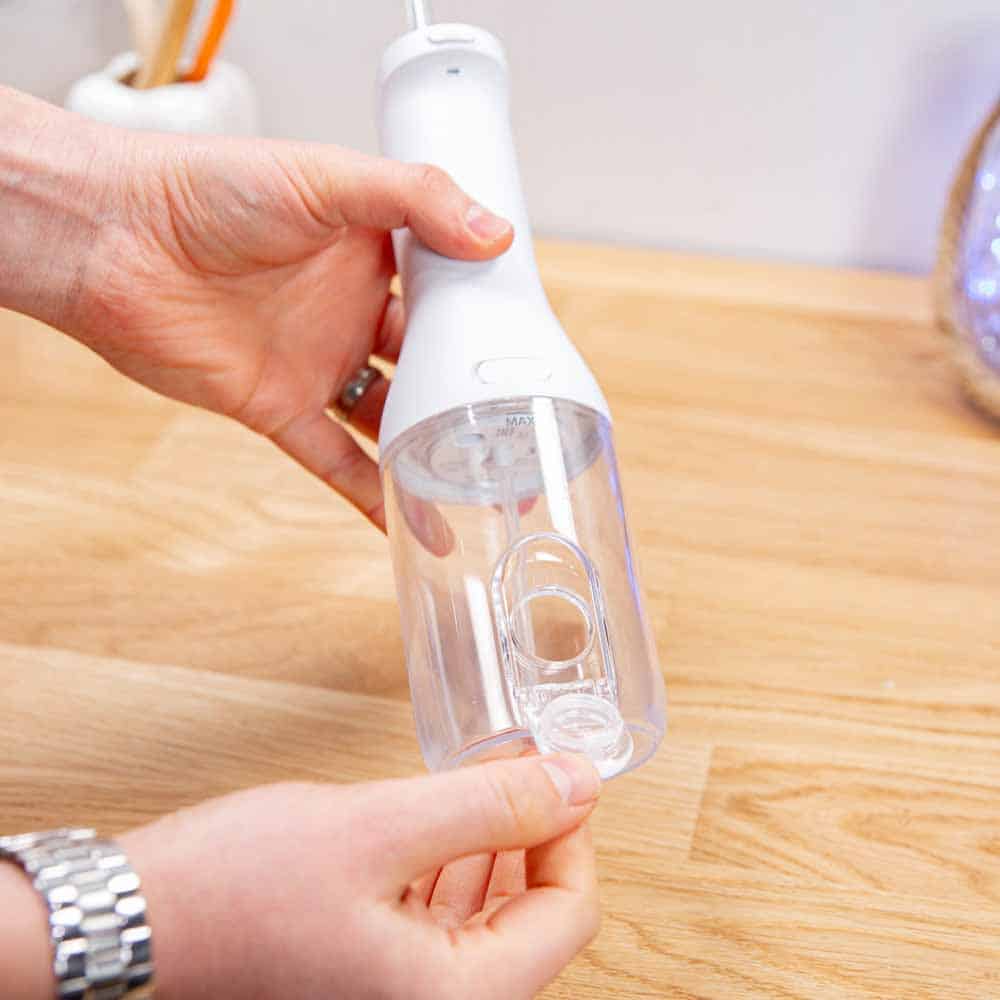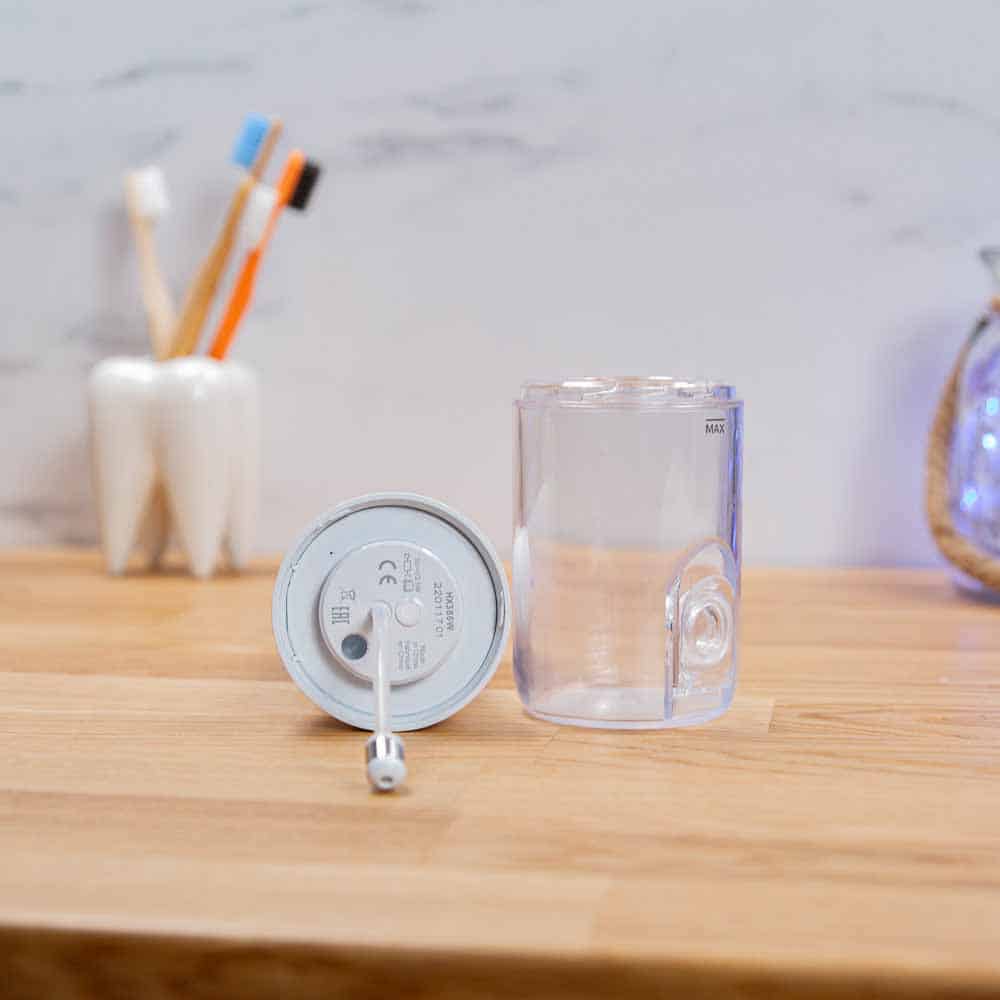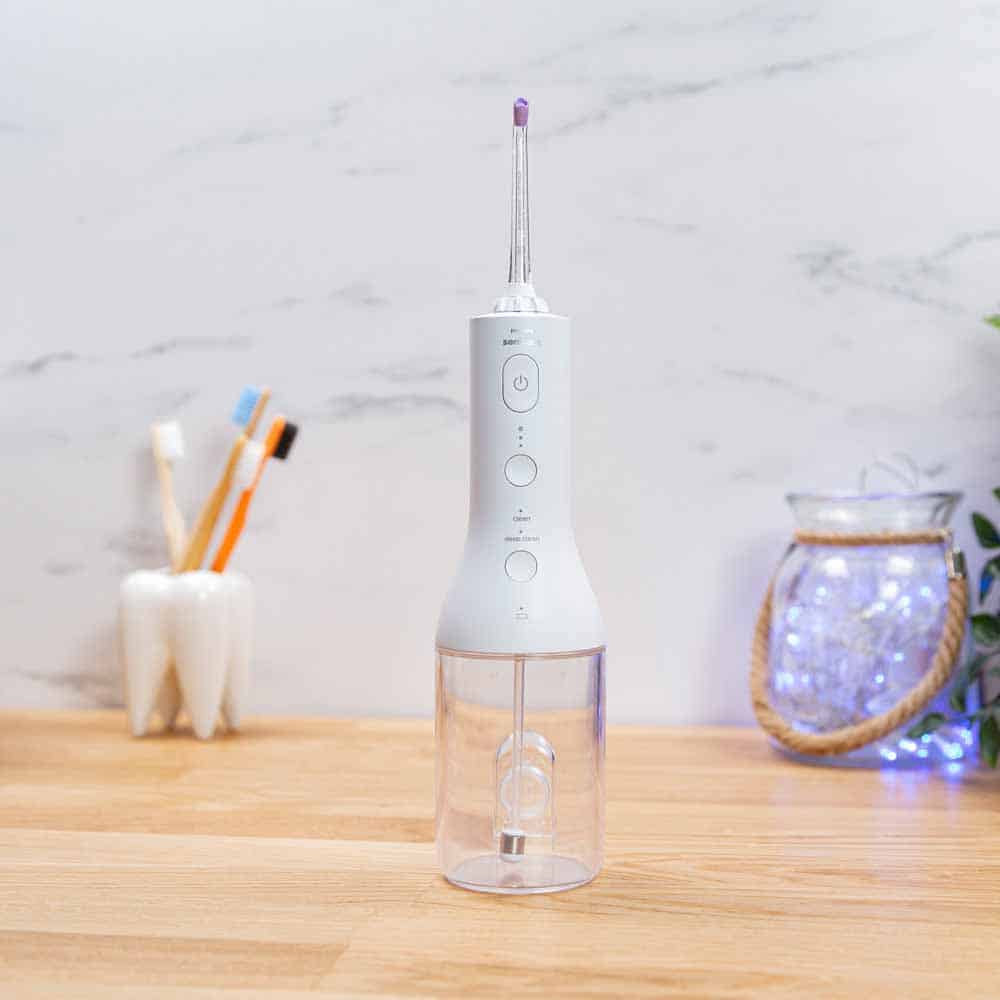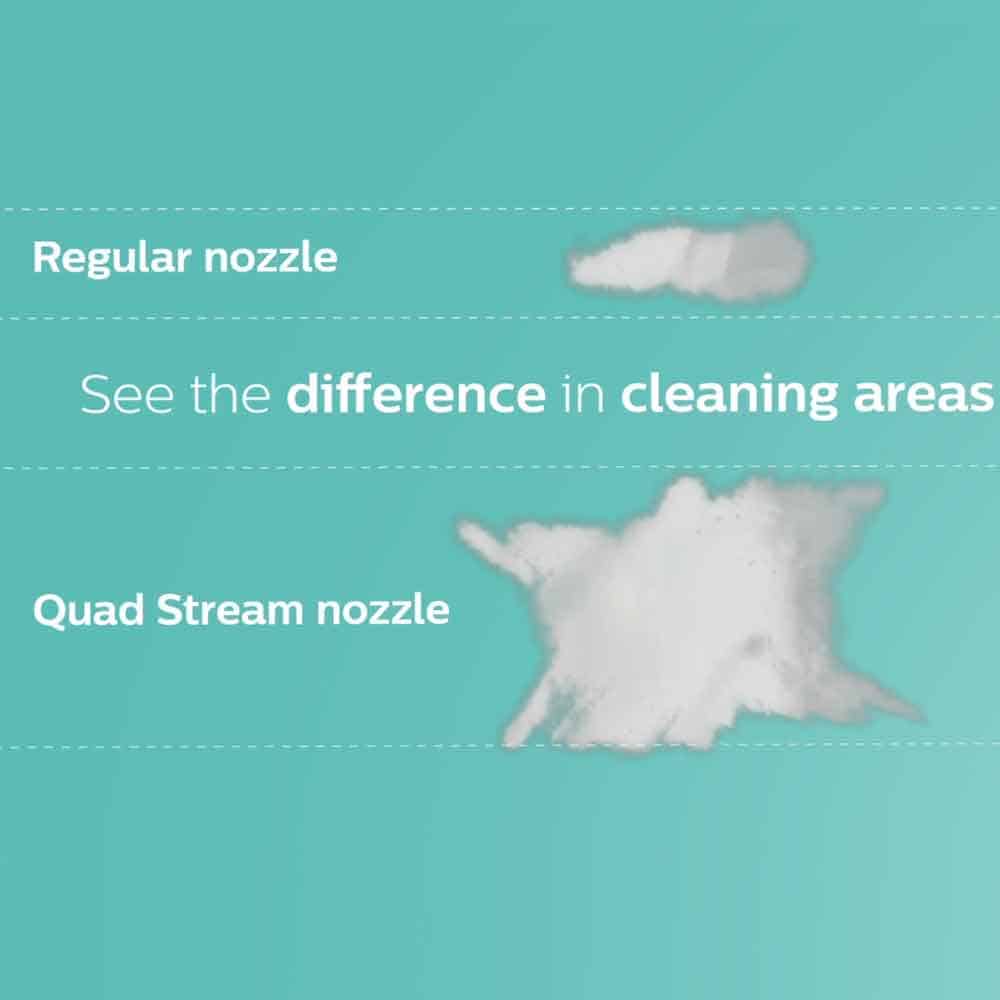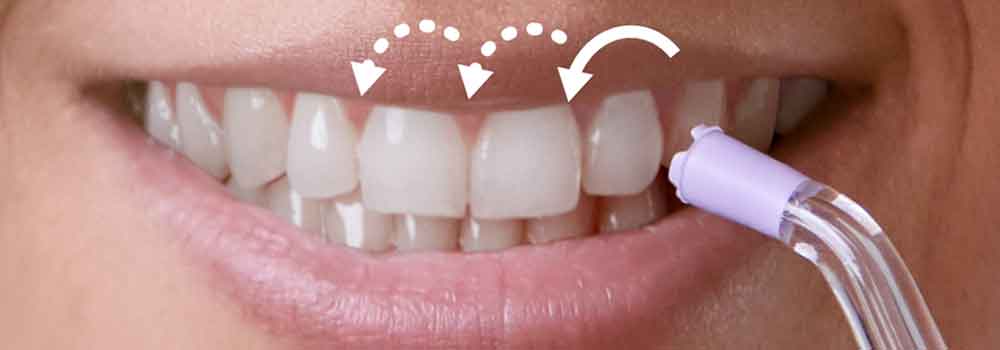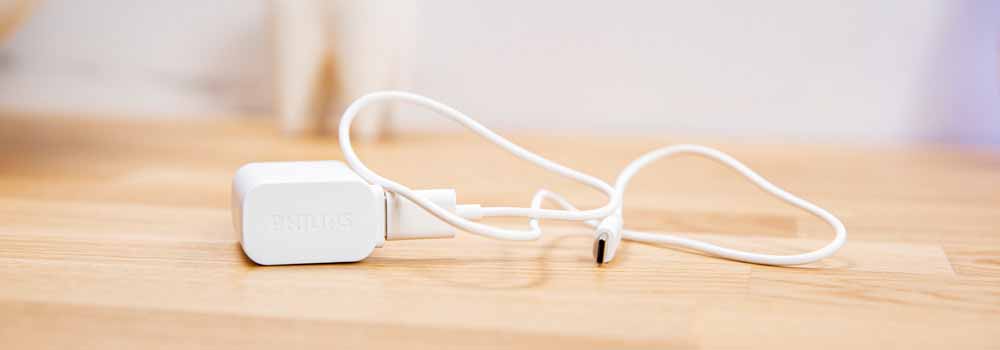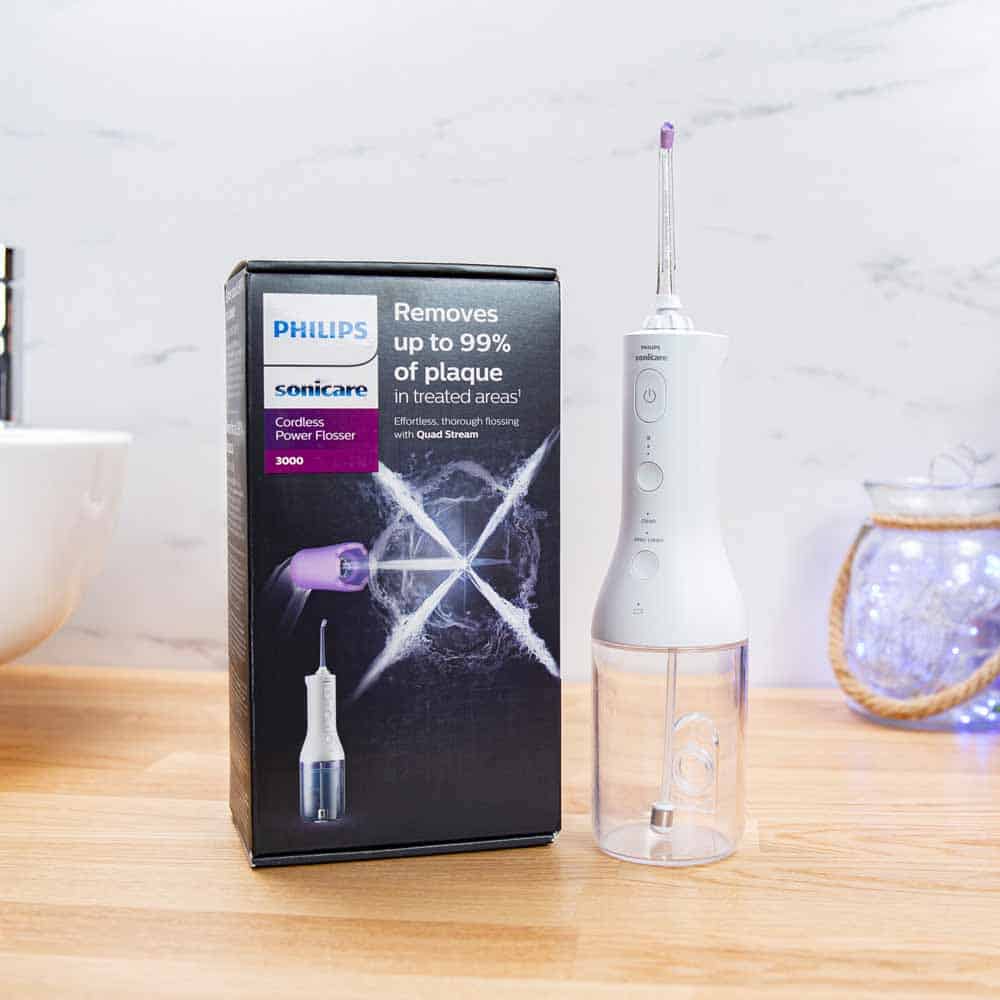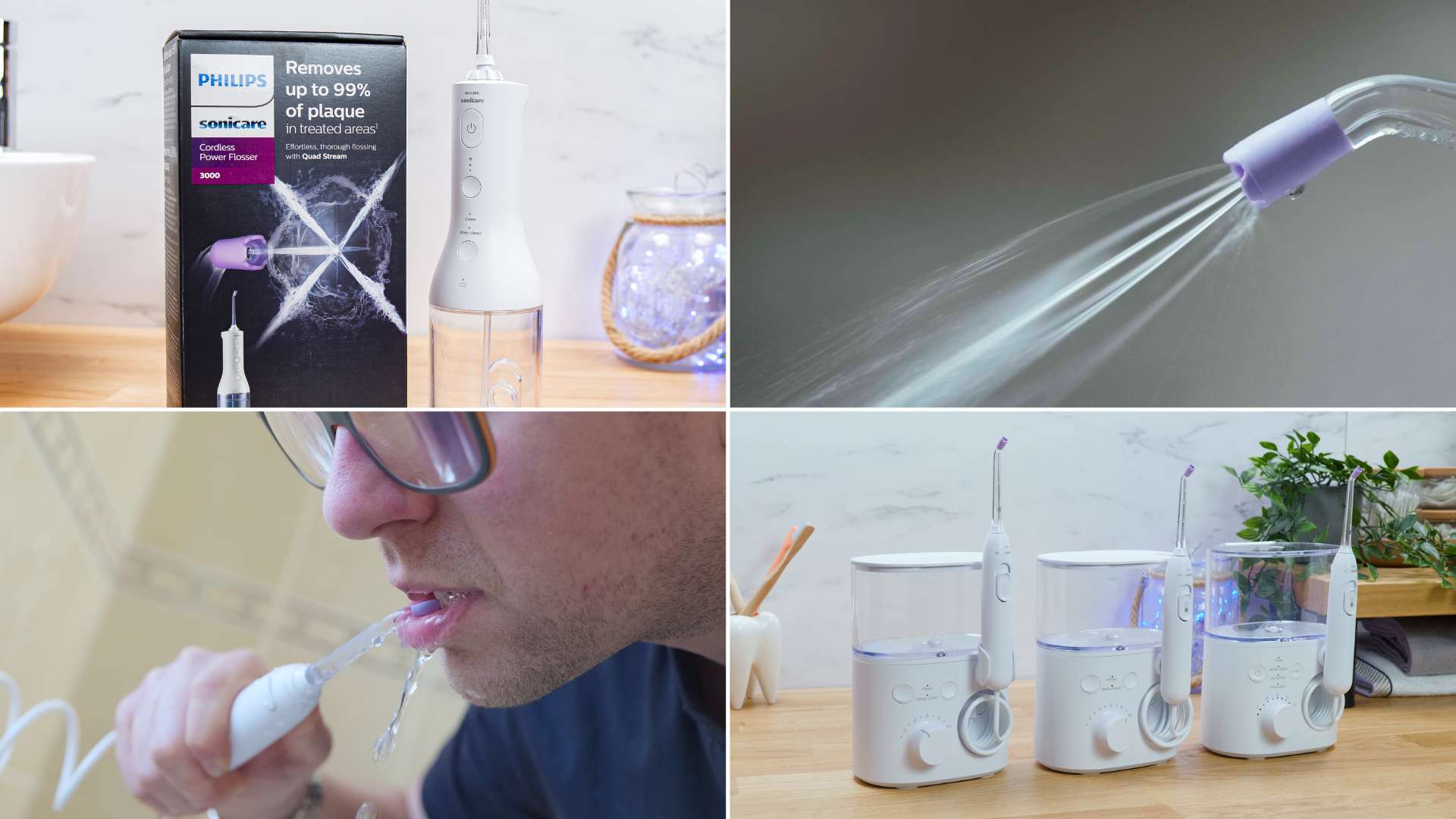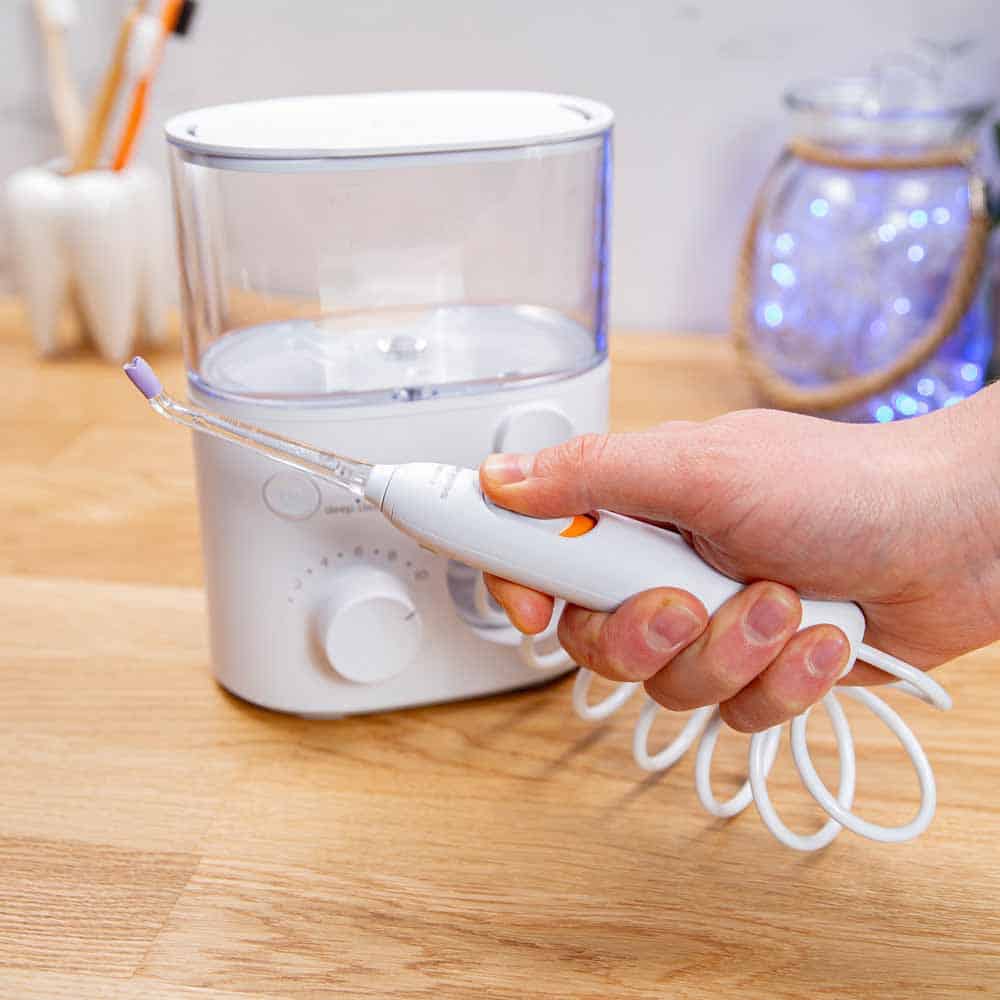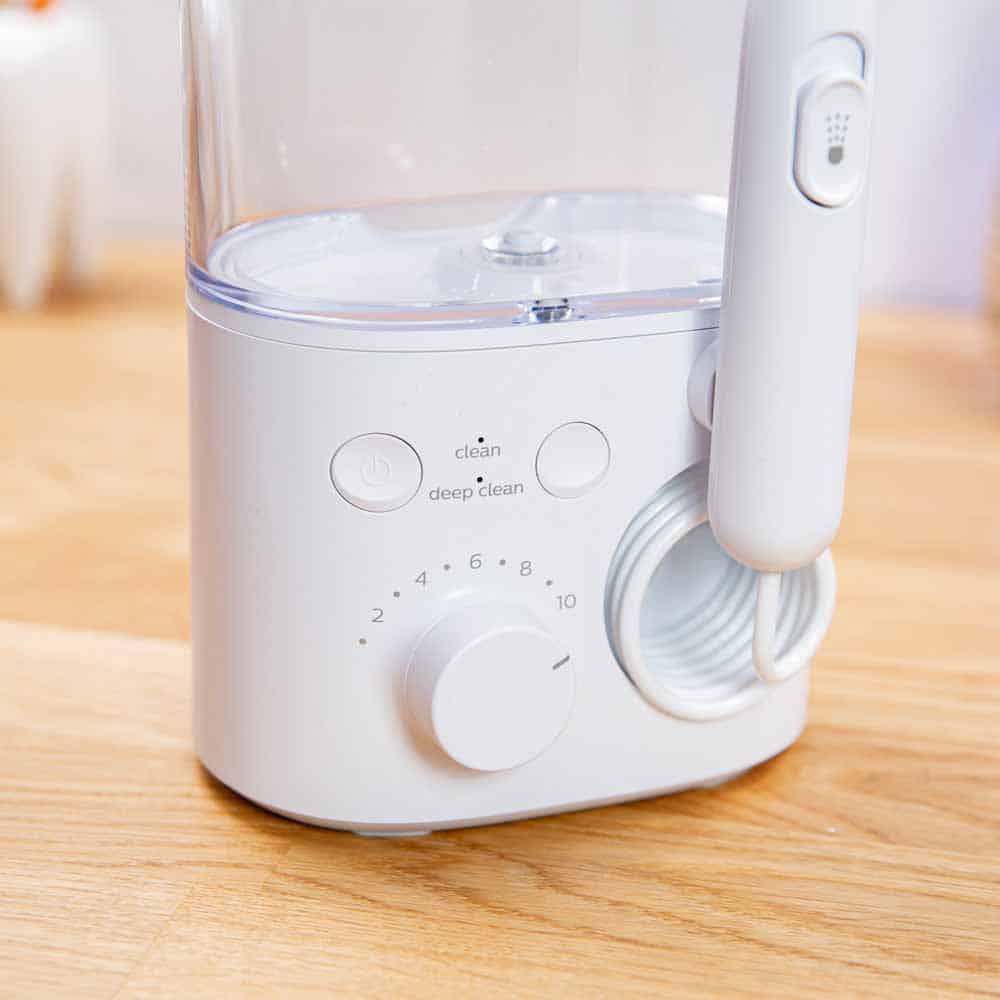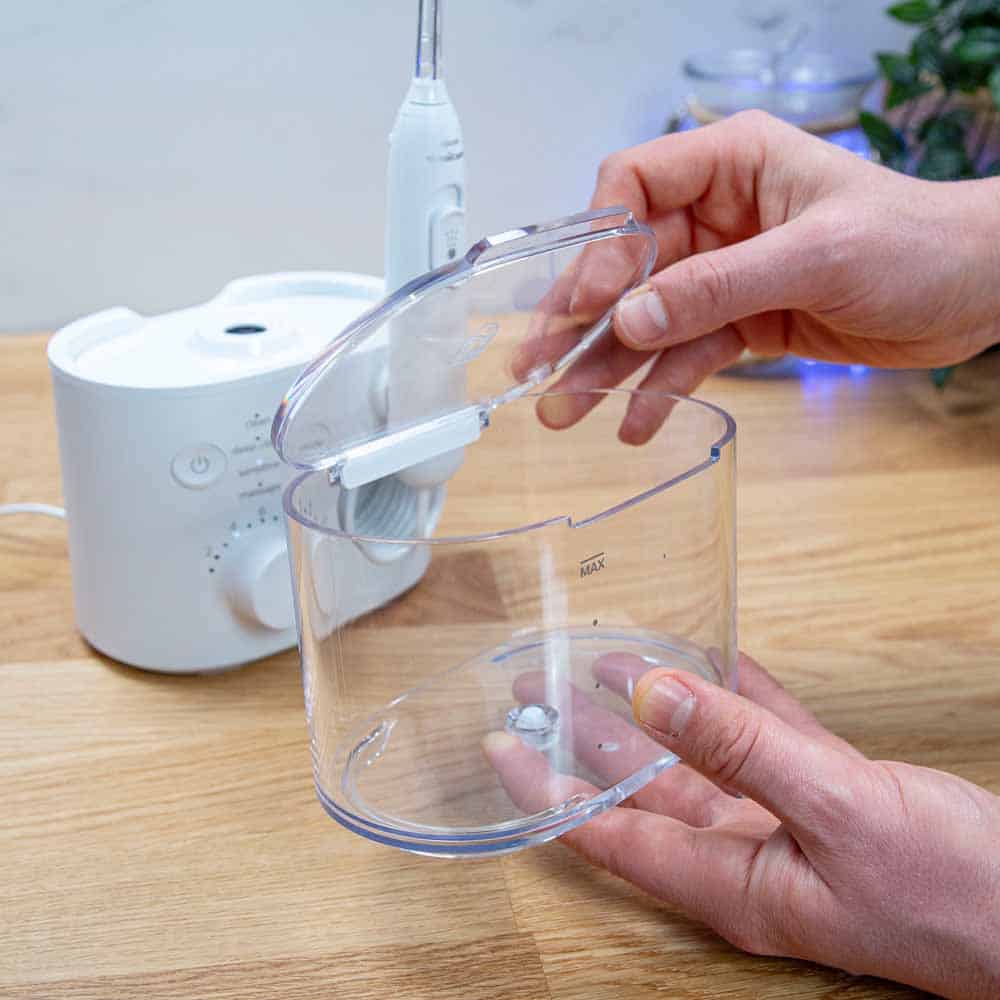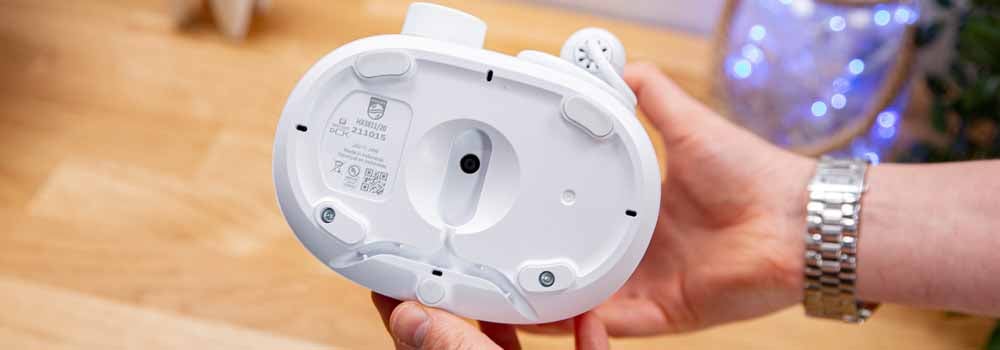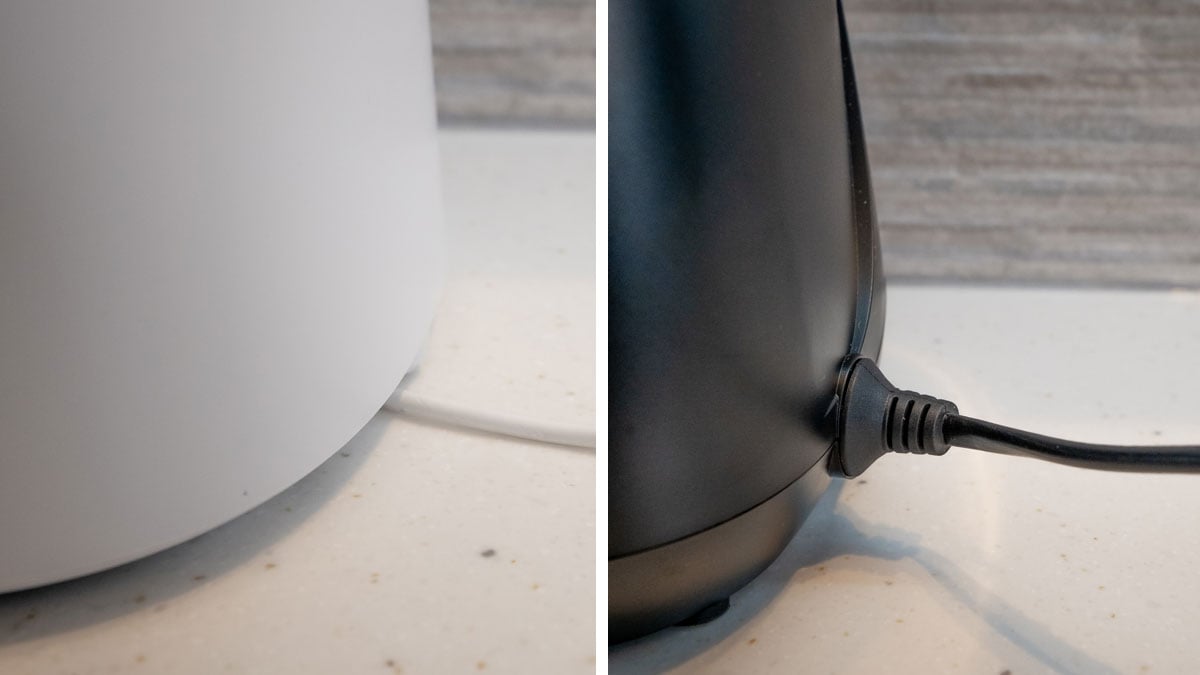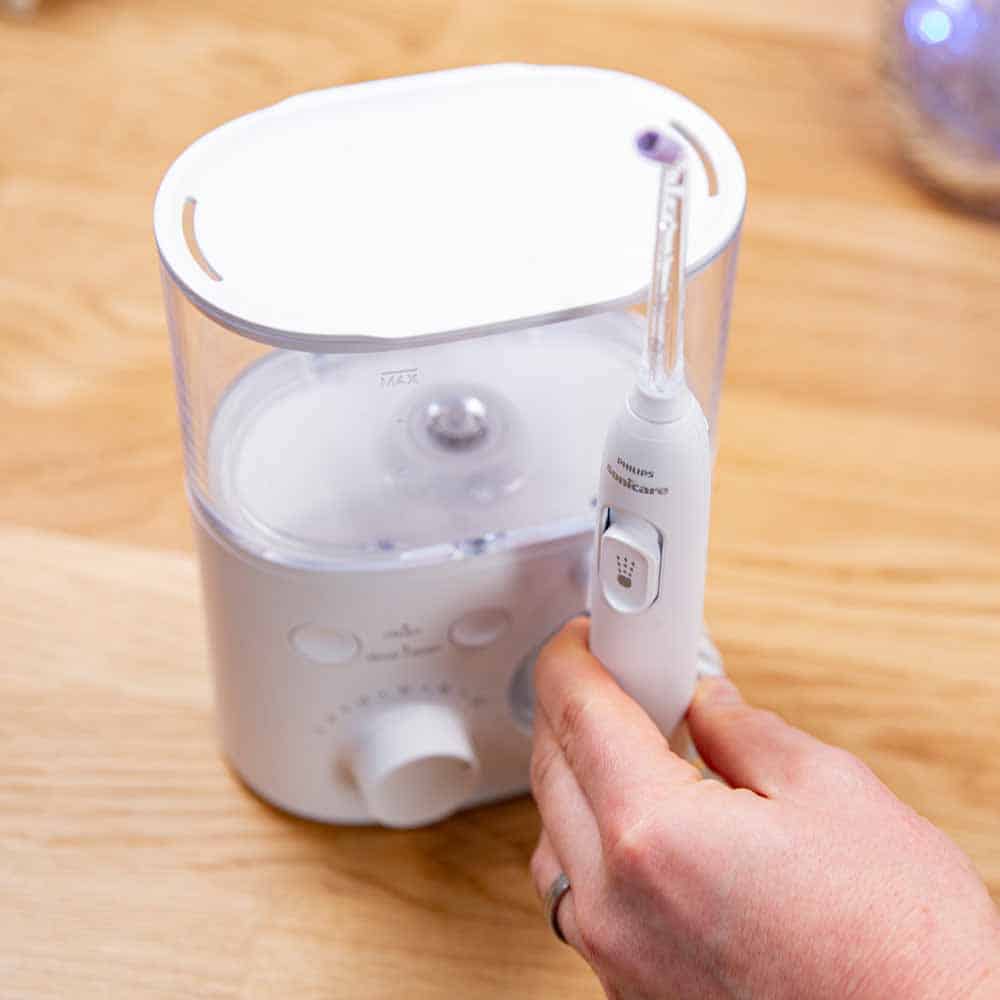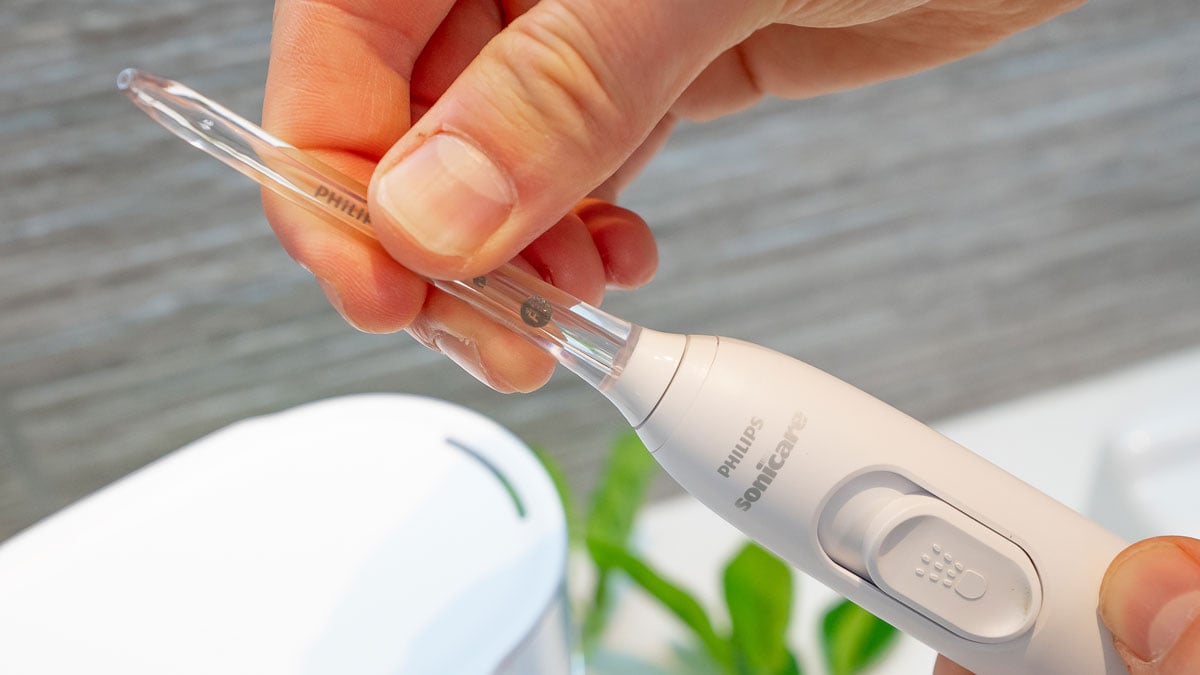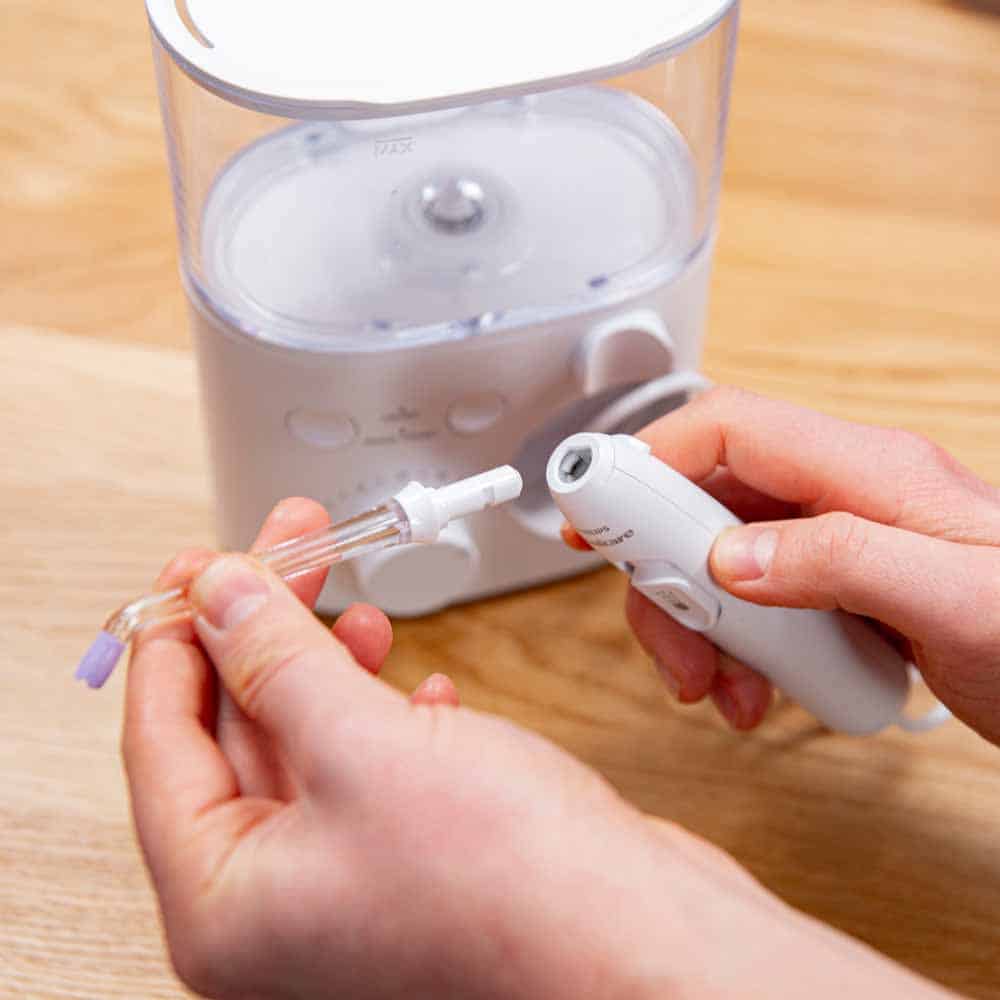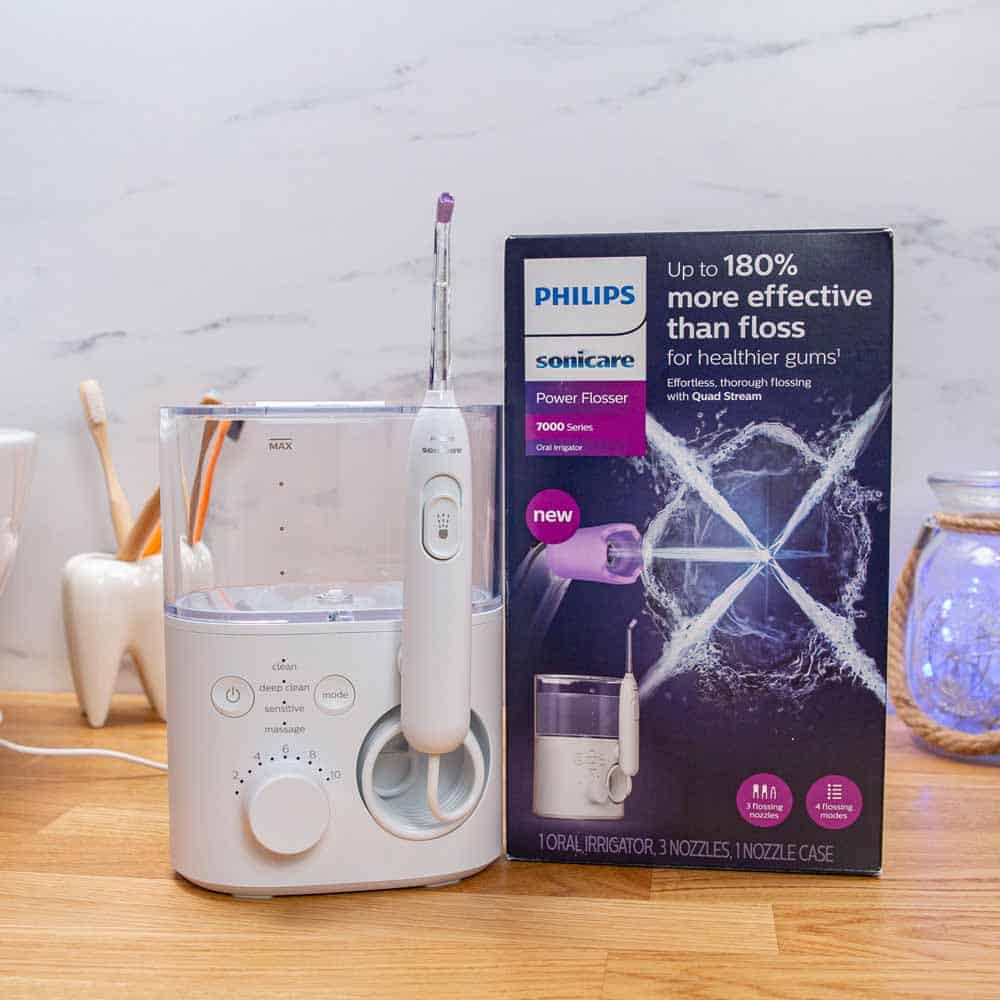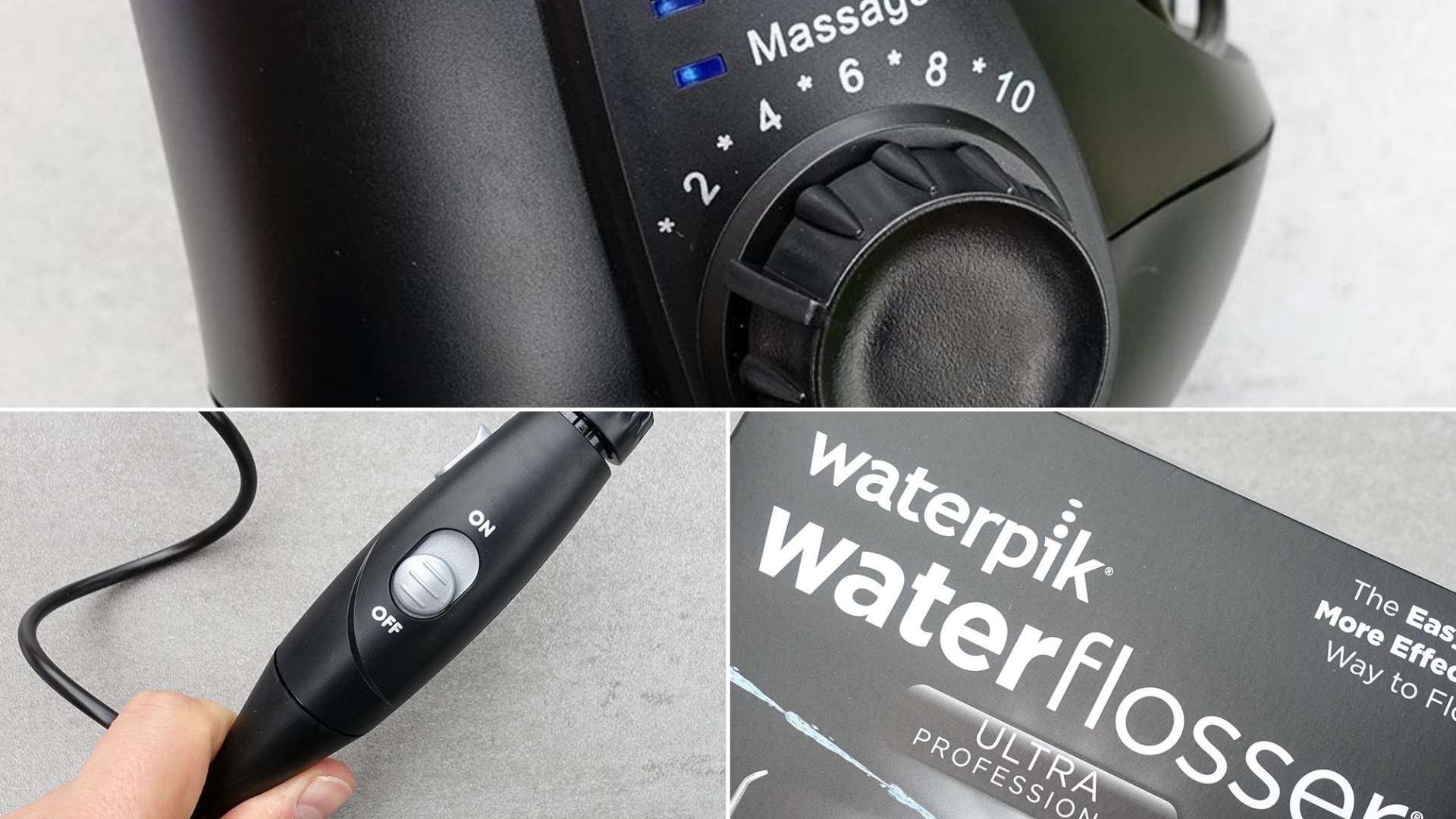
Our favourite countertop water flosser
The Waterpik Aquarius offers all the essentials you need for a countertop water flosser and more.
A fantastic all-round performer, it’s our top choice, even if it is a touch more expensive than we would like.

Pros |
Cons |
|---|---|

Stylish design & compact footprint |
Comes with more tips than most need |

Choose between 10 different pressure settings |
Price – a premium option |

Various tips included for individual specific needs |
|

Rotating nozzle for easier control |
A compact footprint and a stylish design
The Aquarius is taller than it is wide or deep, but has a relatively small overall footprint.
5 rubber feet on the base help keep it securely in place and raise it a little off the work surface.
If you want to mount this on a bathroom shelf, be aware you are going to need at least 12 inches of clearance and the shelf needs to support around 2.2lbs of weight.
The clear water tank is of an all plastic construction and contrasts with the coloured body of the unit, inside which all the electronics are stored.
You are not limited to a clinical feeling white colour only, the Aquarius is available in the following colours:
- White – WP-660
- Black – WP-662
- Blue – WP-663
- Grey – WP-667
The plastic has a matt finish rather than the gloss of some products and the curvature lines of the unit work well. Together these things make the unit look smarter.
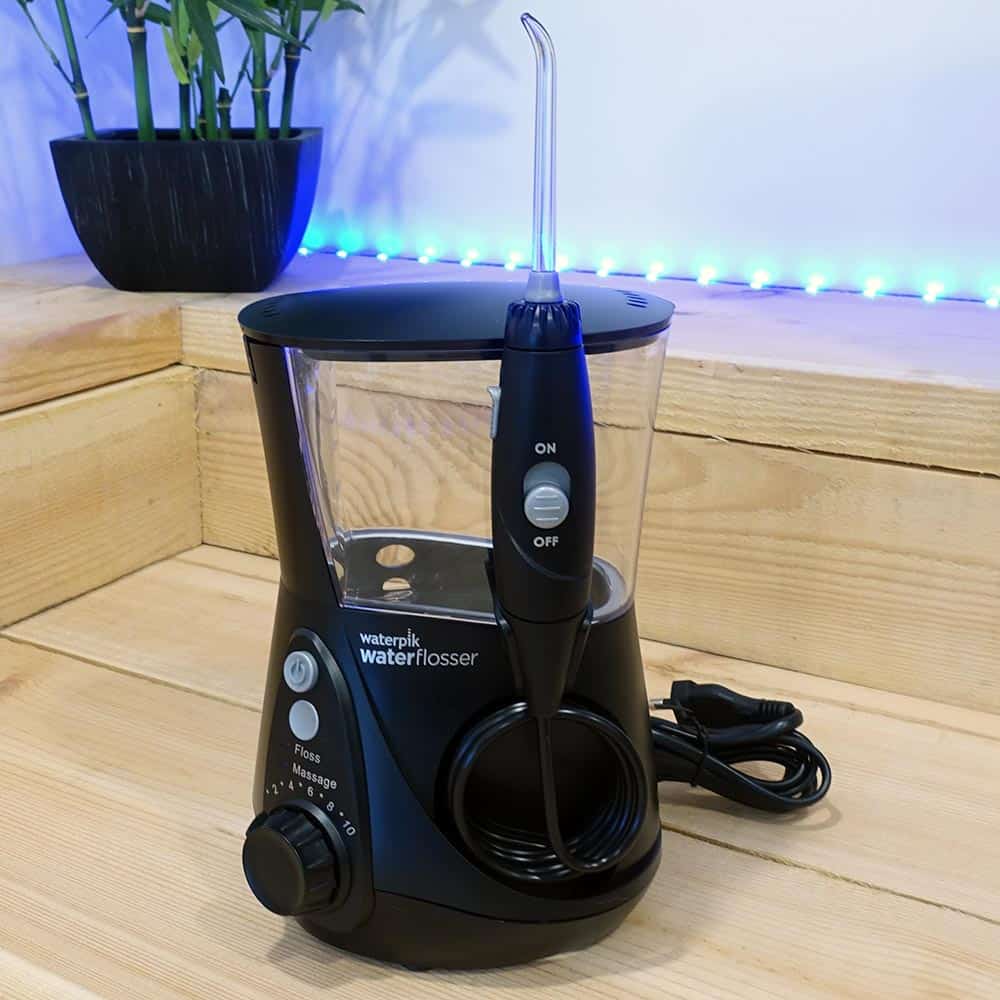
It needs to be plugged in
This water flosser does need to be plugged into a power outlet. There is a 2 pin power adapter hardwired into the rear. The cable length is about 4.5 feet.

If you don’t have a power outlet in your bathroom you will probably need to opt for a cordless model instead.
The main handle connects to the flosser via a hose, which neatly coils away into a recess within the body of the flosser.
With about 3.2 feet of length on the hose, you’ve got a little over 7 feet of maximum reach between the power outlet and the sink.
The dock in which the handle sits makes it easy to slide the handle in and out.
Waterpik considers this an ultra quiet device. The exact noise depends on the pressure setting chosen, but expect up to 72 decibels of sound. I’d consider this pretty average rather than ultra quiet.
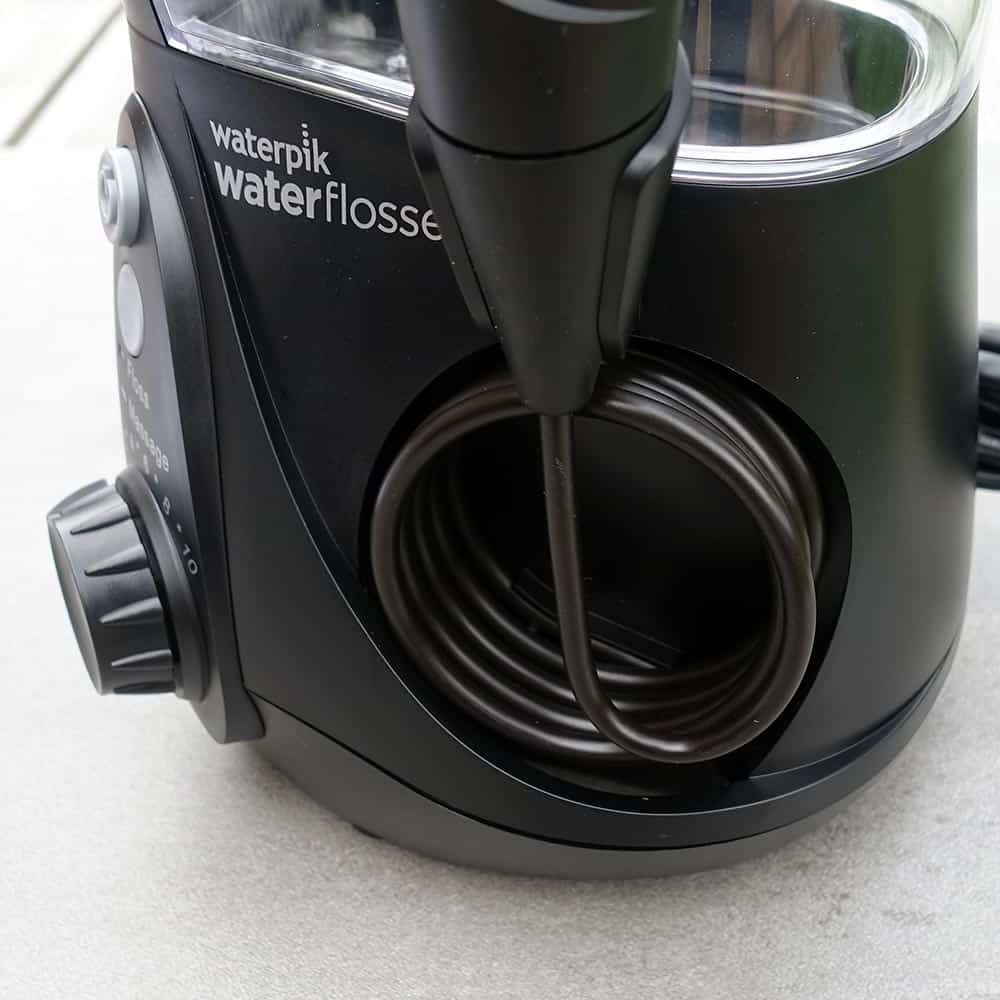
Multiple flossing sessions on a single fill, unlike cordless models
You don’t need to refill the tank every time you floss with the Waterpik Aquarius.
It has a removable reservoir with a capacity of 651ml/22 ounces. A larger reservoir is one of the benefits of a countertop unit.
When set to the highest pressure setting of 10 the tank will drain in about 90 seconds.
On the lowest setting, it lasted for around 4 minutes and 45 seconds during my testing.
Subject to how you use it, you will likely get 2 flossing sessions out of it before it needs a refill.
When you do need to refill, it is simple to do so. Just lift off the tank, fill it and place it back under the hinged lid that stops dust and debris from getting into the water.
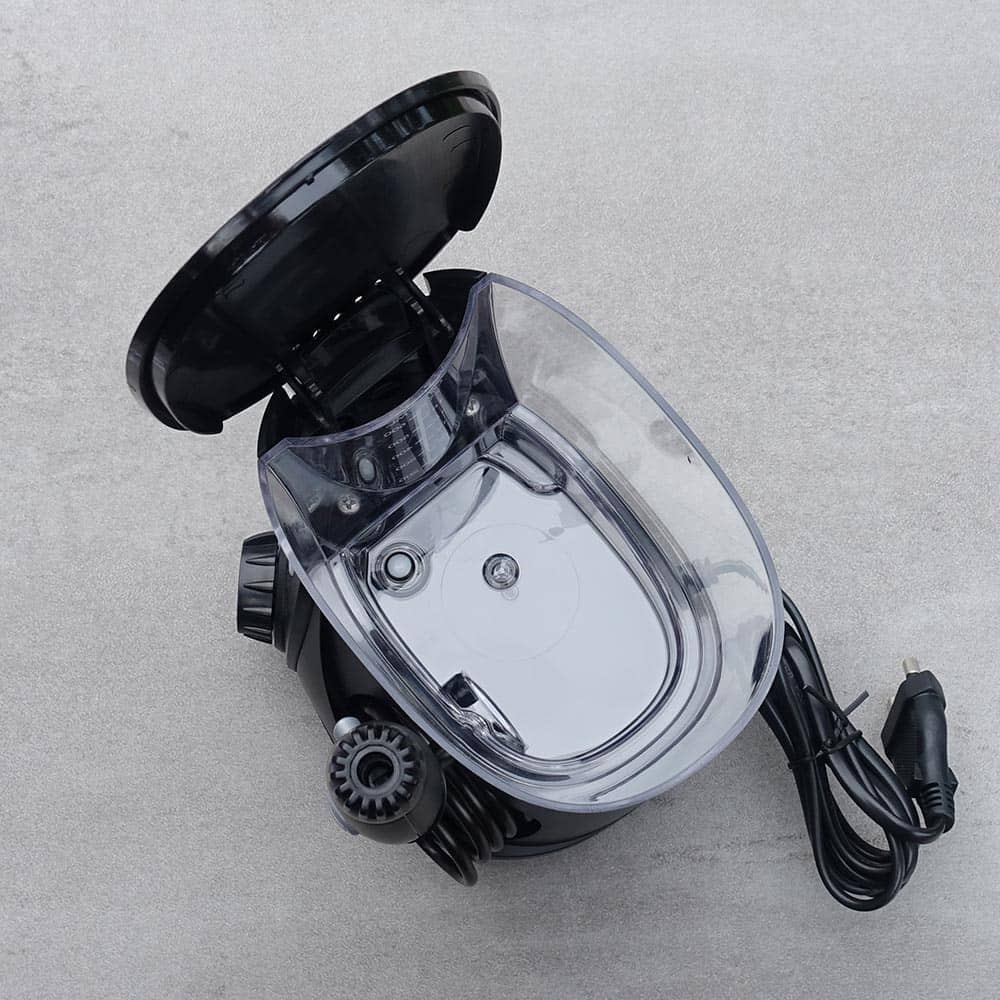
The pacer helps you floss evenly
As is the case when you brush your teeth, it’s preferable to floss evenly, too. The more consistently you floss and the more thoroughly you cover your teeth, the more you reduce your chances of developing dental health issues.
A proficient user might be able to floss in as little as 45 seconds, but the aim here is that a normal flossing session should take around 1 minute. You can spend 30 seconds per arch, flossing both the outer and inner surfaces.
A short pause in the water flow at 30 seconds is your signal to move between arches, and then again at 1 minute to signal that the cleaning should be completed.
The unit will continue to run without pauses until it is turned off.
If you don’t like the pacer, it is possible to deactivate it.
A grippy dial makes it easy to move between intensities
You don’t need 10 different pressure settings to get a good clean and enjoy daily use.
But, there is something quite appealing about the ability to dial in the amount of pressure and the intensity on offer.
Ranging from a very gentle 10 PSI through to a powerful 100, even I as a more experienced user tend to settle around level 7.
If you are new to water flossing you probably want to start around level 3 and adjust accordingly.
If you’ve just undergone extensive dental work, level 1 might be best to give some sort of rinse but not apply too much force to tender and inflamed tissue.
The textured and grippy dial makes it easy to move seamlessly between the intensities as you choose.
Compared to cordless models you have far more choice. They don’t tend to offer such a low or high intensity.
It’s not all about power, though, technique is important as well.
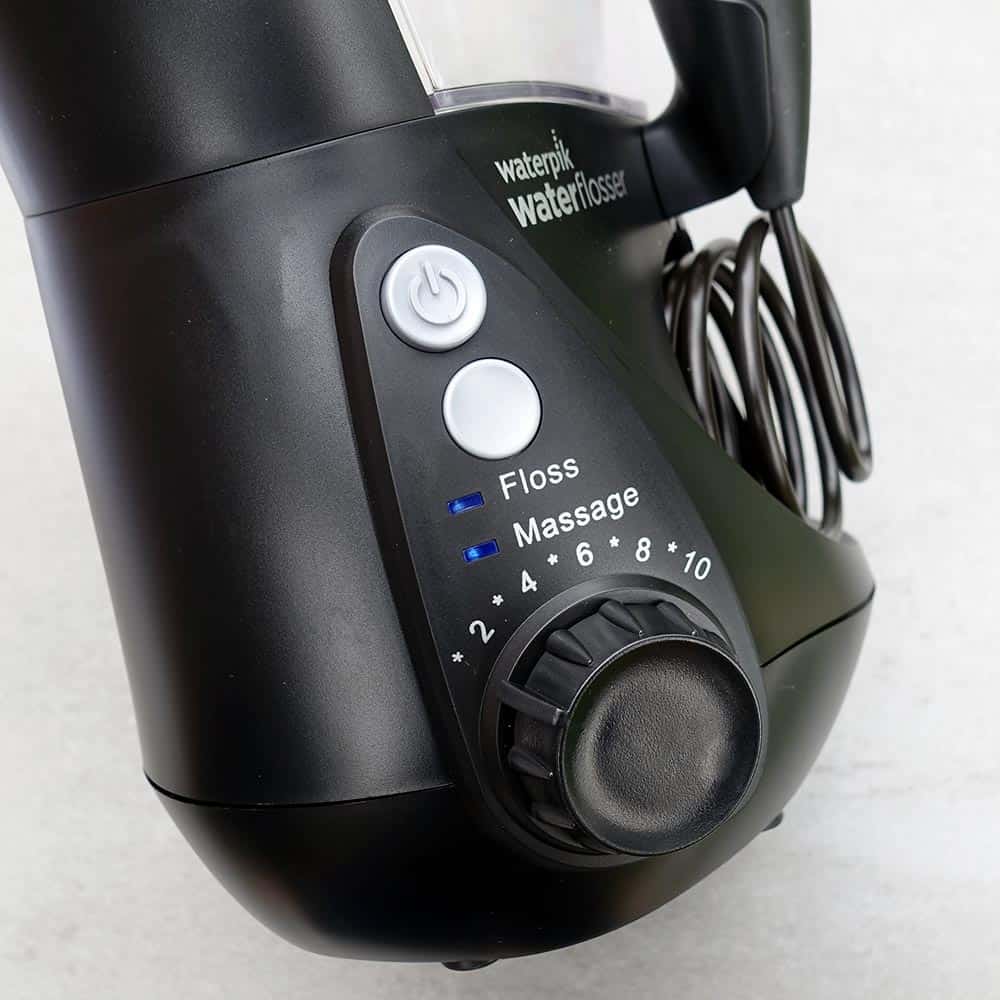
The switch and rotating nozzle are easier to use than other models
Between the switch and the rotating nozzle, you are given the ability to dial in the control of your flossing session. It's quite easy compared to some other models and in particular cordless ones.
Easy to use, the sliding switch sits proud of the rounded handle. Its textured surface is easily detected by the fingertip. It glides smoothly and makes it effortless to switch the water flow on and off as you desire. It’s ideal when you need to reposition the tip to reach certain areas of the mouth.
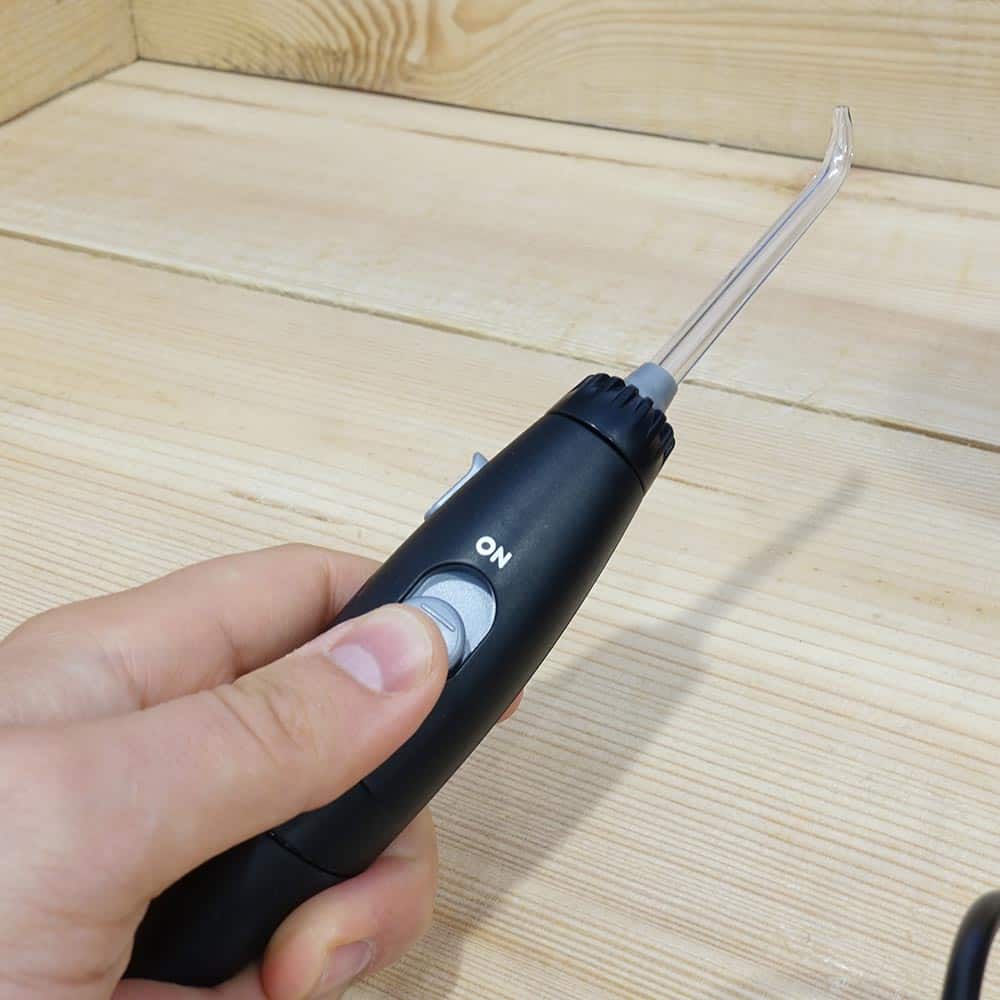
The interchangeable nozzles clip into the top of this handle. They can be rotated a full 360 degrees.
The upper part of the handle rotates. There is a ridged texture on the edge that aids with detection and grip as you move it, in either a clockwise or anticlockwise direction.
On the main unit, there is a concave button that switches between the standard ‘Floss’ and ‘Massage’ mode, when pressed.
Selecting the massage option changes the water flow in a way that is designed to stimulate them. It is supposed to work well if you have sensitive gums and suffer from periodontal disease. I’m not in a position to say whether it makes much difference compared to the standard floss mode on a lower setting.
Dentist-approved cleaning results
Dr Gemma Wheeler has researched and compared the different flossing methods. Although interdental brushes are ‘the best’ she says ‘you need to choose a tool which you feel happy using’ and for many a water flosser is that tool. It’s less fingers and thumbs and more about getting the job done.
I’ve used all the tools and do find a certain convenience to water flossers. I’ve been impressed with the results the Aquarius has given. It’s amazing what debris lurks in the mouth — the evidence is often left in the sink.
Waterpik does invest in a lot of clinical testing. These self-funded studies are potentially prone to bias, but the focus on constant research has to be praised. Countless studies support the plaque removal results of the Waterpik Aquarius and how it can help with things like bleeding and inflamed gums.
Waterpik products are often the subject of other clinical tests and both the Oral Health Foundation and the American Dental Association have awarded them their respective approvals. This extra independent verification is reassuring and confirms that the Aquarius performs as expected.
More nozzles than you need
7 different nozzle types are supplied with the Aquarius Professional. You get:
- 3 x JT-100E – Classic Jet tip
- 1 x OD-100E – Orthodontic tip
- 1 x PS-100E – Plaque Seeker tip
- 1 x PP-100E – Pik Pocket tip
- 1 x TB-100E – Toothbrush tip
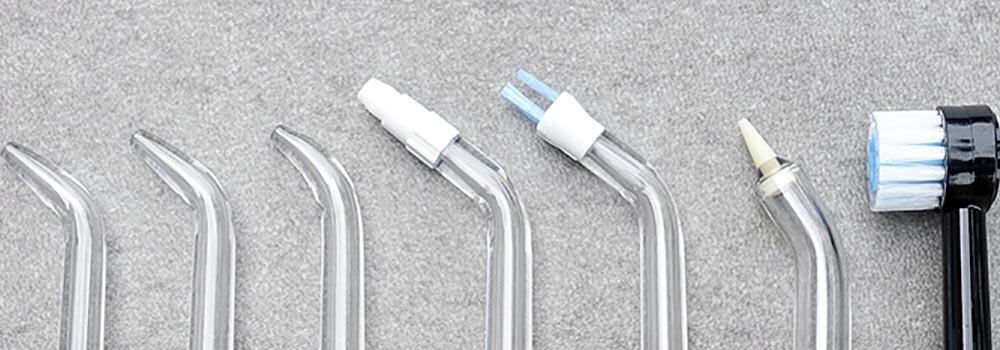
There is only one other style of nozzle the company offers, the TC-100E Tongue Cleaner, which is not included.
It’s the classic jet tip that is best suited to the vast majority of users.
Compared to rivals Waterpik does offer the broadest range of nozzles to suit different needs.
The orthodontic tip has bristles that help clean around fixed braces, brackets and wires.
The pik pocket tip has a soft silicone end which ensures it isn’t rough as it makes contact with the looser gum tissue of users with periodontal pockets.
Those with implants, crowns, retainers and bridges will likely see the best results from the plaque seeker tip.
All of these effortlessly clip in and out of the top of the flosser handle. You’ll get a satisfying click when they are locked into place.
I like that it’s easy for anyone to get up and running immediately because all the tip styles are provided. Yet for the average user, there are going to be lots of tips that will get wasted as they have no use for them. I can’t help thinking it’s a bit wasteful.
Under the lid, to the left hand side, there are 2 holes into which your most used tips can be stored. This is useful if you share a flosser with a family member, for example.
Expensive, but worth it
$110, or thereabouts should be the price you pay for the Waterpik Aquarius, despite the retail price of $120
Unfortunately, there aren't big discounts like there often are on electric toothbrushes.
Over 3 years, the flosser will cost around $128, when factoring in replacement nozzles at about $6 each.
It is much more expensive than string floss or interdental brushes, which can arguably do just as good a job. But, the premium is often worth paying for the convenience a water flosser brings.
As competition goes, there isn’t loads, Waterpik dominates. Philips is the best alternative brand. Their Power Flosser 3000 is comparable.
Most alternative options are about two thirds to half the price of the Aquarius. In fairness, they are comparably featured and often perform well. But they don’t come with the same support and reputation. Replacement nozzles can be harder to source too.
Above average, 3 year warranty included
A 3 year warranty is provided with the Aquarius. It is well above average for a product of this type. Many brands offer 1 or 2 years.
Specializing in water flossers, the company's design and production is pretty spot on, but it’s not possible to guarantee reliability.
My own hands-on hasn’t revealed any reasons to be concerned. Parts appear well constructed etc. We’ve also had few complaints from existing users which is reassuring.
Environmental impact
There's a severe lack of data on the environmental impact of water flossers, but they are likely comparable to electric toothbrushes, which don’t fare at all well according to the research.
But, this doesn’t mean that you shouldn’t use one. They can assist with keeping your mouth healthy, reducing the need for dental treatment and the planetary impacts that come from procedures such as fillings.
As a market leading brand, Waterpik is failing to innovate and lead the charge on doing better for the planet. They have no recycling scheme in place, their warranty period is average and the Aquarius comes with more nozzles than any one user is going to need. Improvements need to be made.
Conclusion: no reason to consider other countertop flossers
String floss is a considerably more affordable method for cleaning in between your teeth. But, if you’re shopping for a water flosser, it’s possible you’ve struggled to turn it into a regular habit.
If that’s the case, then the Aquarius is a more convenient tool worth considering.
It doesn’t have the portability of a cordless flosser, but it offers more customization and you get great plaque removal results.
It is the best countertop water flosser available today.
Size guide
- Water Flosser Height With Nozzle - 29cm / 11.4 inches
- Width - 15cm / 5.9 inches
- Depth/thickness - 13cm / 5.1 inches
- Weight with nozzle (no water) - 813g / 28.7oz
- Package weight - 907g / 32oz
Noise
- 72dB

